You are using an outdated browser. Please upgrade your browser or activate Google Chrome Frame to improve your experience.

100+ Korean Phrases You’ll Need for Smooth Travel
One often-overlooked aspect of preparing for travel is learning a bit of the local language.
While English will get you quite far in South Korea (especially in the bigger cities), nothing can replace learning a little Korean to get around. It can make things easier for you, and the natives will appreciate the effort!
Here’s a list of essential phrases to get you started.
Basic Greetings
Common courtesy, communicating in korean, important places, navigating around, transportation, accommodations, tourist attractions, emergency situations, travel essentials, miscellaneous, and one more thing....
Download: This blog post is available as a convenient and portable PDF that you can take anywhere. Click here to get a copy. (Download)

The bare fundamentals, a simple “Hello” or “Goodbye,” can be much appreciated by any native speaker.
안녕하세요 — Hello
This can be said at any point in the day, and you can reply to this in exactly the same manner.
반갑습니다 — Nice to meet you
If you meet someone, especially someone of importance, you can illustrate your respect with this short phrase.
어떻게 지내세요? — How are you?
잘 지내요 — I am good
A positive response to the above question of “How are you?”
이름이 뭐예요? — What is your name?
This is a polite way to ask, but if you want to be more casual, you can say 이름이 뭐야? instead.
제 이름은 _____ — My name is _____
안녕 / 안녕히 계세요 / 안녕히 가세요 — Goodbye
“Goodbye” comes in different flavors in Korean. 안녕 is informal and should be used for friends and closer acquaintances. 안녕히 계세요 (lit. “Please stay well”) is specifically for when you are leaving the premises, but the other person is staying. Conversely, 안녕히 가세요 (Please leave well) is when you are staying, but the other person is leaving.
좋은 아침 — Good morning
If it’s your first time seeing someone in the morning (up until 11 AM), you can greet them with this since it’s pretty common.
좋은 저녁 — Good afternoon
좋은 저녁 — Good evening
These two phrases aren’t used as much as a general 안녕하세요 (Hello), but you’re more likely to come across them in formal situations, such as a work event.

South Korea holds courtesy in high regard, so you’ll definitely want to learn some ways to express gratitude and respect. Doing so, especially when you’re a foreigner, will help you leave a good impression on those you interact with.
감사합니다 — Thank you
This is a formal, all-around safe way to offer your gratitude . Alternatively, you may say 고맙습니다 .
천만에요 — You’re welcome (formal)
It’s not often that Koreans actually respond to a “Thank you” with a “You’re welcome,” but if you wish to be extra polite, then you can throw in this phrase. Normally, you can respond to thanks with a simple, humble 아닙니다 , which means “It’s nothing.”
실례합니다 (polite) / 잠시만요 — Excuse me
실례합니다 is a very polite phrase used to get someone’s attention, such as for when you approach a stranger for help. 잠시만요 more or less means “Wait a moment” but can be used for situations such as when you need to push past or be a minor physical hindrance to people.
여기요 — Over here
Use this phrase with a raised hand or some kind of physical gesture to get someone to come over to you. This can also be used to flag down a waiter in a restaurant.
죄송합니다 / 미안합니다 — I’m sorry
Used for any situation where you need to excuse your behavior. Both ways of saying sorry are formal and have an almost equal amount of weight (are interchangeable).
[object] + _____ 주세요 — Please give _____
Use this if you’re politely requesting an object from another person. This can be said alone, or follow after you specify what you want.
To learn more about how to be polite in Korean—and listen to how some of the super common situations in this post sound in real life—you can use a learning program like FluentU .
Getting confused is an unavoidable experience when traveling to another country that speaks a different language! By knowing some key vocabulary, though, you can make communication easier.
잘 모르겠네요 — I don’t understand
한국말 잘 못해요 — I don’t speak Korean well
It’s highly likely that you won’t understand every word of Korean you hear, and it’s best to let whoever’s talking to you know that! Many will be kind enough to try and simplify their message for your comprehension.
영어 할 수 있어요? — Do you speak English?
Most Korean natives know some English to be able to help you out in a tough spot, so don’t be afraid to ask!
천천히 말씀해 주세요 — Please speak slowly
다시 한 번 말해주시겠어요? — Can you please say that again?
Korean is a rather quickly-spoken language, especially when the speaker is quite emotional ( Korean dramas , anyone?), so keep these two phrases in mind just in case.
종이에 적어 주세요 — Please write it down
This is essential when you’re asking about the name of a place or getting someone’s phone number.
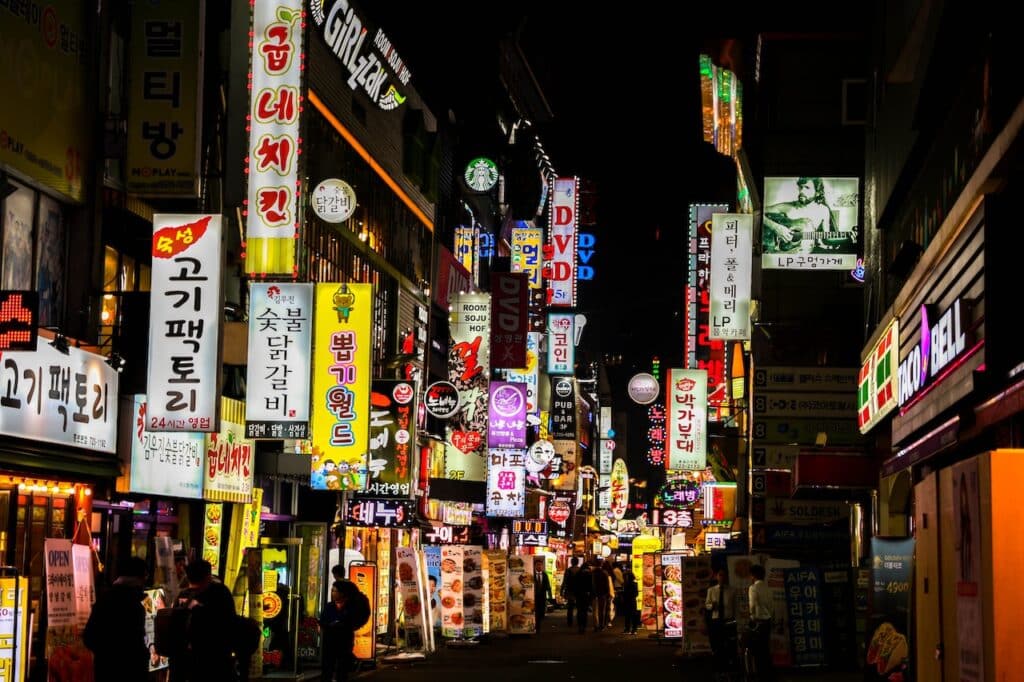
Wherever you’re going in Korea, some of the most helpful vocabulary to know would be place names:
- 지하철역 — Subway station
- 기차역 — Train station
- 버스 정류장 — Bus station
- 공항 — Airport
- 호스텔 — Hostel
- 식당 — Restaurant
- 관광 안내소 — Tourist information center
- 박물관 — Museum
- 시장 — Market
- 약국 — Pharmacy
- 편의점 — Convenience store
- 쇼핑 센터 — Shopping center
Even if you go off-track at some point or lose your way, don’t worry — getting lost can make for a great adventure in your travels and be a perfect opportunity for you to practice your Korean with locals.
왼쪽 / 오른쪽 / 직진 — left / right / straight
북쪽 / 남쪽 / 동쪽 / 서쪽 — north / south / east / west
These direction words are self-explanatory, and if you’re asking for directions, you’ll most definitely be hearing these words. Make sure to be familiar with them so you can at least pick up general directions.
근처에 _____ 이(가) 있나요? — Is there a _____ nearby?
This will tell any native that you’ll need some navigation help. Follow up with something that will indicate where you’d like to go.
_____이(가) 어디인지 아세요? — Do you know where _____ is?
어떻게 _____ 에 가나요? — How do I get to…?
Ask any of these two phrases for specific directions.
_____이(가) 얼마나 먼가요? — How far is _____?
_____ 까지 얼마나 걸려요? — How long does it take to get to _____ ?
It might feel quite different from English, but you’d put the name of the place at the start. You can use the table in the previous section as a reference!
_____ (으)로 가 주세요 — Please take me to _____
If you need a guiding hand, then this will be the phrase to use. You can quickly find people willing to direct you to where you need to go. This phrase can also be used to inform a taxi driver of your destination. (When the place name ends with a consonant, use “으로,” otherwise use “로.”)
화장실이 어디예요? — Where is the bathroom?
Because in the world of travel, being able to find a bathroom is essential. Note that 어디예요 , by itself, means “where is it.”
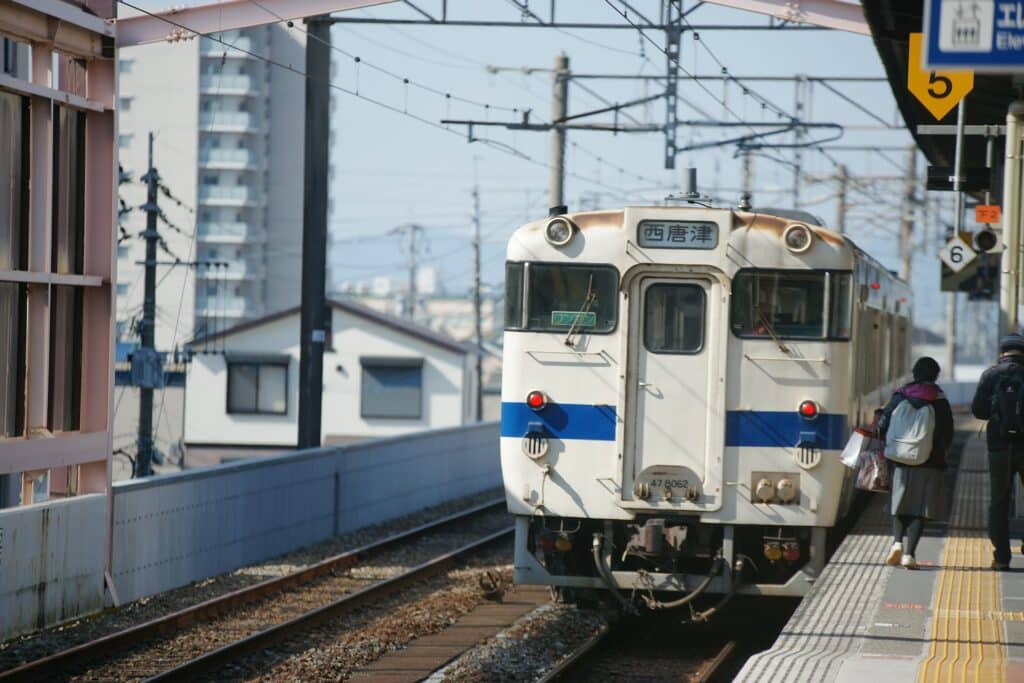
South Korea has a convenient transportation system that also makes it easy to travel from city to city. Here are the main forms of transportation:
- 지하철 — subway
- KTX — high-speed train
These phrases will help you get around:
버스 정류장이 어디에 있나요? — Where is the bus station? 기차역이 어디에 있나요? — Where is the train station? 지하철역이 어디에 있나요? — Where is the subway station?
Bus stations are pretty much everywhere, while subway stations are only in major cities like Seoul, Busan and Daegu. Train stations are inter-city and meant for long-distance trips so they’re a bit more spread out.
표를 예매하고 싶어요 — I want to book a ticket
Aside from a simple ticket, you can also get a transportation card ( 교통 카드 ), which covers both train and bus trips.
표는 어디서 살 수 있나요? — Where can I buy tickets?
Bus or train stations usually have ticket machines, but tickets are available online too, which might be more convenient.
버스가 몇 시에 도착하나요 ? — What time does the bus arrive?
버스는 몇 시에 출발하나요? — What time does the bus depart?
다음 버스는 몇 시에 있나요? — What time is the next bus?
You can replace 버스 (bus) in these sentences with 기차 (train) or 지하철 (subway). For real-time bus or train scheduling updates, locals often check apps like Kakao Map and Naver Map .
[place] + 로 가려면 어떤 버스를 타야 하나요? — Which bus should I take to go to [place]?
이 버스는 _____ (으)로 가나요? — Does this bus go to _____ ?
It’s not uncommon to get lost! The bus system in Korea can be confusing at first because it uses numbers to represent routes.
You’d mainly say this when riding a taxi. For extra politeness, you can add 주세요 , which means “please,” at the end.
택시 요금은 얼마예요? — How much is the taxi fare?
Most taxis use the meter to track payment, but to avoid confusion, it’s best to ask the driver before you get in around how much it’ll cost. Remember too that you don’t have to tip taxi drivers in Korea!
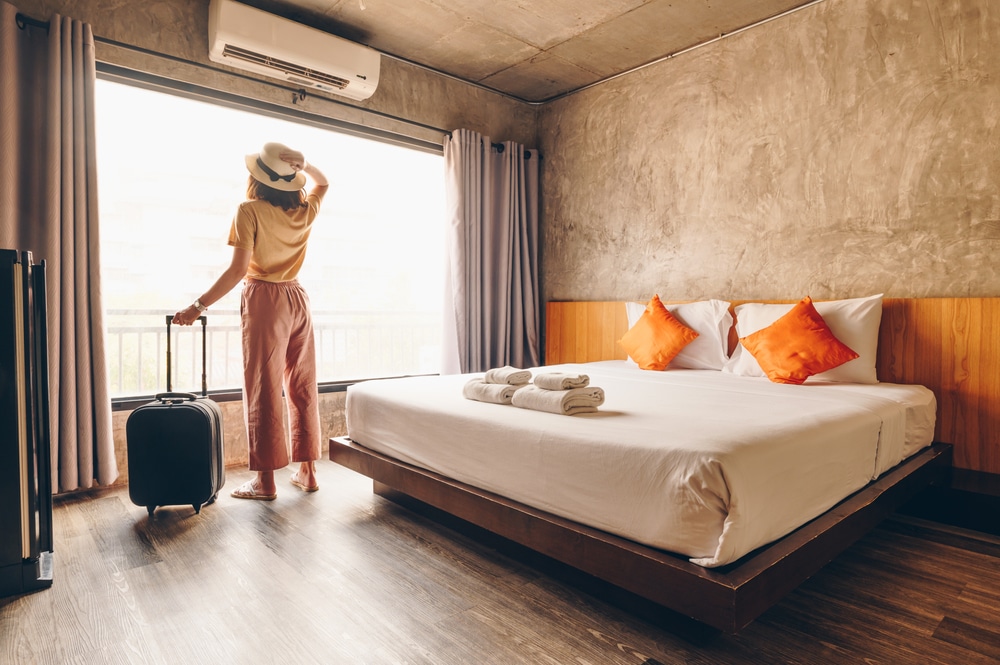
Settle into your accommodations more quickly and move on to exploring with the practical phrases below:
체크아웃 / 체크인 시간은 언제인가요? — What time is check-out / check in?
룸 서비스를 이용하고 싶어요 — I would like to use room service
Depending on the hotel, 룸 서비스 usually means food from the in-hotel restaurant, amenities like towels and blanket and sometimes laundry service.
추가 비용이 있나요? — Is there an additional charge?
Sometimes this isn’t obvious, such as when you’re getting drinks from the minibar.
_____을(를) 추가로 받을 수 있을까요? — Can I have more _____ ?
You can usually ask for items like 타올 (towels), 물 (water), 이불 (blankets), 베개 (pillows), 샴푸 (shampoo), 비누 (soap), 칫솔 (toothbrush) and 치약 (toothpaste).
전기 변압기가 필요해요 — I need an electrical adapter
Most hotels have extra adapters on hand since it’s a common request.
방을 변경하고 싶어요 — I would like to change my room
택시를 부르고 싶어요 — I would like to call a taxi
와이파이 비밀번호가 무엇인가요? — What is the wi-fi password?
Having internet access is pretty much invaluable when you’re in a foreign city, so this is worth remembering not just for hotels, but also for when you’re out and about.
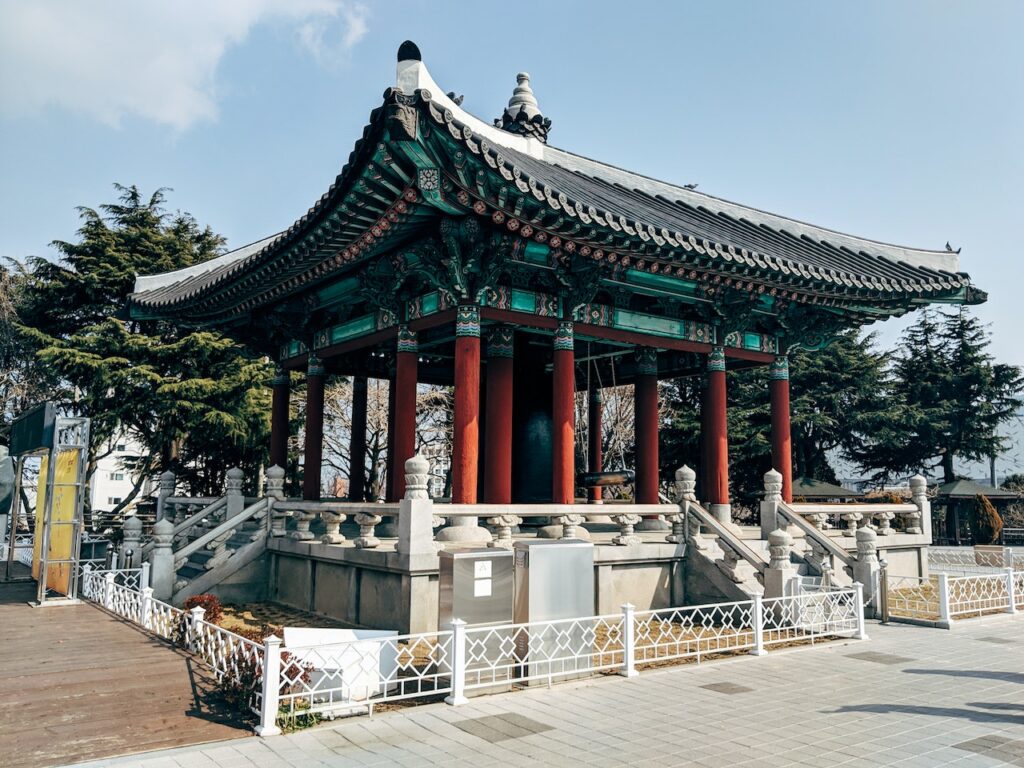
Whether you’re going to a heritage site, museum, theme park or traditional village, these phrases will let you make the most out of your visit.
이곳은 언제까지 열려 있나요? — Until what time is this open?
가이드 투어가 있나요? — Is there a guided tour available?
Major museums, palaces and cultural heritage sites often have guided tours in English, such as Gyeongbokgung Palace ( 경복궁 ) and National Museum of Korea ( 국립중앙박물관 ).
사진 찍어 주실 수 있나요? — Can you take a photo of us?
Unless you have a lengthy selfie stick, you’ll likely have to make this request to strangers. If you’re not sure whether you can take photos, you can ask the staff 사진을 찍어도 되나요? to confirm.
입장료는 얼마예요? — How much is the admission fee?
This works for pretty much any tourist attraction and even performances and concerts.
티켓을 구매하고 싶어요 — I would like to purchase a ticket
_____ 장 주세요 — _____ ticket/s, please
When buying tickets, just place the number before 장 주세요 . For example, for one ticket, you’d say 한 장 주세요 , while for two or three tickets, it’d be 두 장 주세요 or 세 장 주세요 respectively.
할인 티켓이 있나요? — Do you have any discounted tickets?
어린이 요금이 어떻게 되나요? — What is the children’s fare?
경로 요금이 어떻게 되나요? — What is the senior’s fare?
If you’re buying tickets as a group or you’re with children or seniors (60 years old and above), you might get a discount.
안내 지도를 얻을 수 있을까요? — Can I get a map?
명소를 추천해 주실 수 있나요? — Can you recommend some attractions?
근처에 추천해 줄 식당이 있나요? — Can you recommend any restaurants nearby?
Asking locals for recommendations can point you to cool spots that you won’t find easily online, and they might give you practical tips too.

South Korea is a food-lover’s paradise . On every street, you’ll find indoor and outdoor food venues, selling everything from traditional Korean meals to trendy snack foods. These phrases will help you when you’re up for some indulgent dining .
_____ 주세요 — Please give me _____
To order your meal, simply state it and tack on 주세요 afterwards. Short and simple!
메뉴 주세요 — Menu, please
More often than not, Korean restaurants won’t have the menu out on the tables. To get one, simply raise your hand and state this phrase.
계산서 주세요 — Bill, please
Waiters in Korean restaurants often will not personally ask if you’ve finished your meal, so once your stomach is satisfied and you’re ready to head out, ask for the bill!
싸 주세요 — Please wrap / It’s to-go
If you want wrapped leftovers, you definitely have to let your servers know as they probably will assume otherwise. Note that you’ll likely only get your meal, not any side dishes, packed up.
제가 알레르기가 있어요 — I have an allergy
If you have an allergy, then you must say so, preferably in Korean so that they know exactly what to exclude.
어떤 음식을 추천하시나요? — What food do you recommend?
Asking for the staff’s recommendations is one of the surest ways to try what’s good in a restaurant.
영어 메뉴가 있나요? — Is there an English menu?
Restaurants that get plenty of travelers are likely to have English menus.
좀 덜 맵게 해 주세요 — Please make this dish less spicy
Korean food can be quite spicy, so you can make this request if you prefer milder flavors. To minimize the spiciness, you can even say 안 맵게 해 주세요 — Please make this dish not spicy.
예약했어요 — I made a reservation for a meal
따로 계산해 주세요 — Please separate the bill.
This is for when you want to split the bill and get separate receipts for less hassle.
물 한 잔 주세요 — Please give me a glass of water
A lot of Korean restaurants have water stations or dispensers so you can get water whenever you want. In case there’s none, though, you can ask the staff directly since it’s usually free.
얼마나 기다려야 하나요? — How long do I have to wait ?
Thankfully, once you’re at the table, 반찬 or side dishes tend to be served pretty quickly, so you can munch on something while waiting for your order.
젓가락 하나 더 주세요 — Please give me an extra pair of chopsticks
숟가락 하나 주세요 — Please give me a spoon
Chopsticks and spoons are the main utensils in restaurants in Korea. Note that 포크 or forks are less common in traditional restaurants!
Since eating out is likely going to be a major part of your itinerary, here are some more survival Korean expressions for ordering food:

With its plethora of food establishments, South Korea also has a huge variety of shopping outlets. You definitely won’t get bored by what’s available for purchase, so you’ll want to know what exactly to say when something catches your eye and makes you reach for your wallet.
_____ 있어요? — Do you have _____?
얼마예요? — How much is it?
It’s highly recommended to know how numbers work in Korean , as there are two distinct systems that are used in different contexts. However, if you’re not overly familiar with them, it’s probable that the cashier will be able to tell you the price in English.
카드 받으세요? — Do you take credit cards?
South Korea has a high credit card usage rate, so you shouldn’t have a problem if you’re strapped for cash and only have your card on hand.
환불해 주세요 — Please give me a refund
Be prepared with a good reason for your request! Even if you’re a foreigner, you’ll still need to explain yourself (and explain well!) to the store employee.
교환해 주세요 — Please give me an exchange
If your shopping purchase is damaged or needs to be switched to fit your needs, then use this phrase to notify the employee. You shouldn’t have a hard time with this request, especially if you have a valid reason.
할인해 주실 수 있나요? — Is there a discount?
You never know when there might be a sale or promo!
이거 더 작은 사이즈로 있나요? — Do you have this in a smaller size?
이거 더 큰 사이즈로 있나요? — Do you have this in a bigger size?
Korea’s size system for clothes can seem very familiar at first because it also uses letters like S, M and L. Sizes can be different from those in other countries, though, so you’ll definitely want to try on the clothes first before buying them! Some stores have free alteration services too.
피팅룸은 어디에 있나요? — Where are the fitting rooms?
이거 살게요 — I’ll buy this
When you’re done at the fitting room and you’re satisfied with the clothes, then you can let the store employee know.

In the event that an urgent situation pops up and you’re in need of direct, quick help, you’ll need some quick phrases to get proper attention.
도와주세요! — Help!
A straightforward call for assistance. This literally means “Give me help,” to which a proper response might be 도와줄게요 , which means “I will give you help.”
긴급 상황이에요 — It’s an emergency
Whatever the nature of your problem, this phrase will get you rapid assistance. Consider who exactly you need to help you, whether it’s the police or the paramedics, for example.
경찰 / 경찰을 부르세요 — Police / Call the police
It’s helpful to know that in South Korea, the phone number to contact the police is 112. But in case you don’t have a phone or are in quick need of legal service, saying the above phrase to a native will most likely get the help you need.
병원 — Hospital
If you say this phrase alone to a native, that could be enough of an alert for them to aid you. If you need quick medical attention and know you need care at a hospital, then use this phrase.
여기가 아파요 — It hurts here
This is useful for any injury you receive that needs to be treated. Along with this phrase, point to where exactly you feel pain.
의사가 필요해요 — I need a doctor
Along with the word for hospital, this is good to know if there’s ever a possibility that you need professional care. It’s possible someone will call an ambulance for you, should the situation be dire, but you should also know that the Korean phone number for the fire brigade and ambulance services is 119.
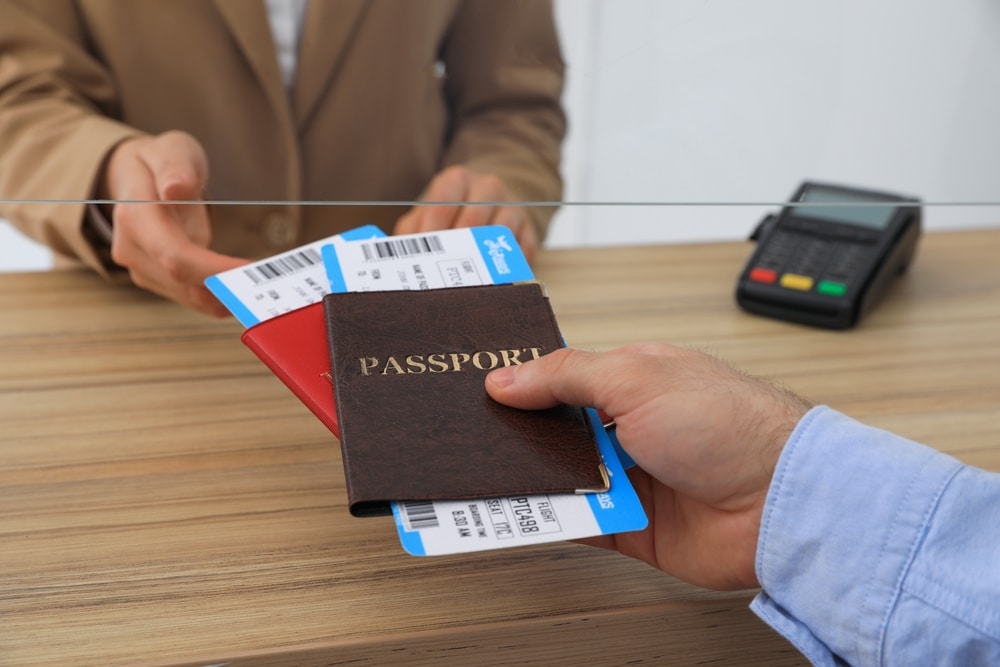
Your passport is the most important document to have while traveling, so here’s some helpful vocabulary:
여권 — Passport
This can be useful to know how to say in Korean because some places — like hotels and bars — might look for your passport. A related word is 비자 (visa).
여권 잃어버렸는데, 보셨나요? — I lost my passport, have you seen it?
Fingers crossed that this won’t actually happen! If you lose something else, you can replace 여권 (passport) in this sentence. Other valuables are 지갑 (wallet), 핸드폰 (mobile phone), 신용카드 (credit card) or 가방 (bag).
[Your country] 대사관은 어디에 있나요? — Where is the… embassy?
If you lose your passport or get visa-related issues, then you’ll have to head to your country’s embassy in Korea.
환전소는 어디에 있나요? — Where is the currency exchange?
Aside from banks, you can get currency exchange done at the airport, hotel and major shopping centers. Look for signs that say 환전 or 외화 교환 , which both mean currency exchange.

Here are some phrases you may hear anywhere, anytime, and aren’t necessarily attached to any one context.
화이팅! / 파이팅! — Fighting!
Slang used for encouragement, you can passionately exclaim this to boost one’s morale. It’s usually accompanied nu a firm shake of the fist.
괜찮아요 — It’s okay
The equivalent to the English “It’s fine.” You can say this in a multitude of situations, such as expressing the state of your physical health or accepting a certain circumstance.
진짜요? — Really?
Just in case you need some extra affirmation about something. This phrase is also commonly used as an exclamatory statement.
안 돼요 — It doesn’t work/It cannot (be)/No way
This phrase differs slightly in meaning depending on the context. You can use it for a variety of situations, from talking about a dysfunctional washing machine to adamantly denying a particular circumstance.
재미있어요 — It’s fun
Of course, if you’re having fun and want to say so, then by all means you should! This phrase will be relevant quite frequently while you’re out and about adventuring in Korea.
With these phrases as part of your mental luggage, you’ll be more confident and have a more satisfying trip to Korea.
Safe travels, or as you would say in Korean, 여행 잘 하세요, 조심해서 가세요 !
If you enjoyed this post, you're already halfway to having the time of your life learning Korean with FluentU !
FluentU makes it possible to learn with K-pop videos, funny commercials, entertaining web series and more. Just a quick look will give you an idea of the variety of FluentU videos on offer :

FluentU really takes the grunt work out of learning languages, leaving you with nothing but engaging, effective and efficient learning. It's already hand-picked the best videos for you (which are organized by level and topic), so all you have to do is simply choose any video that strikes your fancy to get started.
Each word in the interactive captions comes with a definition, audio, image, example sentences and more.

Access a complete interactive transcript of every video under the Dialogue tab, and easily review words and phrases from the video under Vocab .

You can use FluentU’s unique Quiz Mode to learn the vocabulary and phrases from the video through fun questions.

FluentU keeps track of what you're learning, and tells you exactly when it's time for review, giving you a 100% personalized experience .
Review sessions use video context to help embed the words in your memory.
Start using the FluentU website on your computer or tablet or, better yet, download the FluentU app from the iTunes or Google Play store. Click here to take advantage of our current sale! (Expires at the end of this month.)
Enter your e-mail address to get your free PDF!
We hate SPAM and promise to keep your email address safe

- Affiliate Disclaimer
- Privacy Policy

80+ Basic Korean Travel Phrases – Phrases to Learn Before Visiting Korea

Getting around Korea these days is pretty easy – even if you know now Korean at all. There is a large amount of English signage, most menus have English captions, and many locals know at least basic English. It’s entirely possible to visit Korea without knowing any Korean.
However, knowing at least some basic Korean phrases will make your trip much easier. It’s also much more polite – if you’re visiting Korea you should at least try to learn and use some basic phrases. Not only that, but often locals will be impressed and very happy if you speak Korean – even if it’s only the simplest Korean!
Something that many people don’t realise is that learning the Korean alphabet (hangul) is actually extremely easy. If you set aside a few hours you can easily learn how to read. There are also some fantastic platforms out there to help such as 90 Day Korean and How To Study Korean .
If you don’t have the time to learn some basic Korean or would prefer to just know the vital Korean travel phrases, then this post is for you. In it, I cover basic phrases that you need to know. Everything from basic introductory phrases to asking if food is vegan is covered!
This article contains affiliate links. Affiliate links provide me with a percentage of purchases made from links on this page. This comes at no extra cost to you – for more information, please refer to my affiliate disclaimer .
Please note that the Korean examples in this article may not be totally grammatically correct. While all of the sentences and phrases in this article make sense and will be understood, some of them aren’t perfect. This was done in order to make the phrases as easy to use as possible. It’s better to get an understandable sentence across than to worry about all of the details.
On top of this, Korean has respect levels that are very important to take into account. To avoid complications, I have only used the formal/semi-formal versions of words and phrases in this article. You can say all of these phrases without worry – it’s better to speak only formal than only informal!

Korean Sentence Structure
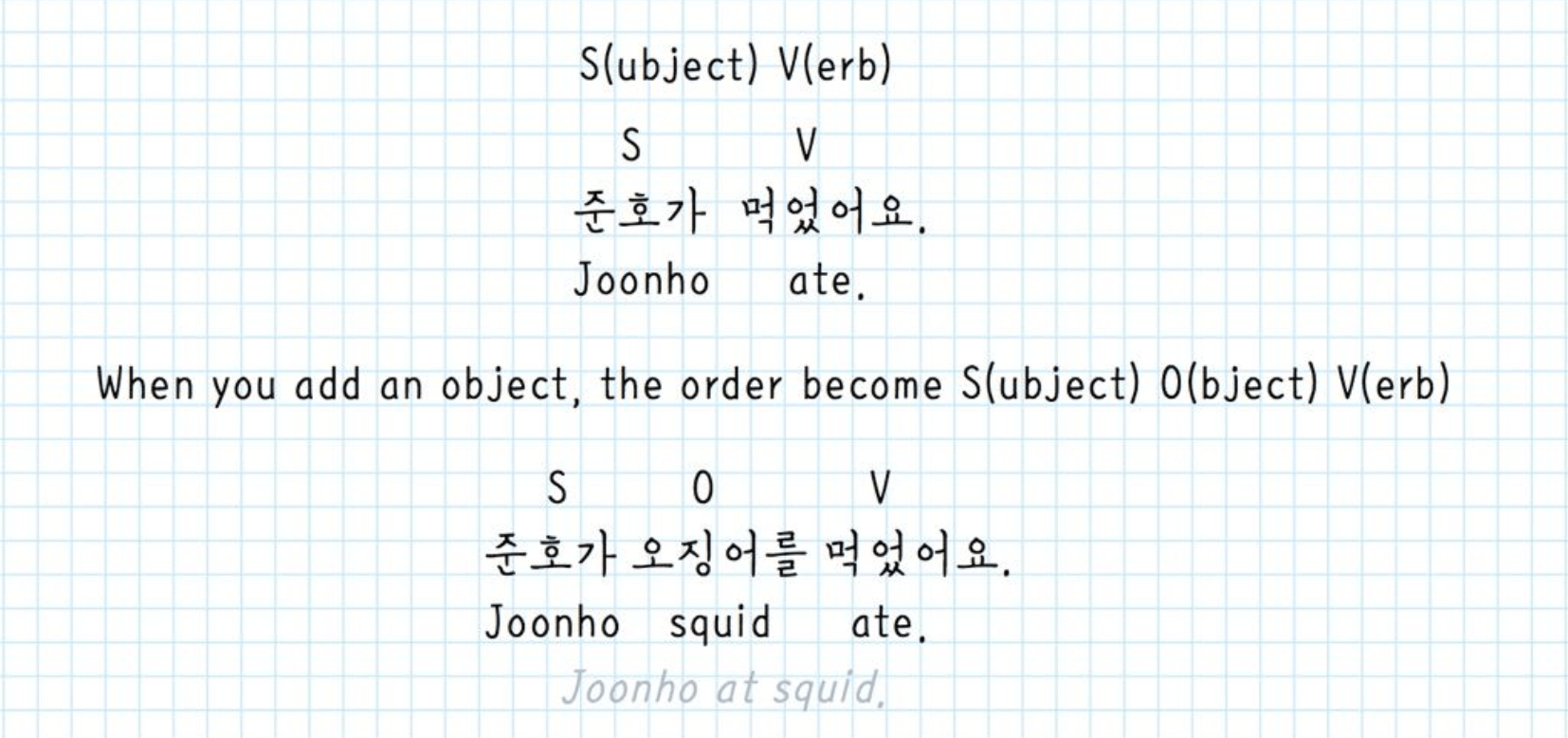
Image from this fantastic guide .
Before getting into the essential Korean travel phrases that you need to know, I want to briefly touch on Korean sentence structures. I am not a language expert and I don’t want to go too in-depth here, but I would like to mention the structural differences as it will help a lot throughout this article. If you do want to learn about Korean sentences in-depth, check out Glossika .
English follows the SVO (subject, verb, object) structure. In other words, an English sentence is formed like this:
I walked to school – I (subject) walked (verb) to school (object)
However, Korean sentences are formed using the slightly different SOV (subject, object, verb) structure. This can take a while to get used to and even today I forget sometimes!
저는 학교에 걸어요 – 저는 (subject) 학교에 (object) 걸어요 (verb) – I (subject) school (object) walked (verb).
This is a very simple sentence and in reality the differences are much more complex. However, knowing this difference will greatly help with your understanding of Korean in the future! It will also help to explain a lot of the sentences in this article.
Korean Phrases For Travel
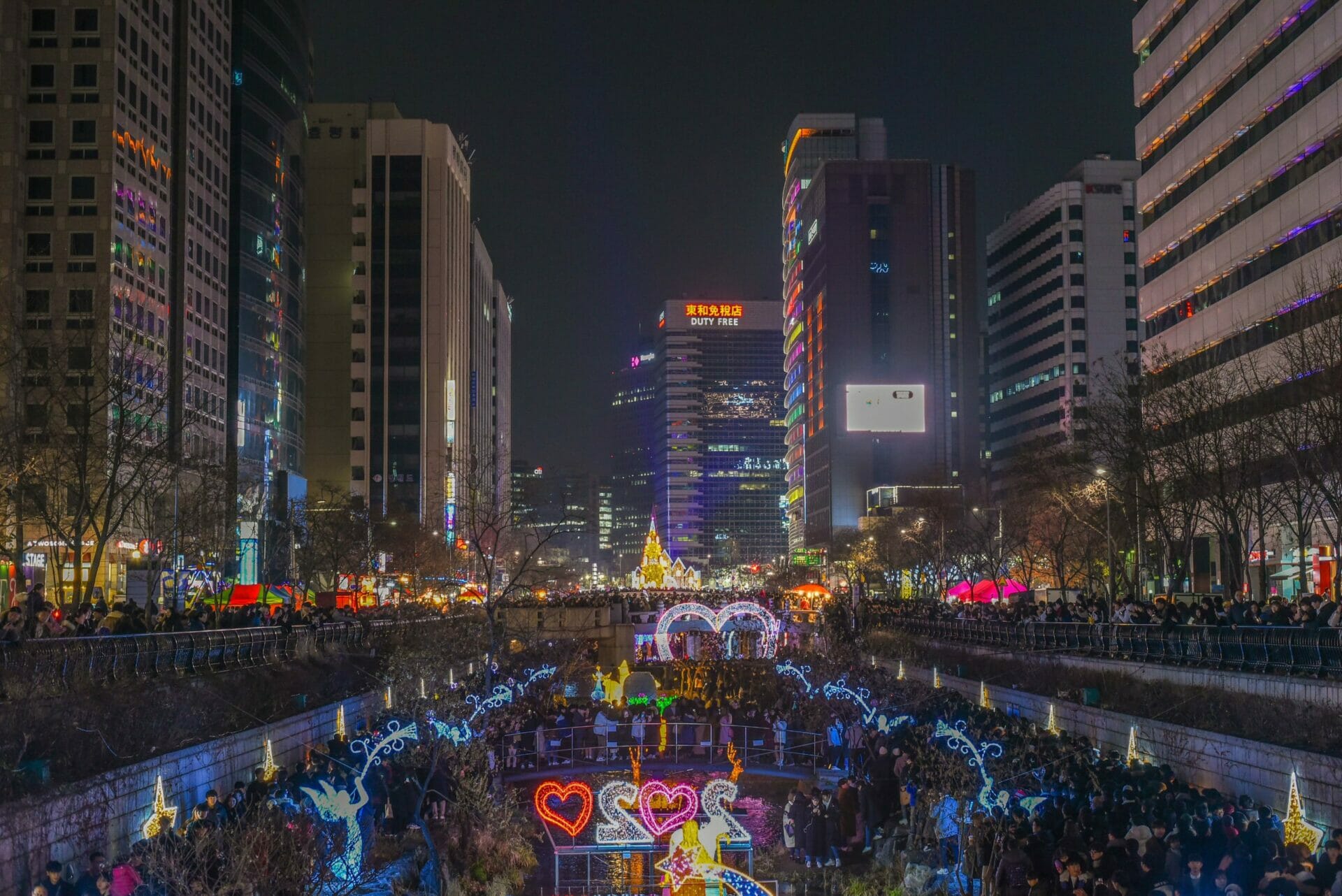
Basic Korean Introduction Phrases
1. Hello – 안녕하세요 – Ahn-yeong-ha-sae-yo
Hello – an essential in every language! 안녕하세요 (Ahn-yeong-ha-sae-yo) is a word that you will hear every day. It’s worth noting that while you should use 안녕하세요 for all adults, you can say 안녕 (ahn-yeong) to children or animals (if you sometimes say ‘hi’ to dogs like me!). This is the lower-formality level of ‘hello’.
Two interesting points about 안녕하세요. Firstly, it’s not used on the phone. If you are answering the phone, you should use 여보세요 (yeo-bo-sae-yo). However, make sure to only use it on the phone! Secondly, when entering restaurants, convenience stores, or other areas you will often hear 어서 오세요 (eo-seo o-sae-yo). This means ‘welcome’ and you can reply to it by saying 안녕하세요!
2. Goodbye – 안녕히 가세요/안녕히 계세요 – ahn-yeong-hi ga-sae-yo/ahn-yeong-hi gye-sae-yo
This is an interesting one as it often confuses people who are new to Korea. Korea’s standard goodbye has two forms, one for the person who is leaving and one for the person who is staying. For example, if you visit a friend’s house you would say 안녕히 계세요 when it’s time to leave (as you are leaving). They would say 안녕히 가세요 as they are staying.
안녕히 가세요 (ahn-yeong-hi ga-sae-yo) is for the person staying. However, if both people are leaving (say you went to watch a movie together and are now departing back to your houses) then both parties would say 안녕히 가세요. This may seem a bit confusing at first, but you’ll quickly get used to it!
3. Nice to Meet You – 만나서 반갑습니다 – Man-na-seo ban-gap-sueb-ni-da
This is the most common way to say ‘nice to meet you’ that you will find in Korea. 만나서 반갑습니다 (Man-na-seo ban-gap-sueb-ni-da) is very common and can be used whenever you are meeting someone for the first time. Some people will also just say 반갑습니다 – really, it’s up to you as either is fine.
4. My Name Is (name) – 제 이름은 (name)입니다 – Je ee-reum-eun (name) ib-ni-da
If you want to introduce yourself and tell someone your name you can simply put your name in the sentence 제 이름은 (name)입니다 (Je ee-reum-eun (name) ib-ni-da). For example, in my case I would say 제 이름은 Ethan입니다. Or, if I wanted to make it easier to pronounce I would say 제 이름은 이든입니다 (이든 = E-deun, or Ethan!)
5. I am from (country/city) – 저는 (country/city) 에서 왔어요 – jo-neun (country/city) ee-seo wass-eo-yo
If you want to tell someone where you are from then you can use the basic phrase 저는 (country/city) 에서 왔어요 (jo-neun (country/city) ee-seo wass-eo-yo). Korean tends to have its own words for countries, but cities usually have very similar names! I have included a table below with some countries – if I missed your country I am sorry, I had to keep the table somewhat manageable…
For me, I am from New Zealand. To tell someone where I am from I would simply add the word for New Zealand (뉴질랜드 – nyu-jil-laen-deu) to the sentence 저는 (country/city) 에서 왔어요. This would make my sentence 저는 뉴질랜드에서 왔어요
Korean Country Words
6. I am (age) years old – (age)살 입니다 – (age)sal ib-ni-da
There are a few different ways to introduce your age in Korean, but the simplest way is to say (age)살 입니다. What makes this a little bit more complicated is that you need to know a few Korean numbers – and Korea has two different counting systems. Luckily, you only need to know one for age. I have included the table of all numbers up to 100 below!
If you want to make a number like 27 just combine 20 (스물) with 7 (일곱). For example, 스물(20)일곱(7)살 입니다. Or, in English, I am 27. The same goes for every other number. If you happen to be an age that is a multiple of 10 you can just use the words directly from the table below.
Korean Numbers
8. How are you? – 어떻게 지내세요? – eo-tteoh-gae ji-nae-se-yo?
How are you (어떻게 지내세요) is a word that you probably won’t want to use when visiting Korea. However, I know people will ask so I included it. With that being said, you shouldn’t use it unless you are meeting an old friend.
The phrase ‘how are you’ is not something that is really used in Korea – and definitely not with strangers. If you are meeting a friend who you have met before, however, it’s okay to ask. While 어떻게 지내세요 is a more direct translation, 잘 지내세요 (jal ji-nae-se-yo) is more commonly used and it literally means ‘have you been well?’.
9. I am (profession/job) – 저는 (profession/job)입니다 – joe-neun (profession/job) ib-ni-da
If you want to express your profession or job then 저는 (profession/job)입니다 is the easiest Korean phrase to use. You can put a variety of words in the gap. For me, I usually put the word ‘student’ there as I am a student at Korea University ! The word for ‘student’ is 학생 (hag-saeng), so I would say 저는 학생입니다. I’ve included a short table with some common jobs below!
Korean Professions
10. I’ve been in Korea for (time) – 한국에 온 지 (time) 됐어요 – han-gug-ae on ji (time) dwaess-eo-yo
Whether you’ve been in Korea for one month, one week, one day, or even only one hour you might want to tell someone! This sentence is a little bit more complicated as you also need to know some words like hour, day, week, month, and year. However, the basic sentence structure is 한국에 온 지 (time) 됐어요.
To use this sentence properly you will want to say 한국에 온 지 (number + counter) 됐어요. For example, if you have been in Korea for one week you will want to say the number 1 (일) + the word for week (주) therefore, the complete sentence would be 한국에 온 지 일주 됐어요.
Korean Time Words
11. I study (major) – 제 전공은 (major)입니다 – je Jeon-gong-eun (major) ib-ni-da
This one might seem a bit unusual at first, but if you are younger you will likely be asked what you study or what your major is. Education is very important in South Korea, and you can expect to see and hear a lot about it. For that reason, knowing how to say your major is very helpful!
There are a ton of majors and I can’t include them all. However, I’ve included some common majors below. To complete the sentence, simply insert your major in 제 전공은 (major)입니다. For example, if you study political science (정치학 – jeong-chi-hak) then you can say 제 전공은 정치학입니다!
Korean University Majors

General Korean Phrases
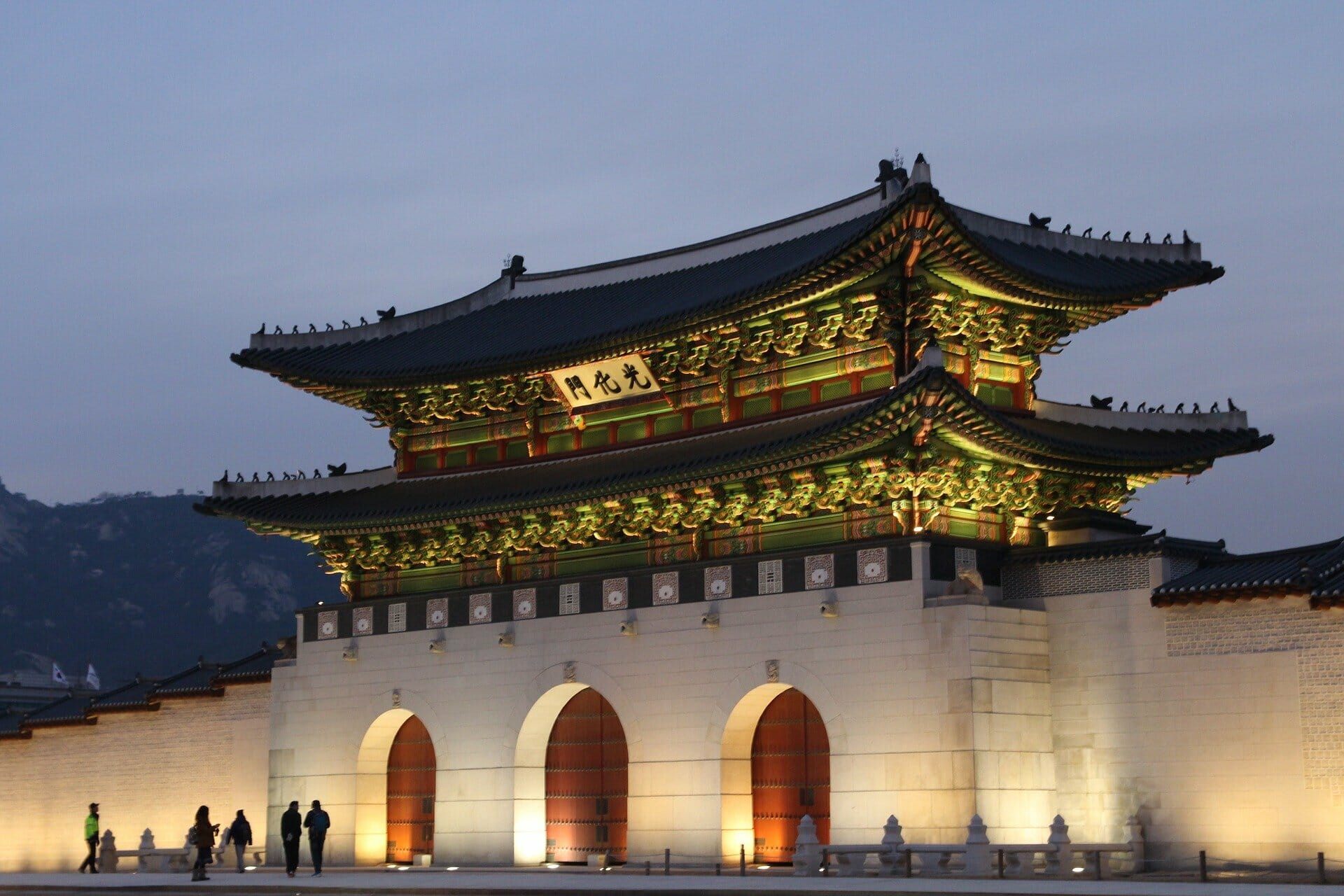
12. Yes – 네 – ne
Yes, or 네 in Korean is a word that you definitely should know (it’s also worth knowing ‘no’!). While there are many ways to say yes, 네 is the most common. The term most simply means yes and shows agreement. While all you need to know is 네, you may also see 예 (ye). This is very handy because it sounds similar to ‘yeah’ in English and it’s also formal!
13. No – 아니요 – a-ni-yo
아니요 simply means no! There’s not much more to it.
14. Thank you – 감사합니다 – gam-sa-hab-ni-da
감사합니다 is the most common form of ‘thank you’ that you will hear every day in Korea. You can use it in almost all of the same situations that you would in English. However, foreigners in Korea tend to use it a lot more than locals.
15. Excuse me – 실례합니다 – sil-lye-hab-ni-da
If you find yourself in a situation where you need to say ‘excuse me’, for example, if you need to push past someone on Seoul’s fantastic public transport , you can simply say 실례합니다!
16. I understand – 알겠습니다 – al-gess-seub-ni-da
알겠습니다 shows that you have understood something or that you agree with it. For example, if you were to ask for directions you could say 알겠습니다 to show that you have understood what the other speaker said.
17. I don’t understand – 잘 모르겠어요 – jal mo-reu-gess-eo-yo
If you don’t understand something that someone has said, you can say 잘 모르겠어요! This simply indicates that you don’t understand what the other person is saying or has said.
18. Wait a second – 잠시만요 – jam-si-man-yo
잠시만요 is one of my favourite Korean words. It’s extremely useful and means something along the lines of ‘wait a second’ or ‘wait a minute’. If you need a minute to look at the menu before ordering, or if you need a second to get out your phone to translate a word, you can say 잠시만요!
19. I don’t speak Korean – 전 한국말 할 줄 몰라요 – jeon han-gug-mal hal jul mol-la-yo
20. Do you speak English? – 영어 할 줄 아세요? – yeong-eo Hal jul a-se-yo
21. I like (thing) – (thing) 좋아해요 – (thing) joh-a-hae-yo
If you would like to say that you like a thing, person, or otherwise, you can just add 좋아해요 after any word! If you don’t know the name of the item, but can see it, you can say ‘이것 좋아해요’ (I like this).
22. I don’t like (thing) – (thing) 좋아하지 않아요 – (time) joh-a-ha-ji ahn-a-yo
On the other hand, you can also say that you don’t like something by putting any word before 좋아하지 않아요. This does not mean that you hate something, just that you don’t like it.
23. Please give me (item) – (item) 주세요 – (item) ju-se-yo
주세요 is a very important word and probably one of the five most important Korean words to know before coming to Korea. It simply means ‘give me’ and you can use it after almost any word. While in English ‘please’ is often said, you can omit this in Korean.
주세요 will be covered in more detail in the cafe & restaurant phrases section as it’s very important in those cases!
24. Are you okay? – 괜찮아요? – gwaen-chan-a-yo?
When asking someone if they are okay, you can 괜찮아요? To make it a question, just raise your intonation towards the end of the word. The ‘yo’ at the end of the word should be emphasised to turn the word into a question. Otherwise, it just means ‘I am okay’.
25. I am okay – 괜찮아요 – gwaen-chan-a-yo
26. I am sorry – 죄송합니다 – chwae-seong-hab-ni-da
27. I don’t know – 몰라요 – mul-la-yo
28. Good – 좋아요 – joh-a-yo
While 좋아요 usually means ‘good’ it can also be used to show agreement. For example, if your friend asks you if you want to go to the cinema to see a movie you can reply simply with ‘좋아요’. This means ‘good!’ but in this case can be interpreted as ‘yes!’
29. Take care – 잘 지내세요 – jal jin-nae-se-yo
This means ‘live well’ and it isn’t often used in the same situation that ‘take care’ is in English. However, you may still want to use it and it is probably the closest translation of ‘take care’. If you won’t be seeing someone for a long time, 잘 지내세요 is a nice phrase to use.
30. What is this? – 이게 뭐예요? – I-ge mwo-ye-yo?
A very universal phrase, 이게 뭐예요 can be used to ask what anything is! Just make sure to also point at the thing in question to make sure that you are understood.
Korean Phrases for Restaurants & Cafes
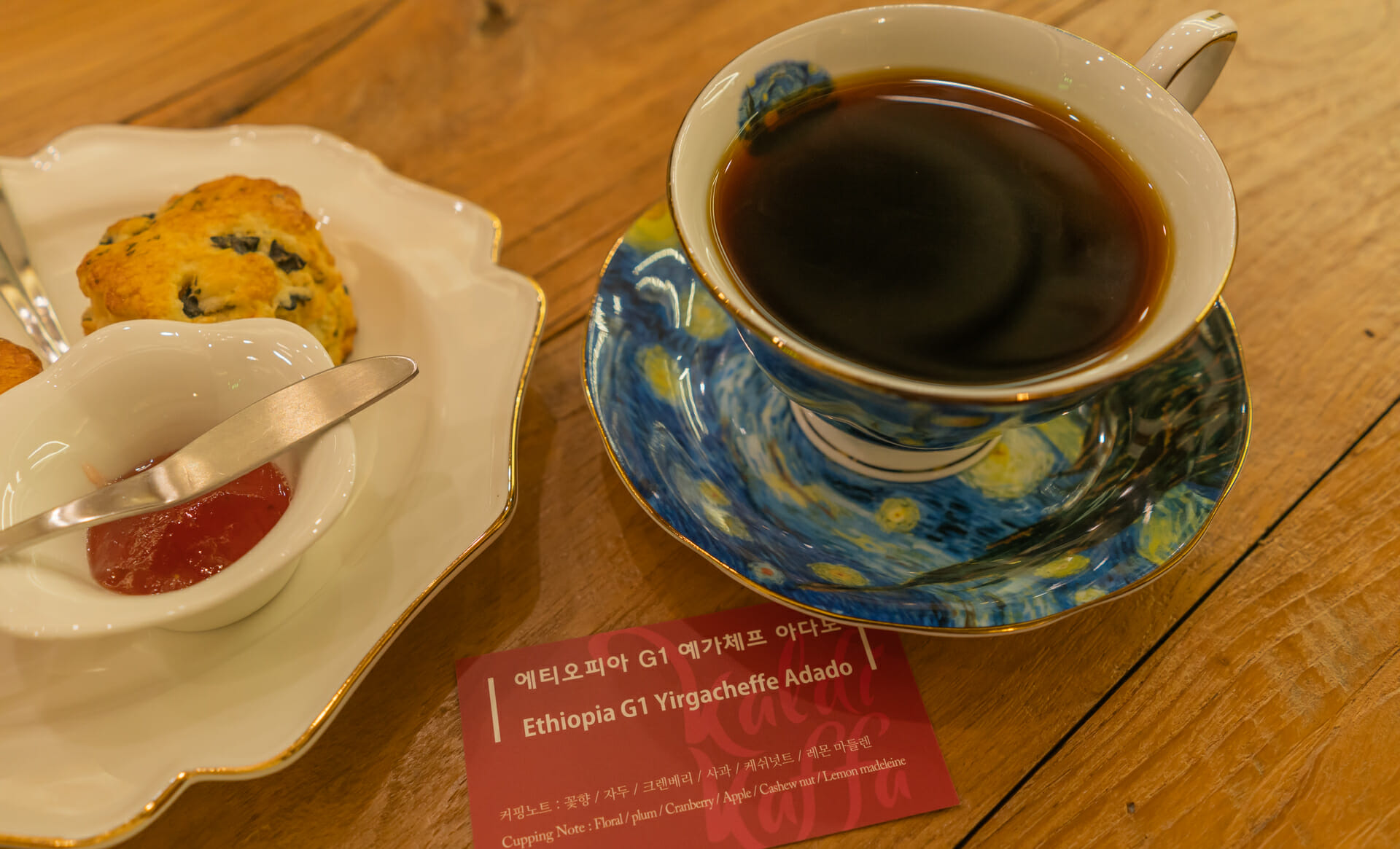
The below three sentences will allow you to ask if a cafe or restaurant has an item or dish. If they do, you can then go ahead and ask to order it! Korea has a fantastic coffee culture , so I highly recommend checking out some of the fantastic cafes in Seoul and other cities .
31. Can I have (item)? – (Item) 주세요 – (Item) ju-sae-yo
주세요 simply means ‘give me’. However, while this may not should polite in English it’s the normal way to ask for something in Korean. You can use 주세요 with anything that you need at a cafe or restaurant.
32. Do you have (item)? – (item) 있나요? – (Item) iss-na-yo
Before asking for an item, you might want to ask if that store, restaurant, or cafe actually has it! For example, you can ask 라떼 (la-ddae) 있나요? in a cafe to ask if they sell lattes!
33. How much is (item)? – (item) 얼마에요? – (item) eol-ma-e-yo
‘How much is this’? is an extremely useful term. If you are unsure of the word for the item that you are asking about, and if the item is visible, you can just point at it and ask ‘이것 (I-goet) 얼마에요?’ which means ‘how much is this’?
Can I have (drink) – (drink) 주세요
Luckily, you will notice that nearly all Korean coffee words are very similar to their English counterparts.
Can I have (item) – (item) 주세요
If you want more of something but you don’t know the word, you can just point at what you want more of and say 이것 더 주시겠어요? (I-goet deo ju-si-gess-eo-yo – can I have more of this?).
34. I would like (size/flavour/etc) – (size/flavour/etc) 주세요 – (size/flavour/etc) ju-sae-yo
Similar to asking for an item or product in the tables above, you can also use 주세요 to ask for a specific flavour or size (and much more) of an item.
35. To go/take out – 포장해주세요 – po-jang-hae-ju-sae-yo
If you want a coffee or some food to go then just use the phrase 포장해주세요! The server will instantly know that you want the product to go. Further, if you are using an ordering machine and you see the phrase it means that you are ordering to go.
36. I will eat here – 여기서 먹고 갈게요 – yeo-gi-seo meog-go gal-ge-yo
On the other hand, if you want to eat/drink in you can 여기서 먹고 갈게요 to show that you intend to enjoy your meal/drink there!
37. Do you accept cash? – 현금 결제 되나요? – hyeon-geum gyeol-je dwi-na-yo
Some places in Korea may only accept cards or mobile payments. If you are wondering if somewhere accepts cash, just ask 현금 결제 되나요? Alternatively, you can ask if a location accepts cards by asking 카드 (ka-deu) 결제 되나요?
If you are enjoying drinking on a night out you can say 건배 to mean cheers! While it’s not as common to say this in Korea, it can be handy to know.
38. Can I have the menu? – 메뉴판 좀 보여주시겠어요? – me-nyu-pan jom bo-yeo-ju-si-gess-eo-yo
While you normally won’t need to ask for the menu (often it will be already given to you or can be found on the wall), you can use 메뉴판 좀 보여주시겠어요? if needed.
39. Is this spicy? – 이게 맵나요? – I-ge maeb-na-yo
40. Make it not spicy – 안 맵게 해주세요 – an maeb-ge hae-ju-se-yo
If you want something to be specifically not spicy you can ask 안 맵게 해주세요 (essential please make it not spicy). If you a less spicy option (but potentially still spicy) you can say 덜 맵게 해주세요 (deol maeb-ge hae-ju-se-yo).
41. Does this have (food) in? – 여기에 (food) 이 들어있나요? – yea-gi-e (food) i deul-eo-iss-na-yo
If there is a specific food that you are trying to avoid eating, or perhaps that you are allergic to, you can ask 여기에 (food) 이 들어있나요? Just put the ingredient/food that you are wondering about in the gap.
42. I am allergic to (food) – 저는 (food) 알레르기가 있어요 – joe-neun (food) al-le-leu-gi-ga iss-eo-yo
If you want to let a restaurant or cafe know that you are allergic to something you can insert the food/ingredient from the table below into the blank.
Does this have (food) in (common allergies/foods that are avoided)
43. Is this (halal/vegan) – 이게 (halal/vegan) 인가요? – I-ge (halal/vegan) in-ga-yo
If you have specific dietary needs then you can use the words below and put them in the gap. For example, if you are looking for vegan food you can ask 이게 채식 인가요?
44. Do you have (halal/vegan food)? – (halal/vegan food) 가 있나요? – (halal/vegan food) ga iss-na-yo
If you would like to ask a restaurant if they have halal, vegan, vegetarian, or dairy-free food you can use the sentence _ 가 있나요? with a word or phrase from the table below.
Is this (halal/vegan/dairy free)
45. Hey, excuse me! – 저기요 – Jeo-gi-yo
저기요 is a combination between ‘hey’ and ‘excuse me’ that should only be used in restaurants when you need service. If you are wanting to order more food, need a fork, or otherwise, you can call a waiter by yelling out 저기요!
잠시만요 (jam-si-man-yo) which literally means ‘wait a minute’, and 여기요 (yeo-go-yo, literally ‘here’) also work when you are in need of service.
46. I would like this – 이것으로 주세요 – I-goet-eu-ro ju-se-yo
If you want something that is in a cabinet or on the menu you can simply point to it and say 이것으로 주세요! I would like this!
47. What’s in this? – 여기 뭐가 들어갔나요? – yeo-gi mwo-ga deul-eo-gass-na-yo
여기 뭐가 들어갔나요 can be used to ask what ingredients or foods are in a dish. While the response is most likely to be in Korean, the phrase may be useful at times.
48. What is good/delicious here? – 여기 추천 메뉴가 있나요? – yeo-gi chu-cheon me-nyu-ga iss-na-yo
Visiting a restaurant or cafe but can’t decide what to order? Then you can ask what the waiter would recommend! Another way to ask a similar question is to say 보통 어떻게 주문하나요? (bu-tong eo-deohh-ge ju-mun-ha-na-yo) which literally means ‘what do people usually order?’.
49. Please bring me some water – 물 좀 주세요 – mul jom ju-se-yo
주세요 (give me) was already covered in detail above but it’s worth mentioning again as it’s very important!
50. Do you have any food without (ingredient) – 여기 (ingredient) 가 안들어간 음식이 있나요? – yeo-gi (ingredient) ga an-deul-eo-gan eun-sik-i iss-na-yo
If you need to avoid certain food or ingredient you can use the sentence 여기 (ingredient) 가 안들어간 음식이 있나요? Just place a word from the table below into the blank or search for the word online if it isn’t included.
51. Don’t give me (food) – (food) 빼주세요 – (food) bae-ju-se-yo
This sentence might seem a bit out of place, however, I’ve found it to have one great use. Ordering sandwiches at Subway! (food) 빼주세요 is a simple way to say what vegetables you don’t want on your sandwich. Of course, this sentence has some uses outside of Subway too!
52. Cheers – 건배 – geon-bae

Korean Navigation Phrases
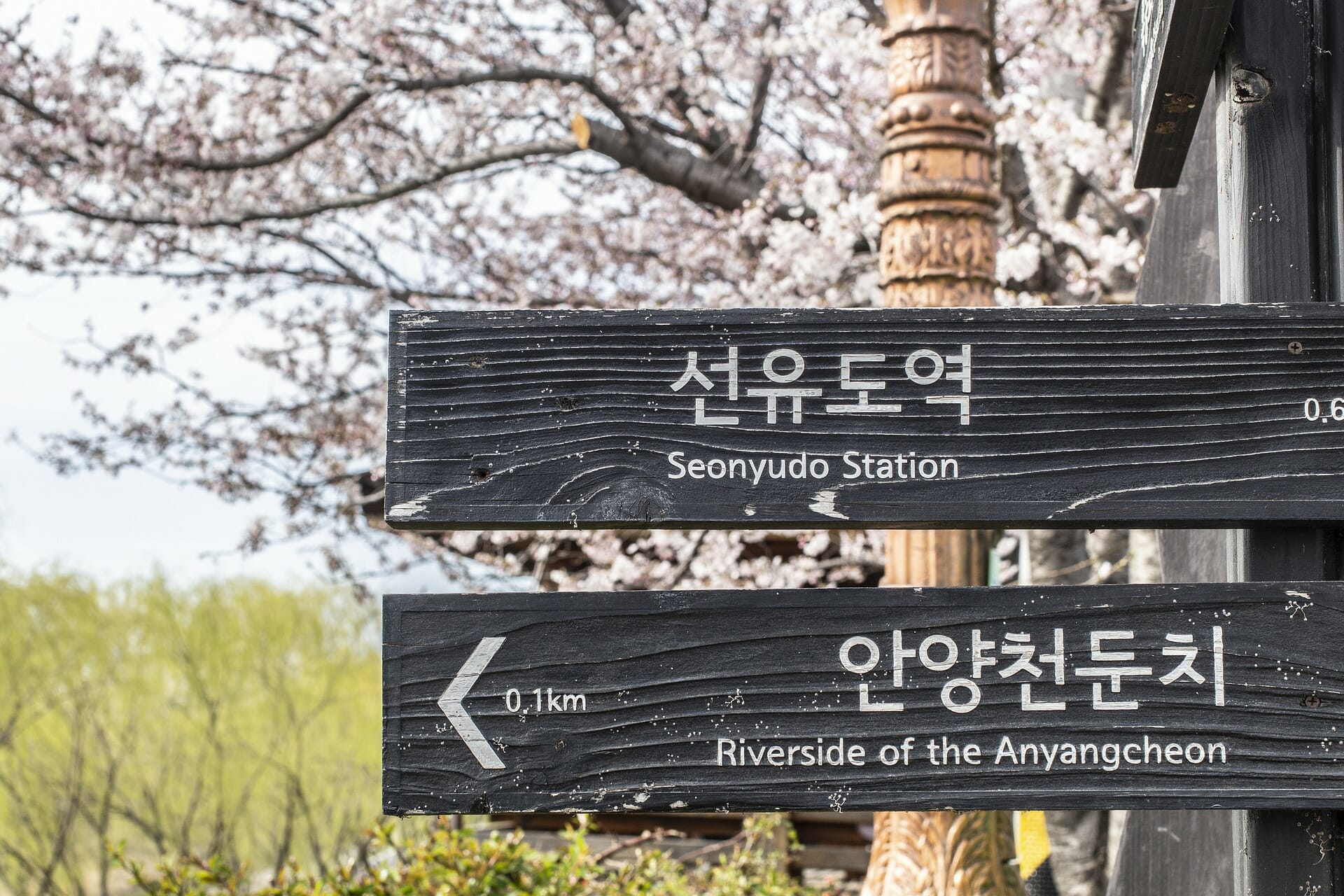
53. Where is (location)? – (location) 가 어디에 있나요? – (location) ga eo-di-e iss-na-yo
(location) 가 어디에 있나요? Is an easy-to-use sentence that will allow you to ask where any location is. Whether you are looking for the local metro station or a good place to shop it will work!
54. How can I get to (location)? – (location) 에 어떻게 가나요? – (location) e eo-deoh-ge ga-na-yo
55. Is there a (location) near here? – 여기 근처에 (location) 가 있나요? – yeo-gi gun-cho-e (location) ga iss-na-yo
Common Korean Location Names
56. Take me to (location) – (location) 에 데려다 주세요 – (location) e de-ryeo-da ju-se-yo
If you are taking a taxi the the sentence (location) 에 데려다 주세요 will be very helpful. You can put a hotel name in the blank, or a subway station that you would like to go to.
57. Where is the closest subway station? – 여기서 제일 가까운 지하철역이 어디에 있나요? – yeo-gi-seo je-il ga-gga-un ji-ha-cheol-yeog-i eo-di-ae iss-na-yo
58. I am lost – 저 길을 잃었어요 – jeo jil-eul ilh-eoss-eo-yo
59. Where can I get a taxi? – 택시 어디서 타면 되나요? – taek-si eo-di-seo ta-myeon dwi-na-yo
60. Does this bus go to (location)? – 이 버스가 (location) 에 가나요? – I beo-seu-ga (location) e ga-na-yo
61. Does this train go to (location)? – 이 기차가 (location) 에 가나요? – I gi-cha-ga (location) e ga-na-yo
Korean Shopping Phrases
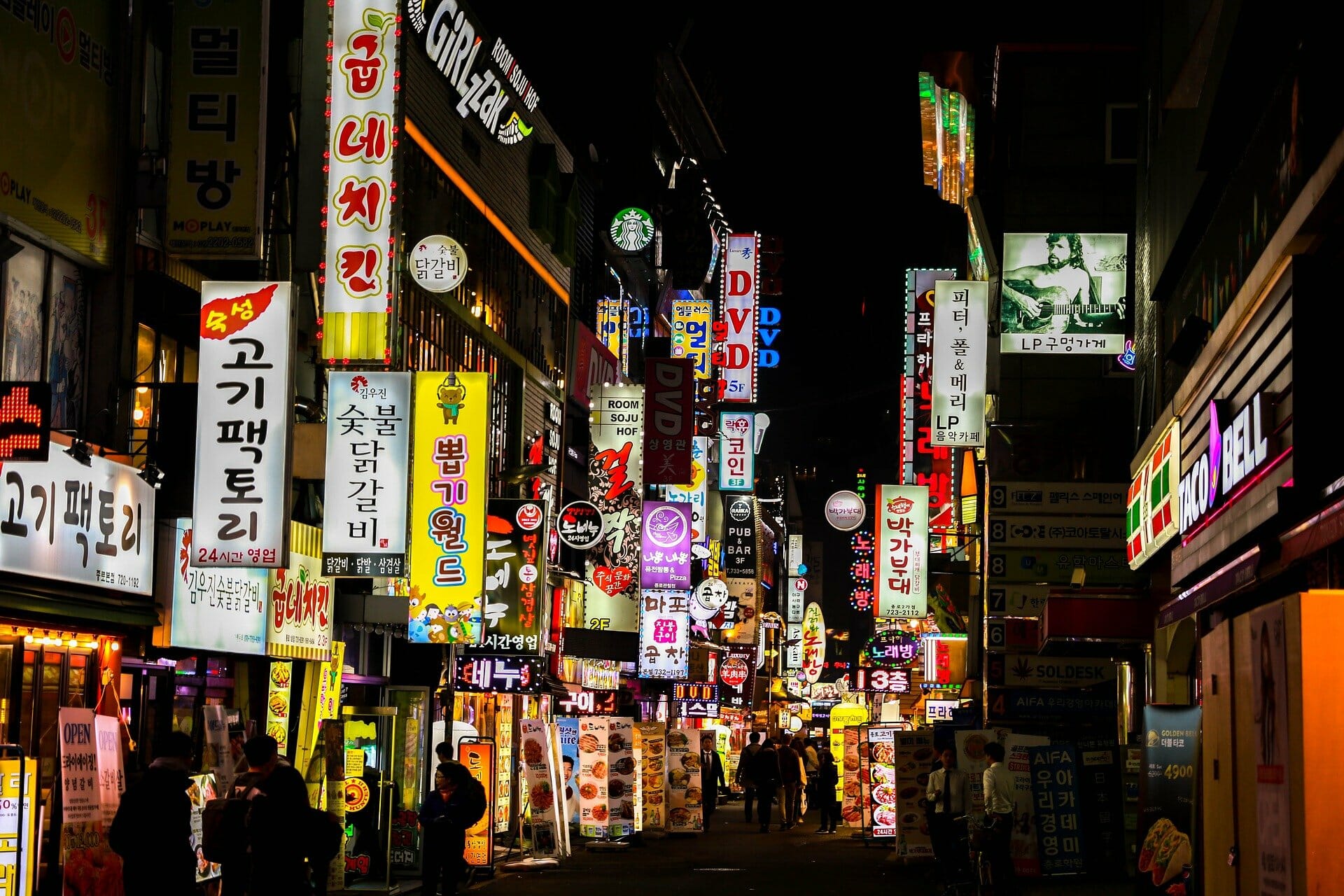
62. How much is (item)? – (item) 얼마에요? – (item) eol-ma-e-yo
얼마에요 literally means ‘how much’ and this word can be used with any item to ask how much it costs. This is one of the best phrases to know when you visit Korea and it’s invaluable.
63. Do you have (item)? – (item) 이 있나요? – (item) I iss-na-yo
64. Where can I buy (item)? – (item) 어디서 살 수 있나요? – (item) eo-di-seo sal su iss-na-yo
If you visit a store but it doesn’t have the item that you need you can ask where you can find the missing item. Otherwise, if you are struggling to find a specific store you can always ask someone on the street!
65. Please give me a receipt – 영수증 좀 주세요 – yeong-su-jeung jom ju-se-yo
While receipts may seem like a thing of the past for many people, there’s an important caveat here. Receipts are often needed for tax-returns if you are looking to shop at duty-free stores. For this reason, knowing the Korean phrase to ask for a receipt is very handy.
66. I need a bag – 봉지 좀 주세요 – bong-ji jom ju-se-yo
If you need a bag to carry your purchases in you can use 봉지 좀 주세요. Keep in mind that this sentence just applies to plastic bags.
67. Can I pay with cash? – 현금으로 계산해도 되나요? – hyeon-geum-eu-ro gye-san-hae-do dwi-na-yo
68. Can I pay with card? – 카드로 계산해도 되나요? – ka-deu-ro gye-san-hae-do dwi-na-yo
69. Do you have a bigger size? – 더 큰 사이즈가 있나요? – deo keun sa-i-jeu-ga iss-na-yo
70. Do you have a smaller size? – 더 작은 사이즈가 있나요? – deo jag-eun sa-i-jeu-ga iss-na-yo
71. Do you have a different colour? – 다른 색깔이 있나요? – da-reun saeg-ggal-i iss-na-yo
72. It’s too expensive – 너무 비싸요 – neo-mu bi-ssa-yo
너무 비싸요 may seem a bit rude at first, but it does have some usefulness. While most stores in Korea have fixed prices, you may also find yourself shopping at markets . If you do find yourself at a market such as Namdaemun , Yongsan, or Gwangjang some of the prices are somewhat flexible. In these cases, the phrase 너무 비싸요 may lead to a drop in prices.
73. I will think about it – 생각해볼게요 – saeng-gak-hae-bol-ge-yo
We’ve all had that experience where a shop assistant won’t leave you alone! If this happens in Korea you can say 생각해볼게요 – I will think about it. This should let you escape the store and allows for more time to think.
74. Is this for sale? – 이거 파는건가요? – I-goe pa-neun-geon-ga-yo
75. Is cash cheaper? – 현금 계산은 더 싼가요? – hyeon-geum gye-san-eun deo ssan-ga-yo
‘현금 계산은 더 싼가요?’ may seem like a bit of an odd question to ask, but it’s especially useful in markets. Often, markets in Korea will offer a 10% discount to those who use cash. This is especially true in Yongsan electronics market . If you are shopping at a market it’s worth asking ‘현금 계산은 더 싼가요?’ to see if you can get the 10% discount!
76. I am just looking – 그냥 좀 보는 중이에요 – gue-nyang jom bo-neun jung-i-e-yo
Simile to point 73, this one can help you escape from a store if you are feeling pressured.
77. Where is a (blank) store? – (blank) 가게는 어디에 있나요? – (blank) ga-ge-neun eo-di-e iss-na-yo
78. Can I try this on? – 이거 입어봐도 되나요? – I-goe ib-eo-bwa-do dwi-na-yo
79. Please give me a discount – 가격을 깎아 주세요 – ga-gyeog-eul ggagg-a ju-se-yo
가격을 깎아 주세요 is not something that you would usually ask in stores, but as with some of the other Korean phrases on this list, it can work great at markets. Often sellers can drop their price by 5-10% and asking for a discount may save you a bit of money!
80. Please give me (number) – (number)개 주세요 – (number)gae ju-se-yo
If you want more than one of something, you can ask for (number) + 개 주세요. For example, if I wanted to buy three pencils I could say 연필 3개 주세요 (yeon-pil sam-gae ju-se-yo). While Korean has different counters for animals, glasses, people and more, 개 is the easiest counter to learn and people will understand if you use it.
The numbers that you should use for this sentence are actually a bit different from the numbers that are used to introduce your age. You can use the numbers from the table below followed by 개 주세요 to indicate how many of an item you would like!
Korean Numbers 1-10
Learn More Korean Words & Phrases

I hope that this list has helped you pick up some basic Korean phrases for traveling and living in Korea. However, this list is far from exhaustive. If you are going to visit Korea for a longer time, or if you want to practice more Korean then I highly recommend studying some more Korean. There are many great platforms that will help you study Korean .
For anyone seriously wanting to study Korean (even if only to pick up the basics) I recommend checking out 90 Day Korean . They offer a strong curriculum and aim to allow users to have a basic conversation within 3 months. In conjunction with a memorisation platform such as Glossika you can pick up the basics of Korean in no time!
Essential Korean Travel Phrases FAQ
What are the 5 most important korean travel phrases.
Give me _____ = _____ 주세요 = _____ ju-sae-yo How much does _____ cost? = _____ 얼마에요? = _____ eol-ma-e-yo? Where is _____? = _____ 가 어디에 있나요? = _____ ga eo-di-e iss-na-yo? Do you have _____? = _____ 이 있나요? = _____ i iss-na-yo? How can I get to _____? = _____ 에 어떻게 가나요? = _____ e eo-deoh-ge ga-na-yo?
What Korean Phrases Do I Need for Ordering Food?
Do you have _____? = _____ 이 있나요? = _____ i iss-na-yo? Give me _____ = _____ 주세요 = _____ ju-sae-yo I would like take-out = 포장해주세요 = po-jang-hae-ju-sae-yo Excuse me (for service) = 저기요 = Jeo-gi-yo
How Can I Learn More Korean?
If you are looking to learn more Korean past basic phrases then I recommend checking out this post on the best ways to learn Korean .
Do I Need to Learn Korean Before Visiting Korea?
It isn’t essential to learn Korean before visiting Korea. However, learning even basic Korean will make your trip that much better. Not only will it make communication easier, but it’s always polite to learn the language of the country that you are visiting.
What Korean Phrases Do I Need for Shopping?
Give me _____ = _____ 주세요 = _____ ju-sae-yo How much does _____ cost? = _____ 얼마에요? = _____ eol-ma-e-yo? Do you have _____? = _____ 이 있나요? = _____ i iss-na-yo? Where can I buy _____? = _____ 어디서 살 수 있나요? = _____ eo-di-seo sal su iss-na-yo?
What Korean Phrases Do I Need for Introducing Myself?
Nice to meet you = 만나서 반갑습니다 = man-na-seo ban-gab-seub-ni-da My name is _____ = 제 이름은 _____ 입니다 = je i-reum-eun _____ ib-ni-da I am from _____ = 저는 _____ 에서 왔어요 = joe-neun _____ e-seo wass-eo-yo I am _____ years old = _____ 살 입니다 = _____ sal ib-ni-da
Leave a Reply Cancel reply
Your email address will not be published. Required fields are marked *
Save my name, email, and website in this browser for the next time I comment.
LinguaJunkie.com
A very cranky language blogger dishing out brutal language tips.
137 Basic Korean Phrases with Audio + PDF. For Beginners!
You’re about to get HIT 🤜 in the FACE 😩 with a TON of Korean Phrases. I mean, to put it nicely, you’re about to LEARN a whole ton and be able to speak Korean.
This guide will teach YOU 137+ Korean phrases with audio.
Wait! Don’t feel overwhelmed. I will talk about secrets of learning these phrases fast down below. There’s also a Free Korean Phrases PDF down below . But, to get you started… here are the most basic Korean phrases with audio you should know:

- LEARN KOREAN FROM ZERO
- INTRODUCTION TO TOPIK
- TOPIK IBT – COMPLETE GUIDE
- REGISTER FOR TOPIK TEST
- TOPIK 2024 SCHEDULE
- CHECK YOUR TOPIK RESULT
- DOWNLOAD PAST PAPERS
- TOPIK MOCK TEST
- TOPIK PREP CLASSES
- KOREAN GRAMMAR COURSE
- TIPS & RESOURCES
- LATEST CONTENT
- TOPIK UPDATES
- KOREAN LEARNING TIPS
- KOREAN GRAMMAR
- KOREAN VOCABULARY
- SCHOLARSHIPS
- STUDY PACKAGE

The Only Guide You Need to Pass TOPIK Test
Best Self-Study Material to Prepare for TOPIK Test

80 Korean Travel words and Phrases to brush up on your language skills
It has always been believed that language is the most influential way to pervade native’s hearts with your respect and care towards their culture. Mother tongue instinctively softens one’s perspectives and makes them believe that the other person is putting efforts to communicate which makes it deeply touching. Therefore, instead of learning every possible sentence in Hangul , taking help of precise and helpful travel words and phrases could act as the initiation of basic understanding of South Korean culture.
It is now possible to get the hang of the basic reading structure of the language in a short span of time. It will in turn be helpful in reading the boards and posters easily. Investing some of your time in solving practice sheets and rehearsing the pronunciation of essential vocabulary might prove to be one of the best ways to travel South Korea for the first time.
There is a lot of information out there about tips and tricks when traveling to Korea, but most of it isn't in the form of travel words and phrases. I'll give you a few short sentences you can use while you are visiting, or just to learn along the way.
Travel Vocabulary In Korean !!
Also see : Reason to improve your Korean vocabulary

Korean phrases that should be tongue friendly~
Also see : Tips to improve your Korean speaking skills
Even though you don't know how to make full sentences in Korean, saying a few words will still come in handy when you travel to Korea someday !!
In contrast to English the levels of formality in korean might appear complex to many; but a continuous practice can prove to be fruitful. Either learn basic Korean by yourself, or join some online courses, or if you prefer meeting some online Korean friends, do so as learning a new language is all about finding new perspectives and landing on some comfortable horizon on your exposure.
If you have suggestions or questions. Feel free to comment below.
Thank you !!
Smriti Ekka graduated in Commerce and Library science, and currently she is working as a content writer at TOPIK Guide website. She is a Korean language and culture enthusiast and has been working across multiple disciplines which broadly addresses narratives of similarities between Korean and Indian culture. Apart from being a content writer at TOPIK Guide she manages Annyeong India website and has had her pieces published in Learn Korean in India website as well. In her other life, she is a singer, rising entrepreneur, life enthusiast and a learner. We are a team of passionate researchers from Seoul National University specializing in Korean language and linguistics. We are committed to helping international students prepare for the TOPIK test. You can connect with us on Facebook , Twitter , Google+ or YouTube
Session expired
Please log in again. The login page will open in a new tab. After logging in you can close it and return to this page.

Essential Korean Language for Travel that You Must Know

Are you planning to travel to Korea? Korean travel phrases in language-learning are absolutely essential for just this reason!
Learning basic South Korean travel phrases will definitely help you in nearly any situation, including urgent ones. The Korean travel phrases and Korean travel words you’ll learn in this article will make your travels more fun and help you connect with locals, so that you can get the most out of your upcoming trip to South Korea!
Table of Contents
- Essential Korean Travel Phrases: Basic Expressions
- Essential Korean Phrases: Transportation
- Essential Korean Phrases: Shopping
- Essential Korean Phrases: At Restaurants
- Essential Korean Phrases: Asking for and Giving Directions
- Essential Korean Phrases: Emergencies
- Essential Korean Phrases: Flattery Phrases
- Essential Korean Phrases: Useful Phrases to Go Through Language Problems
- Essential Korean Phrases: Buying Tickets at a Museum
- Essential Korean Phrases: Taking Pictures
- How KoreanClass101.com Can Help You with Korean

1. Essential Korean Travel Phrases: Basic Expressions

You’ll be able to converse with local native Koreans by simply remembering these basic phrases. Koreans will appreciate the fact that you made the effort to speak to them in their local language, and it will certainly add more fun to your South Korea trip.
1- 안녕하세요 ( annyeonghaseyo ) – “hello” (polite form)
This is one of the most basic and commonly used Korean phrases for travelling, so be sure to keep it in your arsenal!
Example 1: You enter a restaurant and a waitress greets you.
- Waitress: 안녕하세요. Waitress: Annyeonghaseyo . Waitress: “Hello.”
- You: 안녕하세요. You: Annyeonghaseyo . You: “Hello.”
Example 2: You take a taxi and want to greet the taxi driver.
- Taxi driver: 네, 안녕하세요. 어디로 가시나요? Taxi driver: Ne, annyeonghaseyo. Eodiro gasinayo? Taxi driver: “Yes, hello. Where would you like to go?”
2 – 반갑습니다 ( bangapseumnida ) – “nice to meet you” (polite form)
Example 1: Jason went to your friend’s house and met their roommate, who is older than him, for the first time.
- Roommate: 어? 친구 데려왔어? 누구야? Roommate: Eo? Chingu deryeowasseo? Nuguya? Roommate: “Oh, you brought your friend home? Who is he?”
- Jason: 안녕하세요, 반갑습니다. Jason: Annyeonghaseyo, bangapseumnida. Jason: “Hello, nice to meet you.”
Example 2: Michael went to a language exchange event in Hongdae and wants to introduce himself to others.
- Michael: 안녕하세요, 저는 마이클이라고 합니다. 반갑습니다. Michael: Annyeonghaseyo, jeoneun maikeurirago hamnida. Bangapseumnida. Michael: “Hello, my name is Michael. Nice to meet you.”
3 – 감사합니다 ( gamsahamnida ) – “thank you” (polite form)
Example 1: You’re walking in the busy streets in the Gangnam area, and see a lady drop her wallet. You pick it up and give it to her.
- You: 여기, 지갑 떨어뜨리셨어요. You: Yeogi, jigap tteoreotteurisyeosseoyo. You: “Here, you dropped your wallet.”
- Lady: 어머, 감사합니다. Lady: Eomeo, gamsahamnida. Lady: “Oh, thank you so much.”
Example 2: You order a cup of coffee at The Coffee Bean & Tea Leaf and a clerk gives you the change after you’ve paid.
- Clerk: 500원 거스름돈 드리겠습니다. Clerk: Obaegwon geoseureumdon deurigetseumnida. Clerk: “Here is [your] change, 500 won.”
- You: 감사합니다. You: Gamsahamnida. You: “Thank you.”
4 – 실례합니다 ( sillyehamnida ) – “excuse me” (polite form)
This is one of the most useful Korean travel phrases you can learn, so keep it in mind.
Example 1: You’re on a crowded subway and need to get closer to the exit.
- You: 실례합니다. 지나가겠습니다. You: Sillyehamnida. Jinagagetseumnida. You: “Excuse me. Passing through.”
Example 2: You accidentally stepped on a stranger’s foot inside the busy subway.
- You: 실례합니다. You: Sillyehamnida. You: “Excuse me.”
5- 네; 아니요; 괜찮아요. ( ne; aniyo; gwaenchanayo. ) – “yes; no; no, thank you.”
While you learn Korean travel phrases, never underestimate the importance of even the smallest words. They can have the most impact!
- You: 이쪽으로 가면 화장실인가요? You: Ijjogeuro gamyeon hwajangsiringayo? You: “Is this way to the toilet?”
- Clerk: 아니요, 그쪽은 창고예요. Clerk: Aniyo, geujjogeun changgoyeyo. Clerk: “No, that’s the storage section.”
- You: 아, 그럼 저쪽으로 가면 되나요? You: A, geureom jeojjogeuro gamyeon doenayo? You: “Ah, so should I go that way?”
- Clerk: 네, 맞아요. Clerk: Ne, majayo. Clerk: “Yes, correct.”
Example 2: You had a great time hanging out with your friend. But it’s getting late—time to go home.
- Friend: 많이 어두워졌네, 집에 데려다 줄까? Friend: Mani eoduwojyeonne, jibe deryeoda julkka? Friend: “It became really dark. Did you want me to take you to your home?”
- You: 아니, 괜찮아. 혼자갈 수 있어. You: Ani, gwaenchana. Honjagal su isseo. You: “No, I’m fine. I can go home by myself.”
We have more free lessons like “ Top 10 Conversational Phrases ,” so do check out this page when you have time.
2. Essential Korean Phrases: Transportation

Traveling by public transportation is the most efficient way to get around South Korea. The fares for the subway and public buses are very cheap, and the routes are easy to understand. There are also announcements offered in various languages, so the chance of getting lost is slim.
However, you need to remember that most of the staff at the ticket booths don’t speak English. Let’s learn the most important and useful phrases for buying tickets and conversing with any staff that you encounter.
1- ~으로 가는 티켓 주세요. ( ~euro ganeun tiket juseyo. )
~으로 가는 티켓 주세요. ( ~euro ganeun tiket juseyo. ) means “Please give me a ticket to ~.” Use this phrase to buy any tickets to go out of the city area.
Example 1: You’re at Dong-Daegu train station ( 동대구역; dongdaeguyeok ) to buy a train ticket to Busan .
- You: 부산으로 가는 티켓 주세요. You: Busaneuro ganeun tiket juseyo You: “I would like to buy a ticket to go to Busan.”
- Staff: 출발시간은 언제가 괜찮으십니까? Staff: Chulbalsiganeun eonjega gwaenchaneusimnikka? Staff: “When would you like to depart?”
- You: 오후 1시쯤 출발하는 기차 있을까요? You: Ohu 1sijjeum chulbalhaneun gicha isseulkkayo? You: “Are there any trains that depart at 13:00 (one o’clock PM)?”
Example 2: You’re at the Seoul Express Bus Terminal to buy a bus ticket to Pohang ( 포항; pohang ).
- You: 안녕하세요, 오후 1시 포항으로 가는 티켓 주세요. You: Annyeonghaseyo, ohu 1si pohangeuro ganeun tiket juseyo. You: “Hello, I would like to buy a ticket to go to Pohang at 13:00 (one o’clock PM).”
- Staff: 네, 몇장 드리면 될까요? Staff: Ne, myeotjang deurimyeon doelkkayo? Staff: “Okay, how many tickets do you need?”
- You: 한장이요. You: Hanjangiyo. You: “Just one.”
2- ~으로 가는 전철/버스 인가요? ( ~euro ganeun jeoncheol/beoseu ingayo? )
This phrase means “Does this subway/bus go to ~?”
It’s likely that you’ll take a bus or subway to get around in South Korea. This travel phrase will come in handy when you want to ask a question to locals. When you travel by boat or ferry, simply replace the noun with “boat” ( 배; bae ).
Example 1: You’re at the Incheon airport and need to go to the Jamsil area. A bus stops in front of you, and you want to ask whether this bus goes to Jamsil.
- You: 잠실로 가는 버스인가요? You: Jamsillo ganeun beoseuingayo? You: “Does this bus go to Jamsil?”
- Staff: 네, 갑니다. Staff: Ne, gamnida. Staff: “Yes, it does.”
Example 2: You’re at Gukje market in Busan and you need to catch the subway to go to Gimhae International airport .
- You: 실례합니다. 이 전철은 부산 공항으로 가는 전철인가요? You: Sillyehamnida. i jeoncheoreun busan gonghangeuro ganeun jeoncheoringayo? You: “Excuse me. Does this subway go to the Busan airport?”
- Stranger: 아니요, 부산 공항으로 가는 전철은 저쪽이예요. Stranger: Aniyo, busan gonghangeuro ganeun jeoncheoreun jeojjogiyeyo. Stranger: “No, the subway bound for the Busan airport is over there.”
3- ~으로 가주세요. ( ~euro gajuseyo. )
This phrase means “Please take me to ~.”
This travel phrase is the most effective and simple phrase to tell your taxi driver. Simply add the destination that you want to reach, such as “ Insadong ” (인사동; insadong ) or “ Dongdaemun ” (동대문; dongdaemun ) etc., followed by 으로 가주세요. ( ~euro gajuseyo. ). That’s it. You don’t need to say anything else!
However, if you want to go somewhere less touristy, and it requires you to explain where exactly you want to go, give the taxi driver the address. Every taxi has a navigation system installed. Also, taxi companies provide free interpreter services in South Korea.
To know whether the taxi you got in offers this service, take a look on the right-hand side of the door. Usually, there’s a large rectangular sign that explains about this service in English, Japanese, and Chinese. So if you’re struggling to explain where you want to go, simply say “free interpreter” to the taxi driver.
Example 1: You’re at “ Gangnam station ” (강남역; gangnamyeok ) right now and want to move to “ Itaewon ” (이태원; itaewon ) to have dinner with your friends.
- You: 안녕하세요, 이태원역으로 가주세요. You: Annyeonghaseyo, itaewonyeogeuro gajuseyo. You: “Hello, please take me to Itaewon station.”
- Taxi driver: 네, 알겠습니다. Taxi driver: Ne, algetseumnida. Taxi driver: “Sure.”
Example 2: You want to visit your friend’s house in Busan, and you have his address.
- You: 안녕하세요, 이곳으로 가고 싶은데요.. (주소를 보여줌) You: Annyeonghaseyo, igoseuro gago sipeundeyo.. (jusoreul boyeojum) You: “Hello, I would like to go to this place…” (show him the address)
- Taxi driver: 잠시만요. (네비게이션으로 주소 확인함) Taxi driver: Jamsimanyo. (nebigeisyeoneuro juso hwaginham) Taxi driver: “Please hold on…” (checks the location via navigation system)
3. Essential Korean Phrases: Shopping

1 – 이거/저것 얼마예요? ( igeo/jeogeot eolmayeyo? )
This phrase means “How much is this/that?”
Use this travel phrase when you want to ask the seller how much the items cost while shopping in South Korea. To get the seller’s attention, you can say 저기요 ( jeogiyo ) which means “excuse me.” If the seller is male, you can call him by 아저씨 ( ajeossi ) meaning “mature man,” and if the seller is female, you can call her by 아줌마 ( ajumma ) meaning “matured female” or 이모 ( imo ) meaning “aunt.”
Also, remember that 이것 ( igeot ) means “this” and 저것 ( jeogeot ) means “that.” If you want each of them to be plural, say 이것들 ( igeotdeul ) meaning “these” and 저것들 ( jeogeotdeul ) meaning “those.”
Example 1: You’re shopping at a famous market called “ Gwangjang market ” (광장시장; Gwangjangsijang ), in Seoul. You found a set of Korean traditional clothing called “ Hanbok ” (한복; hanbok ) which you want to buy, and you’re curious to know how much it costs.
- You: 아저씨, 이거 얼마에요? You: Ajeossi, igeo eolmaeyo? You: “Excuse me sir, how much is this?”
- Seller: 7만원이에요. Seller: Chilmanwonieyo. Seller: “It’s 70,000 won.”
Example 2: You found a pink sweater that you like while shopping at 서문시장 ( seomun sijang ) in Daegu . You want to ask how much the sweater costs.
- You: 저기요, 저건 얼마예요? You: jeogiyo, jeogeon eolmayeyo? You: “Excuse me, how much is that?”
- Seller: 2만9천원이예요. Seller: Imangucheonwoniyeyo. Seller: “It’s 29,000 won.”
- You: (저거) 한개 주세요. You: (jeogeo) Hangae juseyo. You: “Please give me one (of that).”
2 – 이거 #개 주세요. ( igeo #gae juseyo. )
This phrase means “Please give me [number] [of the product].”
Example 1: You’re at the supermarket and the clerk wants to ask how many plastic bags you want.
- Seller: 비닐봉지 몇개 드릴까요? Seller: Binilbongji myeotgae deurilkkayo? Seller: “How many plastic bags would you like to have?”
- You: 2개 주세요. You: Dugae juseyo. You: “Two please.”
Example 2: You found a beautiful “Korean traditional pocket” called 전통 주머니 ( jeontong jumeoni ) and want to buy six of them.
- You: 이거 6개 주세요. You: Igeo yeoseotgae juseyo. You: “Please give me six (of the Korean traditional pockets).”
- Seller: 네. Seller: Ne. Seller: “Ok.”
On our website, KoreanClass101 , you can find many lessons on counting numbers in Korean. Feel free to check out our website whenever you want.
3- 조금만 깎아 주시면 안될까요? ( Jogeumman kkakka jusimyeon andoelkkayo? )
This phrase means “Can you please reduce the price?”
The prices in Korea are usually fixed, but you can definitely negotiate the price at a market. To ask for a discount, use this phrase!
If you want to buy items for a cheaper price in Korea, try to pay by cash. If you pay with a credit card, you’ll be charged extra (approximately ten percent more).
Example 1: You’re at 남대문시장 ( Namdaemun sijang ) meaning “Namdaemun market” in Seoul and found a nice jacket. You ask for the price and think that it costs too much. You want to negotiate the price.
- You: 너무 이쁘긴한데… 비싸네요. 조금만 깎아 주시면 안될까요? You: Neomu ippeuginhande… bissaneyo. Jogeumman kkakka jusimyeon andoelkkayo? You: “It’s really pretty…but it’s expensive. Can you please reduce the price a bit?”
- Seller: 그럼 3,000원만 깎아 줄게요. Seller: Geureom samcheonwonman kkakka julgeyo. Seller: “I will give you a discount of 3,000 won then.”
Example 2: You’re at 고속터미널 역 지하상가 ( gosokteomineol yeok jihasangga ) an underground shopping mall in the Express Bus Terminal station in Seoul, and want to buy a pair of jeans. The sign says that it costs 10,000 won if you pay by cash. But you only have a credit card.
- You: 이거 카드로 계산할게요. You: Igeo kadeuro gyesanhalgeyo. You: “I will pay by credit card.”
- Seller: 카드로 계산하면 11,000원이에요. 현금으로 내는게 더 저렴해요. Seller: kadeuro gyesanhamyeon mancheonwonieyo. hyeongeumeuro naeneun ge deo jeoryeomhaeyo. Seller: “If you pay by card, it will be 11,000 won. It will be cheaper by cash.”
- You: 아 그래요? 이곳에 가장 가까운 ATM기계는 어디에 있나요? You: Igose gajang gakkaun ATMgigyeneun eodie innayo? You: “Oh really? Where is the nearest ATM from here?”
4- S/M/L 사이즈 있나요? ( S/M/L saijeu innayo? )
This phrase means “Do you have S/M/L size for this?”
When you ask for a different size, if a seller says it’s 프리사이즈 ( peurisaijeu ), this means that it’s “free-size.” Do be careful when you buy free-size clothing, as it may be too big or small when you try it on. Also, for many shops at a market or an underground shopping area, you can’t refund the items after purchase.
Example 1: You’re at an underground shopping mall in Gangnam station. You find a sweater and there’s no size written on the tag.
- You: 이건 사이즈가 어떻게 돼요? You: Igeon saijeuga eotteoke dwaeyo? You: “What size is this?”
- Seller: 그거 프리사이즈에요. Seller: Geugeo peurisaijeueyo. Seller: “It’s a free-size sweater.”
Example 2: You want to ask if the dress you chose comes in different sizes.
- You: 이 드레스 M 사이즈도 있나요? You: I deureseu em saijeudo innayo? You: “Do you have an M size?”
- Seller: 네, 잠시만요. Seller: Ne, jamsimanyo. Seller: “Yes, hold on a sec.”
5- 뭐가 제일 인기 많아요? ( mwoga jeil ingi manayo? )
This phrase means “What are the most popular ones?”
Sometimes it can be overwhelming when you need to choose something out of so many goods. If you’re not sure which one to choose, it’s always safe to ask a seller which item is popular these days.
Example 1: You bought a number of items at a shop and a seller wants to give you some freebies.
- You: 너무 이쁜것들이 많아서 못 고르겠어요. 어떤 것이 제일 인기가 많아요? You: Neomu ippeungeotdeuri manaseo mot goreugesseoyo. eotteon geosi jeil ingiga manayo? You: “There are so many things that I can’t choose. What is the most popular one from here?”
- Seller: 요즘은 이 아이템이 한국에서 인기가 많아요. Seller: Yojeumeun i aitemi hangugeseo ingiga manayo. Seller: “These days, this item is quite popular in Korea.”
Example 2: You want to buy a dress that’s trending in Korea.
- You: 어느 드레스가 제일 인기 많아요? You: Eoneu deureseuga jeil ingi manayo? You: “Which dress is the most popular dress in Korea?”
- Seller: 이거요. Seller: Igeoyo. Seller: “This one.”
Do you want more phrases for shopping? Check out “ 15 Shopping Phrases. Exchanges, Refunds and Complaints !” on KoreanClass101.com.
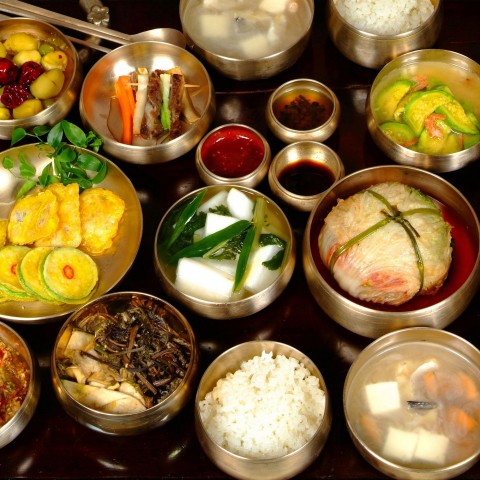
4. Essential Korean Phrases: At Restaurants
1- ~주세요 ( ~juseyo ).
This phrase means “Please give me ~,” and it can be used not only to order dishes, but also to buy things like tickets or clothing.
Example 1: You enter a restaurant and want to ask for a menu.
- You: 저기요, 메뉴주세요. You: Jeogiyo, menyujuseyo. You: “Excuse me, please give me a menu.”
- Waitress: 네, 여기있습니다. Waitress: Ne, yeogiitseumnida. Waitress: “Sure, here you go.”
Example 2: You want to order a bottle of beer and soju to try to make 소맥 ( somaek ) which is a whiskey and beer cocktail.
- You: 저기요, 맥주 한병이랑 소주 한병 주세요. You: Jeogiyo, maekju hanbyeongirang soju hanbyeong juseyo. You: “Excuse me, can I please have a bottle of beer and soju?”
- Waitress:네, 여기있습니다. Waitress: Ne, yeogiitseumnida. Waitress: “Sure, here you go.”
2- 많이 매운가요? ( Mani maeungayo? )
This phrase means “Is this spicy?”
Many Korean dishes are spicy for foreigners because we use 고추장 ( Gochujang ) meaning “red chili paste” or 고춧가루 ( gochutgaru ) meaning “chili powder” in most dishes. When ordering spicy dishes in Korea, you can request to make it less spicy, so you can still enjoy Korean dishes!
Example 1: You’re at one of the famous ddeokbokki restaurants named 죠스떡볶이 ( jyoseutteokbokki ). It’s your first time trying some ddeokbokki .
- You: 떡볶이 주세요. You: Tteokbokki juseyo. You: “I will have ddeokbokki please.”
- Waitress: 매운 거 잘 못 드시면 많이 매우실 텐데요. Waitress: Maeun geo jal mot deusimyeon mani maeusil tendeyo. Waitress: “If you struggle a lot to eat spicy foods, you may not be able to eat this dish.”
- You: 아, 많이 매운가요? 그럼 덜 맵게 해주시겠어요? You: A, mani maeungayo? geureom deol maepge haejusigesseoyo? You: “Ah, is it really that spicy? Is it possible to make it less spicy?”
Example 2: You want to ask whether the dish you want to order is spicy or not.
- You: 이거 많이 매운가요? You: Igeo mani maeungayo? You: “Is this spicy?”
- Waiter: 아니요, 맵지 않습니다. Waiter: Aniyo, maepji anseumnida. Waiter: “No, it’s not spicy.”
3- 저는 채식주의자예요. ( Jeoneun chaesikjuuijayeyo )
This important phrase means “I am a vegetarian.”
“Vegetarian” is 채식주의자 ( chaesikjuuija ) and “vegan” is 비건 ( bigeon ) in Korean. Although the number of vegetarian restaurants is increasing, this concept (especially veganism) is fairly new to South Korea. Therefore, do research in advance if you’re after specific vegetarian/vegan restaurants in Korea.
Otherwise, vegetarian dishes are easy to find, so don’t worry too much. Classic dishes include 야채 김밥 (vegetable gimbap ) and 잡채 ( japchae ).
Example 1: You’re at a gimbap restaurant and want to order a vegetarian gimbap .
- You: 저는 채식주의자예요. 어떤 김밥을 먹으면 될까요? You: Jeoneun chaesikjuuijayeyo. eotteon gimbabeul meogeumyeon doelkkayo? You: “I am vegetarian. Is there any gimbap for me to eat?”
- Staff: 채식주의자세요? 그럼 야채 김밥 드셔야겠네요. Staff: Chaesikjuuijaseyo? geureom yachae gimbap deusyeoyagenneyo. Staff: “Are you vegetarian? Then you should order the vegetable gimbap.”
Example 2: You went to a restaurant with your friend, who doesn’t know that you’re vegetarian. He wants to order 삼겹살 ( samgyeopsal ) or “pork belly.”
- Friend: 우리 삼겹살 시켜먹을까? Friend: Uri samgyeopsal sikyeomeogeulkka? Friend: “Shall we order some pork belly?”
- You: 미안, 나 채식주의자야. 그래서 고기 못 먹어 You: Mian, na chaesikjuuijaya. Geuraeseo gogi monmeogeo You: “Sorry, I’m vegetarian, so I can’t eat meat.”
- Friend: 아 진짜? 몰랐네. 미안, 그럼 다른거 시켜먹자. Friend: A jinjja? mollanne. Mian, geureom dareungeo sikyeomeokja. Friend: “Oh really? I did not know. Sorry, let’s order something else.”
4- ~ 알러지있어요 ( alleojiisseoyo ) – “I am allergic to ~.”
This phrase means “I am allergic to ~,” and may be the most important restaurant phrase you learn today!
Are you allergic to peanuts? “Peanut” is called 땅콩 ( ttangkong ) in Korean. “Wheat” is called 밀 ( mil ).
To say that you’re allergic to something, just say the name of the food that you’re allergic to, followed by 알러지있어요 ( alleojiisseoyo ).
Example 1: You’re allergic to peanuts and you want to ask if the snack you want to buy contains some nuts.
- You: 제가 땅콩 알레르기가 있는데요, 이 과자 땅콩이 들어가 있나요? You: Jega ttangkong allereugiga inneundeyo, I gwaja ttangkongi deureoga innayo? You: “I am allergic to peanuts, I am wondering if this snack contains some peanuts?”
- Staff: 확인해볼께요. 네, 들어가 있네요. Staff: Hwaginhaebolkkeyo. Ne, deureoga inneyo. Staff: “Let me have a check. Yes, it does.”
Example 2: You’re currently staying with a Korean homestay family. The homestay father gave you chocolates and you want to say that you’re allergic to them.
- You: 전 초콜릿에 알레르기가 있어서 먹을 때마다 기침을 해요. You: Jeon chokollise allereugiga isseoseo meogeul ttaemada gichimeul haeyo. You: “I am allergic to chocolates, so every time I eat I sneeze.”
- Father: 그런데도 먹어? Father: Geureondedo meogeo? Father: “And you still eat chocolates?”
- You: 네, 너무 맛이 있어서요. You: Ne, neomu masi isseoseoyo. You: “Yes, because it‘s too delicious. “
5- 와이파이 비밀번호는 뭐예요? ( Waipai bimilbeonhoneun mwoyeyo? )
This phrase translates to “What is the password for Wifi?”
You’ll be startled at the speed of Internet services in South Korea. Moreover, free wifi services are available nearly everywhere—on the subway, KTX, at restaurants and cafes, etc. Most restaurants and cafes provide free wifi for customers, so ask for the password to access the free wifi.
Example 1: You stopped by 엔제리너스커피 (Angel-in-Us Coffee) to take a break from a long walk, and you want to use free wifi.
- You: 와이파이 비밀번호는 뭐예요? You: Waipai bimilbeonhoneun mwoyeyo? You: “What is the password for wifi?”
- Waiter: 1234567890입니다. Waiter: I-ri-sam-sa-o-yuk-chil-pal-gu-yeong-imnida. Waiter: “It’s 1234567890.”
Do you want to learn more practical phrases to use at Korean restaurants? Check out “ Vocabulary and Phrases for the Restaurant ” on our website.
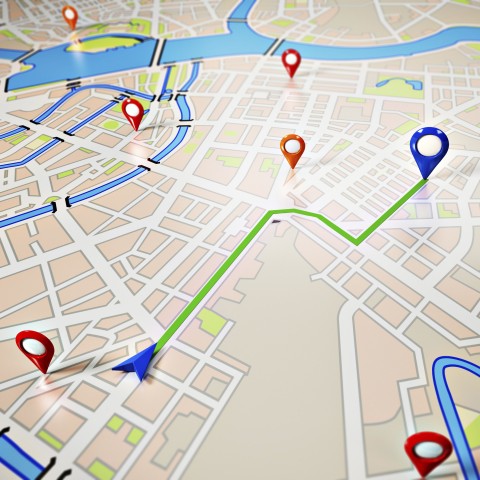
5. Essential Korean Phrases: Asking for and Giving Directions

1- ___은 어떻게 가나요? ( ___eun eotteoke ganayo? )
This phrase translates as “How do I go to ~?” in English.
This is the phrase to use when you’re asking for detailed directions. Use this phrase to ask how to get somewhere, when there are many steps involved.
Example 1: You’re asking your homestay father how to get to Busan from Daegu.
- You: 부산에서 대구까지 어떻게 가나요? You: Busaneseo daegukkaji eotteoke ganayo? You: “How do I get to Busan from Daegu?”
- Father: 부산역에서 KTX 열차 티켓을 하고나서… Father: Busanyeogeseo KTX yeolcha tikeseul hagonaseo… Father: “You need to buy a KTX ticket from a station called Busan station and ….”
2- ~은 어디에 있어요? ( ~eun eodie isseoyo? )
This phrase means “Where is ~?”
Example 1: You’re at a shop and want to use the bathroom.
- You: 화장실은 어디에 있어요? You: Hwajangsireun eodie isseoyo? You: “Where is the bathroom?”
- Staff: 가게 밖으로 나가면 바로 오른쪽에 있어요. Staff: Gage bakkeuro nagamyeon baro oreunjjoge isseoyo. Staff: “Go out of the shop; the toilet is on the right-hand side.”
Example 2: You feel tired after visiting many places and want to go back to the hotel to rest, but you’re not sure where the closest station is.
- You: 여기서 가장 가까운 지하철역은 어디에 있어요? You: Yeogiseo gajang gakkaun jihacheollyeogeun eodie isseoyo? You: “Where is the closest subway station from here?”
- Stranger: 횡단보도 건너면 홍대역이 보일거예요. Stranger: Hoengdanbodo geonneomyeon hongdaeyeogi boilgeoyeyo. Stranger: “Just cross the road and you’ll be able to see the station called Hongdae.”
3- Vocabulary for Directions
Here’s some useful vocabulary:
Reference: Position/Direction
There are several example sentences using these vocabulary words in our vocabulary list about positions and directions. Do check out the page for more learning material.
4- 여기는 어디인가요? ( yeogineun eodiingayo? )
This phrase means “Where am I?”
When you’re not sure where you are, or you want to know the name of the place you’re at, use this phrase to ask. 어디 means “where” in Korean. If you want to double-check your location with someone, replace 어디 with the name of the place.
For example, if you want to know whether the place you’re in is 가로수길 ( garosu-gil ), you should ask 여기는 가로수길인가요? ( yeogineun garosugiringayo? ) which translates to “Am I in Garosu gil?”
- You: 길을 잃었어요. 여기는 어디인가요? You: Gireul ileosseoyo. Yeogineun eodiingayo? You: “I am lost. Where am I?”
- Stranger: 음… 어디로 가시는데요? 가는길 알려드릴께요. Stranger: Eum… eodiro gasineundeyo? Ganeungil allyeodeurilkkeyo. Stranger: “Hmm…where are you heading to? I may be able to tell you the way.”
Example 2: You’re with a tour guide and you want to say how beautiful this place is.
- You: 정말 아름다운 곳이네요. 여기는 어디인가요? You: Jeongmal areumdaun gosineyo. Yeogineun eodiingayo? You: “This place is really beautiful. Where is this place?”
- Guide: 광화문 이라고 하는 곳입니다. 아름답지요? Guide: Gwanghwamunirago haneun gosimnida. Areumdapjiyo? Guide: “It’s called Gwanghwamun. Isn’t it beautiful?”
5- 여기서 ~까지는 많이 먼가요/가까운가요? ( yeogiseo ~kkajineun mani meongayo/gakkaungayo? )
This phrase means “From here to ~, is it far/close?”
Use this phrase when you want to ask how far or close something is from your current location.멀다 ( meolda ) is “far” and 가깝다 ( gakkapda ) is “close” in Korean. To make each word into a question, they become 먼가요? ( meongayo ) meaning “Is it far?” and 가까운가요? ( gakkaungayo? ) meaning “Is it close by?” respectively.
Example 1: You’re at Daegu Station and want to go to Palgongsan, a tourist favorite in Daegu.
- You: 팔공산 은 여기서 많이 먼가요? You: Palgongsaneun yeogiseo mani meongayo? You: “Is Palgongsan far from here?”
Example 2: You’ve just landed in Jeju International Airport . Your friend comes to pick you up and you’re waiting for a bus to go to your friend’s house.
- You: (너의) 집은 여기서 많이 멀어? You: (neoui) Jibeun yeogiseo mani meoreo? You: “Is your house far from here?”
- Friend: 음, 버스타고 한 20분 정도 가야해. 그렇게 멀진 않아. Friend: Eum, beoseutago han isipbun jeongdo gayahae. Geureoke meoljin ana. Friend: “Hmm, it takes about 20 minutes by bus. It’s not too far.”
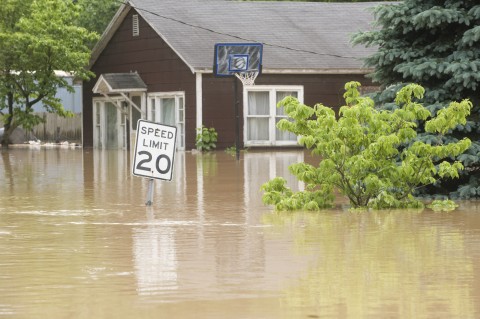
6. Essential Korean Phrases: Emergencies
1- 도와주세요. ( dowajuseyo. ).
This phrase translates to “Please help me.”
When you’re in need of help, use this phrase to get people’s attention. Be careful when you use this phrase though, because the meaning changes depending on your intonation. You can also request help more formally by stating, 실례하지만 도와주시겠어요? ( sillyehajiman dowajusigesseoyo? ) which means “I am sorry to bother you, but could you please help?”
Example 1: You were hiking at a mountain called 북한산 ( bukansan ) in Seoul and you injured yourself. You see a number of hikers not far from where you are.
- You: 도와주세요! , 도와주세요! You: Dowajuseyo! Dowajuseyo! You: “Please help! Please help!”
Example 2: You need to call an ambulance, and you go to a help desk for help.
- You: 응급상황이예요, 도와주세요! You: Eunggeupsanghwangiyeyo, dowajuseyo! You: “It’s an emergency! Please help!”
2- 경찰 불러주세요. ( gyeongchal bulleojuseyo. )
This phrase means “Please call the police.”
Use this phrase when you’re in danger. Alternatively, you can call the police by dialing 112. If you want to call an ambulance, which is called 응급차 ( eunggeupcha ) or 일일구 ( irilgu ), simply say the word followed by 불러주세요 ( bulleojuseyo ) meaning “Please call.”
Example 1: You want to ask for help from a person at the service desk.
- Help desk: 무엇을 도와드릴까요? Help desk: Mueoseul dowadeurilkkayo? Help desk: “How may I help you?”
- You: 누가 지갑을 훔쳐갔어요, 경찰 불러주세요. You: Nuga jigabeul humchyeogasseoyo, gyeongchal bulleojuseyo. You: “My wallet is stolen and I would like to call the police.”
- Help desk: 네, 지금 바로 하겠습니다. Help desk: Ne, jigeum baro hagetseumnida. Help desk: “Okay, will do it now.”
Example 2: A stranger approaches you and tries to steal your bag.
- You: 도와주세요! 누가 경찰 불러 주세요! You: Dowajuseyo! Nuga gyeongchal bulleo juseyo! You: “Please help! Call the police for me!”
3- ~를 다쳤어요. ( ~reul dachyeosseoyo. )
This phrase means “I injured my ~.”
When you visit a hospital, you need to be able to tell the doctor which part of your body is injured. Unless you go to an international hospital that offers a free interpreter service, you’ll need to speak basic Korean at a local hospital.
If you want to say that you’re just in pain, just say ~가 아파요. ( ~ga apayo ) which means “I feel pain in my~.”
Here’s a vocabulary list of body parts for you to memorize:
Reference: Body Parts, KoreanClass101 Vocabulary list
The vocabulary words above are just a small portion of the entire vocabulary list from KoreanClass101. If you want to check out the entire list, visit our Body Parts vocabulary list on our website. We also have many free lessons on describing body parts in Korean, so check our website for more.
Example 1: You’re at a local hospital and need to explain which part of your body is injured.
- Doctor: 무슨일로 오셨나요? Doctor: Museunillo osyeonnayo? Doctor: “What made you come here today?”
- You: 산책하다가 발목을 다쳤어요. You: Sanchaekadaga balmogeul dachyeosseoyo. You: “I injured my ankle while walking.”
- Doctor: 한번 살펴 보겠습니다. Doctor: Hanbeon salpyeo bogetseumnida. Doctor: “Let me have a look at your ankle.”
Example 2: You weren’t cautious enough when crossing the pedestrian road. Unfortunately, you were run over by a car and your bone is broken.
- You: 걸을 수가 없어요. 뼈를 다친것 같아요. You: Georeul suga eopseoyo. Ppyeoreul dachingeot gatayo. You: “I can’t walk. I think my bone is broken.”
- Driver: (calling an ambulance) 여보세요, 차사고가 났는데요, 사람이 크게 다친것 같습니다. Driver: Yeoboseyo, chasagoga nanneundeyo, sarami keuge dachingeot gatseumnida. Driver: “Hello, there was a car accident and I think that the person is badly injured.”
4- 지갑/여권을 잃어버렸어요. ( jigap/yeogwoneul ileobeoryeosseoyo. )
This phrase means “I lost my wallet/passport.”
Your wallet and passport are the most valuable items while traveling around the world, and you certainly don’t want to ruin your entire trip over missing items. Use this phrase when you want to say that you’ve lost your belongings.
Here’s a list of items that people may lose while traveling:
Example 1: You’re about to head to the airport, and realize that your passport is missing.
- You: 어머, 여권을 잃어버린것 같아. You: Eomeo, yeogwoneul ileobeoringeot gata. You: “Oh no, I think I lost my passport.”
- Friend: 어디서 잃어버렸는데? Friend: Eodiseo ileobeoryeonneunde? Friend: “Where did you lose it?”
- Friend: 어머, 지갑이 어디갔지? Friend: Eomeo, jigabi eodigatji? Friend: “Oh no, where is my wallet?”
- You: 지갑을 잃어버렸어? You: Jigabeul ileobeoryeosseo? You: “Did you lose your wallet?”
- Friend: 휴, 찾았다! Friend: Hyu, chajatda! Friend: “Phew, I found it!”
5- Emergency Numbers to Remember
These are numbers that come in handy when you’re in trouble:
- 112 – Police
- 119 – Ambulance
- 111 – National Security
- 113 – Reporting spies
- 182 – Missing persons
Here, you can learn more vocabulary and phrases: “ Words and Phrases to Help You in an Emergency .”

7. Essential Korean Phrases: Flattery Phrases
1- 한국 음식을 좋아해요. ( hanguk eumsigeul joahaeyo. ).
This phrase means “I like Korean food.”
Koreans tend to worry when they see foreigners eating spicy food—you’ll hear 너무 맵지 않나요? ( neomu maepji annayo? ) which is them asking you “Is it not too spicy for you?” or 조금 매운데, 괜찮아요? ( jogeum maeunde, gwaenchanayo? ) meaning “It’s a bit spicy, is this okay?” when you order a spicy dish.
Don’t worry too much when you hear this, because they’re actually complimenting you for trying Korean dishes and they really do hope that you enjoy the food.
To say a specific dish, just replace 한국 음식 ( hanguk eumsik ) meaning “Korean food” with the name of your favorite dish. For example, if you like 삼계탕 ( samgyetang ) or “ginseng chicken soup,” you can say 삼계탕(을) 좋아해요 ( samgyetang(eul) joahaeyo ). Let’s have a look at more examples below:
- Friend: 어떤 음식 좋아해? Friend: Eotteon eumsik joahae? Friend: “What kind of cuisine do you like?”
- You: 매운걸 좋아해서 한국 음식을 많이 좋아해. You: Maeungeol joahaeseo hanguk eumsigeul mani joahae. You: “I like spicy food, so I like Korean food very much.”
- Friend: 잘됐다! 집근처에 맛집있는데, 같이 갈래? Friend: Jaldwaetda! jipgeuncheoe matjibinneunde, gachi gallae? Friend: “That’s great! There’s a good restaurant around here, do you want to go together?”
- Elder person: 매운 음식 좋아해요? Elder person: Maeun eumsik joahaeyo? Elder person: “Do you like spicy food?”
- You: 네, 좋아해요. You: Ne, joahaeyo. You: “Yes, I do.”
2- 한국문화에 관심이 많아요. ( Hangungmunhwae gwansimi manayo. )
Use this phrase to say “I am interested in Korean culture.”
Has anyone ever asked you what made you become interested in Korea? ~에 관심이 많아요. ( ~e gwansimi manayo. ) is a phrase to say that you “are interested in ~.” You can replace the first noun with something else, such as 한국 역사 ( hanguk yeoksa ) meaning “Korean history,” 케이팝 ( keipap ) meaning “K-pop,” 한국 드라마 ( hanguk deurama ) meaning “Korean drama,” and so forth.
Here are some examples:
Example 1: Jamie is a new exchange student, and Sumi and Soyeon are talking.
- 수미: 제이미가 왜 한국에 왔을까? Sumi: Jeimiga wae hanguge wasseulkka? Sumi: “I wonder what brought Jamie to South Korea.”
- 소연: 한국문화에 관심이 많아서 여기로 왔데. Soyeon: Hangungmunhwae gwansimi manaseo yeogiro watde. Soyeon: “He is here because he is interested in Korean culture.”
Example 2: Your friend asks why you’re interested in Korean culture. You want to say that you became interested in it after watching Korean dramas.
- You: 한국 드라마를 좋아해서 한국문화에 관심이 많아요. You: Hanguk deuramareul joahaeseo hangungmunhwae gwansimi manayo. You: “I became interested in Korean culture because of Korean dramas.”
3- 한국 사람은 친절해요. ( Hanguk sarameun chinjeolhaeyo. )
Use this phrase to say “Korean people are friendly.”
Koreans are friendly to tourists, so they will be happy to help you out when you’re in need of help. To say that Koreans are friendly, you can say 한국 사람은 친절해요 ( Hanguk sarameun chinjeolhaeyo. ).
Example 1: A friend asked how your trip to Korea was. You want to compliment Korean people.
- Friend: 한국 여행 어땠어? Friend: Hanguk yeohaeng eottaesseo? Friend: “How was your trip to Korea?”
- You: 응, 재미있었어. 한국 사람은 정말 친절한것 같아. You: Eung, jaemiisseosseo. Hanguk sarameun jeongmal chinjeolhangeot gata. You: “Yeah, it was fun. Koreans are really friendly.”
- You: 드라마를 보면 한국 사람들은 친절한것 같아. You: Deuramareul bomyeon hanguk saramdeureun chinjeolhangeot gata. You: “Based on Korean drama, I think that Koreans are friendly.”
4- 친구가 되고 싶어요. 페이스북/인스타그램 있어요? ( chinguga doego sipeoyo. peiseubuk/inseutageuraem isseoyo? )
Use this phrase to say “I want to be your friend. Do you have a Facebook/Instagram?”
You’ll encounter many locals while traveling in South Korea. If you meet someone that you want to keep in touch with long-term, say this phrase.
Example 1: You meet a local while traveling in Jeju and you want to keep in touch with her.
- You: 친구가 되고 싶어요. 혹시 페이스북이나 인스타그램 있어요? You: Chinguga doego sipeoyo. hoksi peiseubugina inseutageuraem isseoyo? You: “I want to be your friend. Do you have a Facebook or Instagram by any chance?”
- Friend: 페이스북은 없고, 인스타그램은 있어요. Friend: Peiseubugeun eopgo, inseutageuraemeun isseoyo. Friend: “I don’t have a Facebook account, but I use Instagram.”
8. Essential Korean Phrases: Useful Phrases to Go Through Language Problems

1- 영어 할 수 있어요? ( Yeongeo hal su isseoyo? )
Use this phrase to ask someone “Can you speak English?”
Example 1: A staff member is explaining something to you in Korean and you want to ask if they speak English.
- You: 혹시 영어 할 수 있어요? You: Hoksi yeongeo hal su isseoyo? You: “Do you speak English by any chance?”
- Staff: 죄송해요, 할수 없어요. Staff: Joesonghaeyo, halsu eopseoyo. Staff: “Sorry, no.”
2 – 적어주실래요? ( jeogeojusillaeyo? )
This useful phrase means “Can you write it down?”
Example 1: Your homestay mother suggests that you visit a museum called 전쟁기념관 ( jeonjaengginyeomgwan ) which is “The War Memorial of Korea,” in English. You want to search for this place on the Internet.
- You: 전쟁기념관을 종이에 적어주실래요? You: Jeonjaengginyeomgwaneul jongie jeogeojusillaeyo? You: “Can you please write “The War Memorial of Korea” on the paper?”
Example 2: A stranger is explaining the directions to go to 63 빌딩 ( yuksam building ) or the “63building, but it seems quite complicated.
- You: 죄송하지만, 종이에 적어주실래요? You: Joesonghajiman, jongie jeogeojusillaeyo? You: “I am sorry, but could you please write the directions down?”
3- 죄송해요, 한국말 잘못해요. ( Joesonghaeyo, hangungmal jalmothaeyo. )
Use this phrase to let someone know “I am sorry, I am not good at Korean.”
Example 1: An elderly person approaches you with a smile and asks many questions in Korean. You want to say that you can’t speak Korean.
- You: 죄송해요, 저는 한국말을 못해요. You: Joesonghaeyo, jeoneun hangungmareul mothaeyo. You: “I am sorry, I can’t speak Korean.”
Example 2: A stranger approaches you and asks some questions in Korean. You want to understand what he’s saying.
- You: 죄송해요, 한국말(을) 잘못해요. 조금 더 천천히 말해줄래요? You: Joesonghaeyo, hangungmal(eul) jalmothaeyo. Jogeum deo cheoncheonhi malhaejullaeyo? You: “Sorry, I am not good at Korean. Can you please speak slowly?”
4- 조금 더 천천히 말해주시겠어요? ( jogeum deo cheoncheonhi malhaejusigesseoyo? )
This phrase, hinted at earlier, means “Can you please speak slowly?”
You may want to practice speaking in Korean as much as possible. However, sometimes you may struggle to understand the language, especially when someone speaks to you too quickly. Use this phrase to kindly ask a speaker to speak more slowly for you.
Example 1: You’re on the phone to have food delivered. The staff member speaks too fast and you want him to slow down for you.
- You: 죄송하지만, 조금 더 천천히 말해주시겠어요? You: Joesonghajiman, jogeum deo cheoncheonhi malhaejusigesseoyo? You: “I am sorry, but could you please slow down for me?”
- Staff: 아, 죄송합니다. Staff: A, joesonghamnida. Staff: “Ah, I apologize.”
Example 2: Your friend is upset about something and struggles to speak clearly.
5- 이것은 어떻게 읽나요? ( Igeoseun eotteoke ingnayo? )
Use this phrase to ask someone “How do you read this?”
If you want to ask how to pronounce a word or sentence, say 이것은 어떻게 발음하나요? ( Igeoseun eotteoke bareumhanayo? ) or “How do I pronounce this?”
- You: 이건 어떻게 읽어? You: Igeon eotteoke ilgeo? You: “How do I read this?”
- Friend: 간장게장 이라고 해. Friend: Ganjanggejangirago hae. Friend: “It is soy sauce raw crab.”

9. Essential Korean Phrases: Buying Tickets at a Museum
1 – 성인 1장 주세요. ( seongin hanjang juseyo. ).
Use this phrase to say “One ticket (adult) please.”
There are many museums and exhibitions worth visiting in Korea. Most places, unless you go to a museum in a very rural area, offer pamphlets and free guides in many different languages, so you won’t have much trouble navigating.
However, since you’re a Korean learner, let’s learn some useful travel phrases!
Take a look at the column for the price at the Daerim museum . This is the typical column that you’ll see at any museum or exhibition that you go to in Korea. “Adult” in Korean is 성인 ( seongin ). “Children” is 어린이 ( eorini ) and “student” is 학생 ( haksaeng ).
Let’s take a look at two examples:
Example 1: You arrive at 김치박물관 ( gimchibangmulgwan ) or “Museum Kimchikan.” You want to buy a ticket.
- You: 안녕하세요, 성인 1장 주세요. You: Annyeonghaseyo, seongin hanjang juseyo. You: “Hello, one ticket (adult) please.”
Example 2: You arrive at 전쟁기념관 ( jeonjaengginyeomgwan ) or “War Memorial of Korea.” You’re with your younger sister who is only fifteen years old.
- You: 안녕하세요, 성인 1장이랑 어린이 1 장주세요. You: Annyeonghaseyo, seongin hanjangirang eorini hanjangjuseyo. You: “Hello, one adult and one child please.”
2- 팜플렛 주세요. ( pampeullet juseyo )
Asking for pamphlets is easy too. You just need to use this phrase, which means “Please give me a pamphlet.” You’ll be able to get a pamphlet in many different languages at the counter.
- Clerk: 몇장드릴까요. Clerk: Myeotjangdeurilkkayo. Clerk: “How many (tickets) would you like?”
- You: 성인 1장 주세요. You: Seongin hanjang juseyo. You: “One adult, please.”
- Clerk: 5,000원입니다. 팜플렛 필요하세요? Clerk: Ocheonwonimnida. Pampeullet pillyohaseyo? Clerk: “It’s 5,000 won. Do you need a pamphlet?”
- You: 네, 영어 팜플렛 주세요. You: Ne, yeongeo pampeullet juseyo. You: “Yes, an English pamphlet please.”
3- 무료 가이드있나요? ( muryo gaideuinnayo? )
Use this phrase to ask “Is there a free tour?”
Many museums offer free guides in English, Korean, Japanese, and Chinese. Some places only offer them once per day, or even once per month, so do check their schedule on their website in advance if you want to participate.
- You: 이곳에 무료 가이드 있나요? You: Igose muryo gaideu innayo? You: “Is there a free tour?”
- Clerk: 네, 오늘 오후 5시에 영어로 진행되는 무료 가이드 있습니다. Clerk: Ne, oneul ohu daseotsie yeongeoro jinhaengdoeneun muryo gaideu itseumnida. Clerk: “Yes, there is one in English at 17:00 (5 PM).”
4- 오늘 특별한 행사 하나요? ( Oneul teukbyeolhan haengsa hanayo? )
Want to know if a museum has any special events? Use this phrase to ask a clerk. It translates to “Is there a special event?”
Example 1: You hear loud music coming out of the museum.
- You: 오늘 특별한 행사 하나요? You: Oneul teukbyeolhan haengsa hanayo? You: “Is there a special event?”
- Clerk: 네, 방금 시작했어요. Clerk: Ne, banggeum sijakaesseoyo. Clerk: “Yes, it has just started.”
5- 오디오 가이드 있나요? ( odio gaideu innayo? )
Use this phrase to ask “Is there an audio guide?”
- You: 영어 오디오 가이드 있나요? You: Yeongeo odio gaideu innayo? You: “Is there an audio guide?”
- Clerk: 네, 있습니다. 몇개 드릴까요? Clerk: Ne, itseumnida. myeotgae deurilkkayo? Clerk: “Yes, there is. How many would you like?”
- You: 한 개 주세요. You: Han gae juseyo. You: “Just one, please.”

10. Essential Korean Phrases: Taking Pictures
1- 이곳은 사진 찍어도 괜찮은 장소인가요 ( igoseun sajin jjigeodo gwaenchaneun jangsoingayo ).
Use this phrase to ask “Is it okay to take a picture in this place?”
You can take pictures most places, but it’s always safe to ask if you’re not sure.
Example 1: You’re at the museum and want to ask if you can take pictures.
- You: 이곳은 사진 찍어도 괜찮은 장소인가요? You: Igoseun sajin jjigeodo gwaenchaneun jangsoingayo? You: “Is it okay to take pictures here?”
- Staff: 네, 플래시 없이 해주십시오. Staff: Ne, peullaesi eopsi haejusipsio. Staff: “Yes, but without flash please.”
2- 사진 같이 찍어요. ( sajin gachi jjigeoyo. )
This phrase translates to “Let’s take a picture together.”
Use this phrase when you want to take a picture with someone. Alternatively, you can ask for permission by asking 사진 같이 찍어도 괜찮아요? ( Sajin gachi jjigeodo gwaenchanayo? ) meaning “Is it okay to take a picture with you?”
- You: 사진 같이 찍어요. You: Sajin gachi jjigeoyo. You: “Let’s take a picture together.”
- Friend: 좋아요. Friend: Joayo. Friend: “OK.”
3- 사진 찍어주시겠어요? ( Sajin jjigeojusigesseoyo? )
This phrase means “Can you please take a picture of us?”
Example 1: You’re traveling alone in 전주한옥마을 ( jeonjuhanongmaeul ) or “Jeonju Hanbok Village” and you want to ask someone to take a picture of you with a traditional Korean house in the background.
- You: 죄송하지만, 사진 찍어주시겠어요? You: Joesonghajiman, sajin jjigeojusigesseoyo? You: “I am sorry to interrupt, but could you please take a picture of me?”
- Stranger: 그럼요. Stranger: Geureomyo. Stranger: “Sure.”
Example 2: You’re at 롯데월드 ( rotdewoldeu ) or “Lotte World” and want to ask someone to take a picture of you and your girlfriend.
- You: 안녕하세요, 저희 사진 1장만 찍어주시겠어요? You: Annyeonghaseyo, jeohui sajin 1jangman jjigeojusigesseoyo? You: “Hello, could you please take a picture of us?”
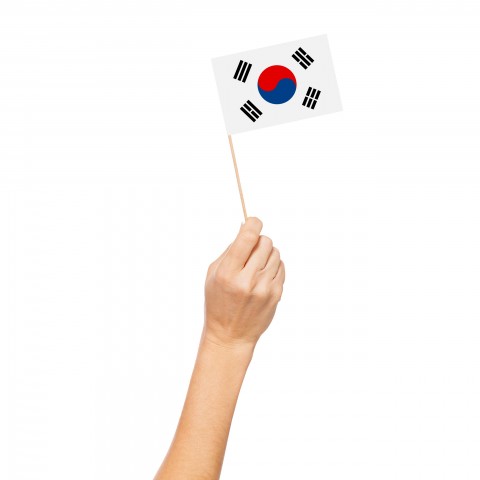
11. How KoreanClass101.com Can Help You with Korean
If you have any questions regarding the travel phrases mentioned above (or other questions about Korean culture), we’ll be more than happy to answer them for you at the KoreanClass101.com forum . On our site, especially the forum, you can find tons of cultural insights and useful tips to help you study Korean. Feel free to check out the forum when you have time.
Also, KoreanClass101.com offers many free Korean lessons; you can access these lessons by simply creating a free lifetime account.
Learning Korean travel phrases, along with essential cultural information, is no easy task. But the more that you use Korean travel phrases, the easier it will get. Trust us!
We hope that you found this blog useful, and that you enjoy your trip to Korea! These basic Korean travel phrases for tourists will help you get around South Korea like it’s nothing. 🙂
Or sign up using Facebook
Got an account? Sign in here

18 Useful Korean Greetings You Should Learn

How to Say I Love You in Korean – Romantic Word List

How To Say ‘Thank you’ in Korean

Let’s Learn about Korean National Anthem (History, Lyrics)

30+ Useful Korean Classroom Phrases and Words

60+Korean Restaurant Phrases: Korean Phrases for Ordering Food
Blood type personality in korea: what it says about you.
- Austin's Orphanage
- Forum Spotlight
- Explore Korea
- Scheduled Maintenance
- Guest Bloggers
- Hyunwoo's Mindmap
- KClass Videos
- How Koreans Do It
- Humor in Korean
- Korean Holiday
- Korean Music
- Korean Language
- Korean Translation
- Advanced Korean
- Korean Alphabet
- Korean Grammar
- Korean Lessons
- Korean Online
- Korean Phrases
- Korean Podcasts
- Korean Words
- Tips & Techniques
- Listener Videos
- Media Coverage
- Feature Spotlight
- Steve's House
- Success Stories
- Team KoreanClass101
- Travels in Korea
- Word of the Day
- Words with Many Faces
- Visas, Immigration
Copyright © 2024 Innovative Language Learning. All rights reserved. KoreanClass101.com Privacy Policy | Terms of Use . This site is protected by reCAPTCHA and the Google Privacy Policy and Terms of Service apply.
- , March 31, 2023
23+ Korean Travel Phrases To Brush Up On Your Skills
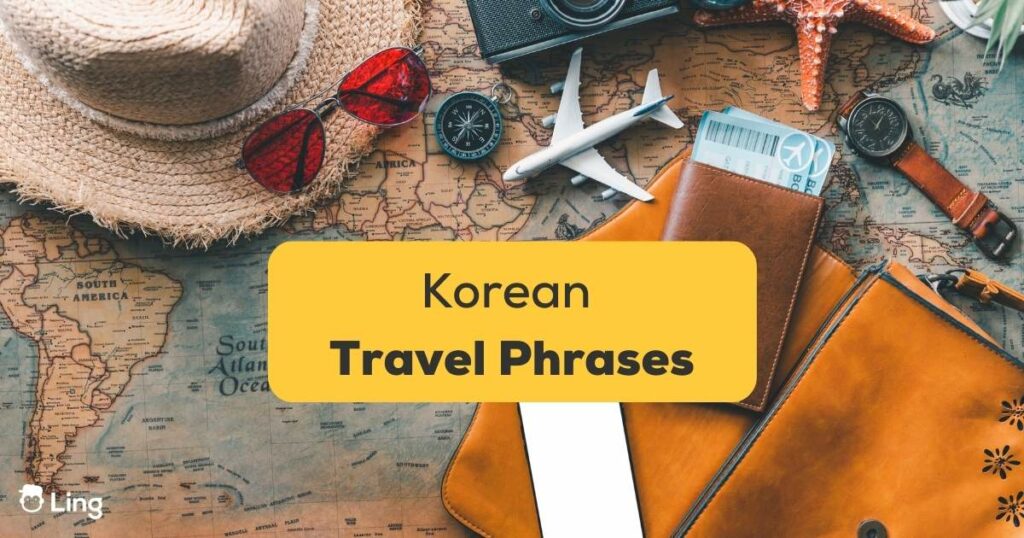
Are you dreaming of a trip to Korea? Whether you’re a seasoned traveler or a first-time explorer, knowing some essential Korean phrases can make your journey even more magical. Imagine walking into a bustling street market and greeting the locals with a friendly “annyeonghaseyo,” or ordering in fluent Korean at Korean restaurants.
Being able to communicate with people and connect with the culture can transform your travel experience from ordinary to extraordinary. In this article, we’ll share some must-know Korean travel phrases that will help you navigate through different situations and make the most out of your travels in Korea.
Don’t worry if you’re a beginner or have limited knowledge of the language; these Korean phrases will equip you with the tools you need to communicate effectively and confidently. So get ready to immerse yourself in the vibrant and beautiful Korean culture with these words and phrases!
Traveling In Korea
As you plan your journey to this enchanting land, deciding on the mode of transportation should be one of your priorities. Luckily, Korea has an efficient and comprehensive public transportation system that makes it easy to navigate the country. The subway system is a popular and convenient option, offering clean and safe rides to all major cities and tourist attractions. You can also opt for buses that connect smaller towns and rural areas. And if you prefer the comfort and speed of a train, the KTX high-speed train system has got you covered.
Once you’re on the move, the sheer number of fascinating places to visit in Korea can be overwhelming. Among the must-see historical sites is Gyeongbokgung Palace, a majestic 14th-century palace that served as the main palace of the Joseon Dynasty. Bukchon Hanok Village, located in the heart of Seoul, offers a glimpse into traditional Korean culture and architecture, while Gyeongju, the ancient capital of the Silla Dynasty, is home to numerous historical sites and artifacts.
Korea’s natural beauty is another reason to visit this country. The island of Jeju, a popular vacation spot, boasts stunning beaches, natural wonders, and mouth-watering local Korean food . Seoraksan National Park, located in the northern part of Korea, is a hiker’s paradise, with beautiful mountains, waterfalls, and scenic trails that offer a unique experience of Korea’s natural beauty.
Busan, the port city known for its beaches, seafood, and nightlife, is an excellent place to experience Korean culture. And for those who want a bird’s eye view of the city, the Namsan Tower in Seoul offers a breathtaking panoramic view of the city and is a popular spot for couples to take romantic photos.
Basic Korean Words For Travel
When traveling to Korea, it’s important to know some basic Korean phrases to communicate with locals. “안녕하세요 (annyeonghaseyo)” is a polite greeting to say “Hello.” “감사합니다 (gamsahamnida)” means “Thank you,” and “실례합니다 (sillyehamnida)” is the Korean word for “Excuse me.”
But that’s not all; there’s a long list of words that you should know about.
Korean Travel Phrases
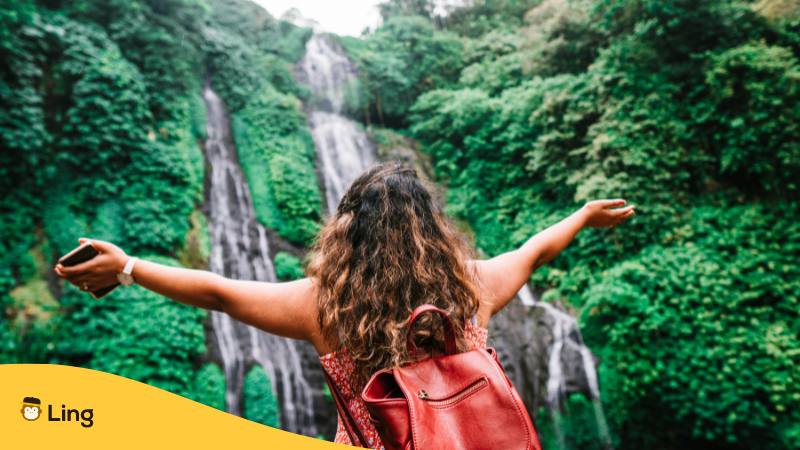
Let’s now learn Korean travel phrases for different situations; you might need them if you are traveling to Korea or are accompanying a Korean person on your journey.
Essential Korean Phrases To Ask for Help
As you explore the vibrant streets of South Korea, you may find yourself in need of some assistance, especially if you only speak English. Don’t worry; the friendly locals are always happy to help! If you’re unsure of how to communicate your needs, try using some of these handy phrases.
Basic Korean Phrases For Travel
You should also know that there are certain common Korean phrases widely spoken in South Korea. You should know the importance of these basic phrases from a cultural perspective to use them properly when talking with Korean people .
In Korean culture, these phrases hold great importance, as they represent the value placed on politeness and respect in communication. Using these Korean phrases appropriately and in the right context can help you to communicate more effectively and respectfully with native Korean speakers.
So, here are some more phrases for you to learn and embrace Korean culture with open arms!
Learn To Speak Korean With Ling
If you want to speak the Korean language like a pro, then Ling is a perfect start. This amazing language-learning app will definitely help you get fluent in Korean in no time, so you can speak and read Korean like a pro. With Ling, you can boost your language skills and learn any of the 60+ languages offered.
Did that catch your attention? If yes, why not download the Ling app on the App Store or Play Store to start learning Korean?
Happy Learning!
Leave a Reply Cancel reply
Your email address will not be published. Required fields are marked *
Save my name, email, and website in this browser for the next time I comment.

People also read
50+ Romantic Polish Love Words and Phrases To Remember

50+ Best List Of Countries And Nationalities In Polish

49+ Basic Polish Phrases For A Memorable Trip

10+ Easy Disaster Vocabulary In Polish

#1 Best Way To Say Happy New Year In Polish

Introduce Yourself In Polish: #1 Amazing Guide
What makes learning with ling special, interactive exercises.
Improve your pronunciation by starting a conversation with our app’s interactive chatbot
Engaging activities
Practice your skills with mini-games and track your progress with fun quizzes
Mix of languages
Choose from over 60 languages, both big and small, and listen to audio from native speakers
Proven results
Backed by linguistic research, our learning methods can help you achieve fluency in record time
Southeast Asia
East europe.
© 2024 Simya Solutions Ltd.
101 Basic Korean Words for Travel in South Korea
Erin E. Honigman
When you visit South Korea, you'll find that English is quite common in big international cities like Seoul or Busan. English academies and immersion schools have been flourishing for decades, so it's safe to say you'll be able to get by without speaking much Korean.
However, if you want to explore more of the Korean peninsula (and trust me, you definitely do), be sure to practice a few basic traveling phrases in Korean. Not only will knowing some Korean phrases help you avoid an awkward situation -like sitting in someone's reserved seat or ordering squid as snack- but it will also impress the locals. Korean people will definitely appreciate your attempt to communicate in their language. If you know some basic traveling phrases, it shows respect for Korean culture.
So, whether you're planning to take a trip to South Korea or even if you're just curious about Korean culture , use our list of 101 basic Korean phrases to improve you Korean speaking and listening skills.
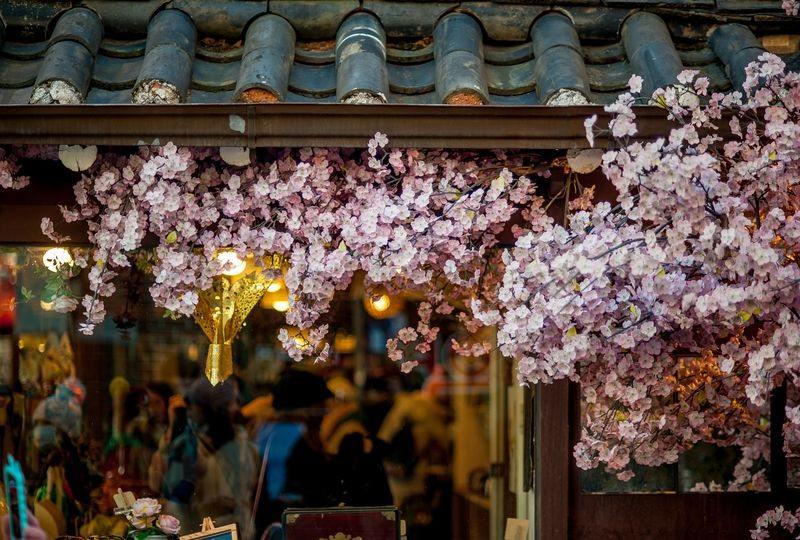
Why Visit South Korea?
Most people don't immediately think of South Korea when planning a trip to Asia. Isntead, they opt for the more popular beaches of Thailand and the rolling rice hills in Vietnam.
But guess what. Korea has both of these things, and more. South Korea is truly a unique country to visit, and it has something to offer for every tourist's preference.
Although small in land area, the country is rich in regional and geographical diversity. Surrounded by the sea on three sides, South Korea has miles of beautiful beaches . Hiking more your thing? Then Korea is the perfect place to go. Over 70% of South Korea is covered in mountains, so you won't miss out on the beautiful nature.
If you're not really a nature person, don't worry. You'll be captivated by Korean culture and history. After all, Korea is home to 11 Unesco World Heritage sites , including temples and fortresses from ancient dynasties. You can also spend hours shopping, or my personal favorite: indulge in delicious Korean delicacies that vary across the country.
Have I enticed you to visit South Korea yet? Even if you can't take a trip overseas soon, learning Korean travel phrases will help expand your Korean vocabulary and prepare you for any future travels.
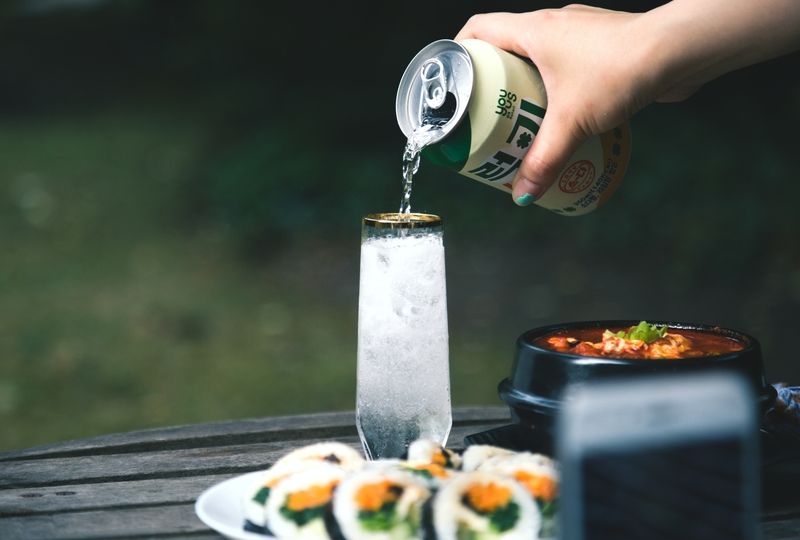
Basic Korean Phrases for South Korea Travel
It's important to note that Koreans use different verb conjugations depending on the person they are speaking to. The different conjugations imply various levels of respect and politeness. For the purpose of traveling in Korea, it's okay to use either the formal or polite form of the verb, and that's what will be included on this list. Koreans won't expect foreingers to understand the sublte nuances of Korean honorifics, so just being polite is the best way to go.
Also, you might notice several phrases are listed more than once. That's because unlike in English, Koreans have different variations of words and phrases for very specific situations.
Now, let's learn some basic Korean phrases for travel!
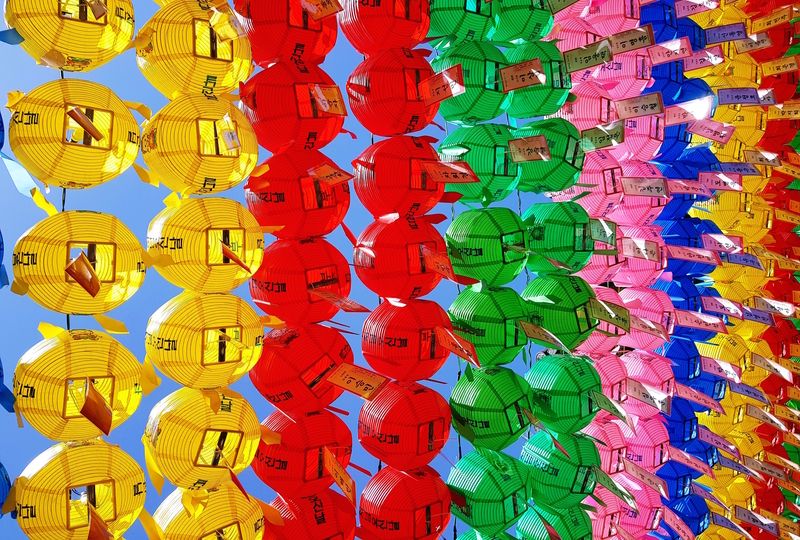
The Most Basic Korean Words You Must Know
- An-nyeong ha-se-yo (안녕하세요) :Hello. This is the most common way to greet someone at anytime of the day. You'll be greeted any time you enter a shop, restaurant, taxi- well anywhere, really. So you should learn how to say hello in response.
- An-nyeong-hi ga-se-yo (안녕히 가세요): Goodbye. This is the goodbye to use if someone else is leaving. "Ga-se-yo" means to go,so you are basically telling someone to go peacefully.
- An-nyeong-hi gye-se-yo (안녕히 계세요): Goodbye. This is the goodbye to use when YOU are leaving. There is a slight difference in the endings of the two goodbyes; however, don't worry too much if you don't remember the difference. You can always just say "an-nyeong."
- Ne (네): Yes
- A-ni-yo (아니요): No
- A-ma-do (아마도): Maybe
- Mol-la-yo (몰라요): I don't know.
- Jam-shi-man-yo (잠시만요): Excuse me./Just a moment. You can use this phrase to get the attention of others, for example if you need someone to move out of your way. You can also use this to mean "wait a minute."
- Jeo-gi-yo (저기요): Excuse me. Use this version of "excuse me" to get attention in a restaurant or business.
- Sil-lye-hab-ni-da (실례합니다): Excuse me. This version of excuse me is used to apologize, like if you accidentally bump into someone.
- Mi-an-hab-ni-da (미안합니다): Sorry.
- Gam-sa-hab-ni-da(감사합니다): Thank you.
- Gwaen-chan-ayo(괜찮아요): It's alright/never mind/it's okay.
- Cheon-man-e-yo(천만에요): You're welcome/don't mention it.
- Shi (씨): Add this at the end of someone's name to be polite. It means Mr./Ms. regardless of gender or marital status.
- Eo-je (어제): Yesterday.
- Oh-neul (오늘): Today.
- Nae-il (내일): Tomorrow.
- Ji-guem (지금): Right now.
- Na-jung-eh (나중에): Later.
- Eol-ma-ye-yo?(얼마예요?): How much is it?
- I-geo ju-se-yo.(이거 주세요.): Give me this, please.
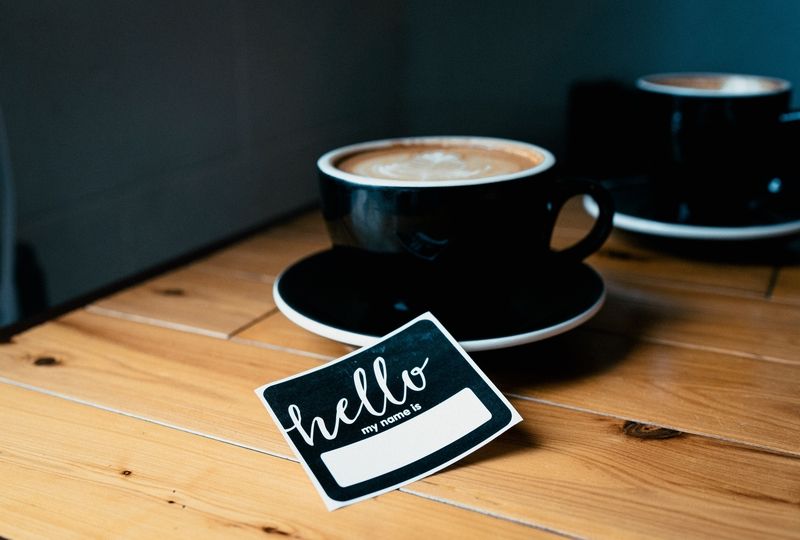
Introducing Yourself
- Ee-reum-ee mo-eh-yo(이름이 뭐에요?): What's your name?
- Je ileum-eun (your name)ibnida.(제 이름은 (your name)입니다.): My name is _________.
- Jeo-neun (country)e-seo wass-eo- yo. (저는 country에서 왔어요): : I'm from ____________. For a list of countries, click here .
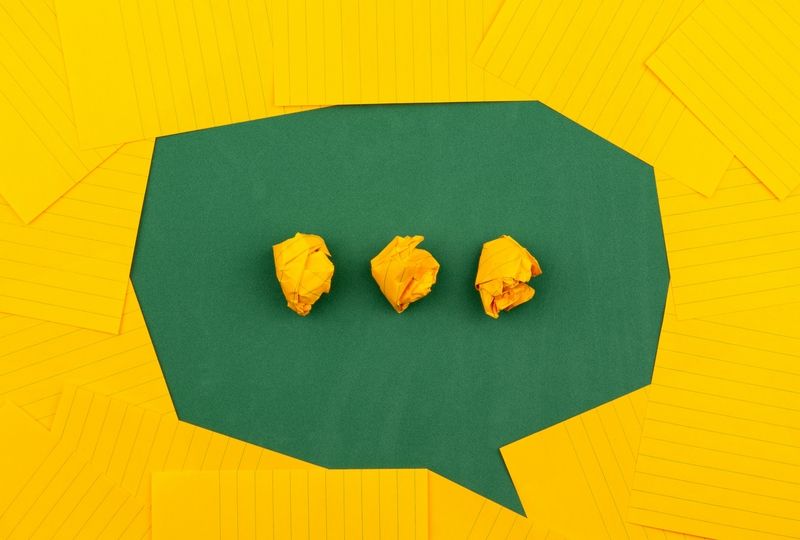
Making Yourself Understood
Of course, if you are not Korean, you might stick out as a foreigner in smaller cities. Still, some locals might mistake you for a expat living in South korea and assume you can communicate well. Use these Korean phrases to make yourself understood.
- Han-guk-mal mot hae-yo.(한국말 못 해요.): I can't speak Korean.
- Han-guk-mal jo-geum mal hal su iss-eoyo. (한국말 조금 말 할 수 있어요.): I can speak a little Korean.
- I-hae mos hae-yo. (이해 못 해요): I don't understand.
- Cheon-cheon-hi mal-hae-jus-eyo. (천천히 말해주세요): Please speak slowly.
- Da-si han beon mal-hae-jus-eyo(다시 한 번 말해주세요.): Please say it again.
- Yeong-eo ha-se-yo? (영어 하세요?): Do you speak English?

Asking for Help
If you're traveling in a country that doesn't speak your language, there's probably going to be several times that you need to ask for help. Whether it's an emergency situation or you're just looking for a toilet (which, okay is also an emergency sometimes), here are basic Korean phrases to ask for help.
- Do-wa-ju-se-yo (도와주세요) : Help me!
- Gyeong-chal-eul bul-eu-se-yo.(경찰을 부르세요): Call the police.
- Eung-geub sang-hwang-i-e-yo! (응급 상황이에요): It's an emergency.
- Ui-sa-ga pil-yo hae-yo. (의사가 필요 해요): I need a doctor.
- Gu-geub-cha-leul bul-leo ju-se-yo. (구급차를 불러 주세요): Call an ambulance.
- Ah-pa-yo. (아파요): I feel sick.
- Jil-mun-i is-seub-ni-da. (질문이 있습니다): : I have a question.
- Byeong-won (병원): : Hospital
- Gyeong-chal-seo (경찰서): Police station
- Yag-guk (약국): Pharmacy
- Eun-haeng (은행): Bank
- Hwa-jang-sil (화장실): Bathroom
- __eh ga-ya hay-yo ( __ 에 가야 해요): This sentence means, I have to go to the (place). So, you can, say "byeonh-won-eh ga-ya hay-yo," to mean "I have to go to the hospital.
- Eo-di-ye-yo? (어디예요?): Where is it? You can also add the place in front of the question. So, if you ask "Hwa-jang-sil eo-di-ye-yo?," you're asking where the bathroom is.
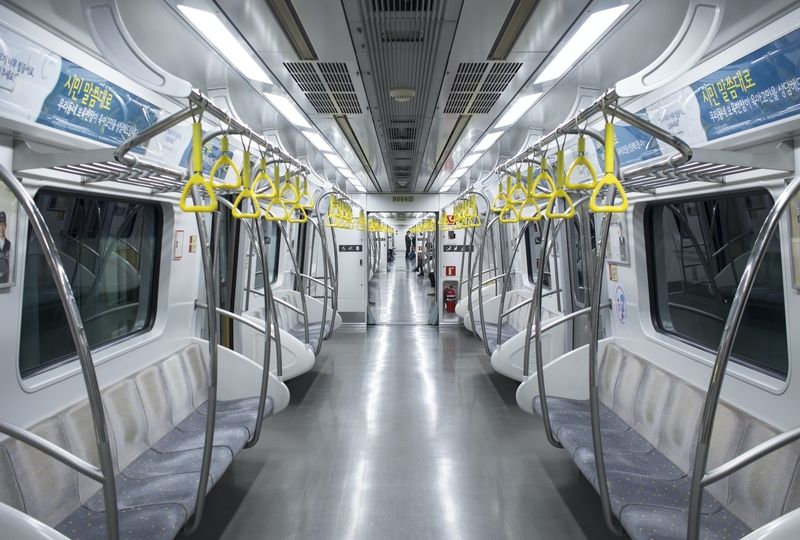
Transportaion
Lucky for travelers, getting around South Korea is cheap and easy. You can use applications on your phone for accurate bus times and maps. South Korea has a renowned public transportation system. It's clean, cheap, and efficient, so you can get from one end of the country to the other in no time at all. Although most travel hubs have some English, you still might need to use these phrases when getting around the country. Use the term "where" (#45) to make questiosn with some of these words.
- Beo-su(버스): Bus
- Beo-seu jeong-lyu-jang (버스 정류장): Bus stop
- I beo-seu (place) ga-na-yo?(이 버스 place name 가나요?): Does this bus go to ___ ?
- Da-eum beo-seu-neun eon-je iss-eo-yo?(다음 버스는 언제 있어요?): When is the next bus?
- Gi-cha(기차): Train. It's important to note here that the high speed train in Korea is called the KTX , so if you say "KTX," you will be understood.
- Ji-hae-chol (지하철): Subway
- Ji-hae-chol yeog (지하철역): Subway station
- Bi-haeng-gi (비행기): Airplane
- Gong-hang (공항): Airport
- Taek-si (택시): Taxi. For an easier way to hail a taxi, you can use this phone app .
- Seoull-yeoge ga-go si-peun-de-yo.(서울역에 가고 싶은데요.): I'd like to go to Seoul Station. Of course, if you're in a taxi, you can interchange any location with the word Seoul.
- Pyo (표): Ticket
- Bal-gwon-gi (발권기): : Ticketing machine
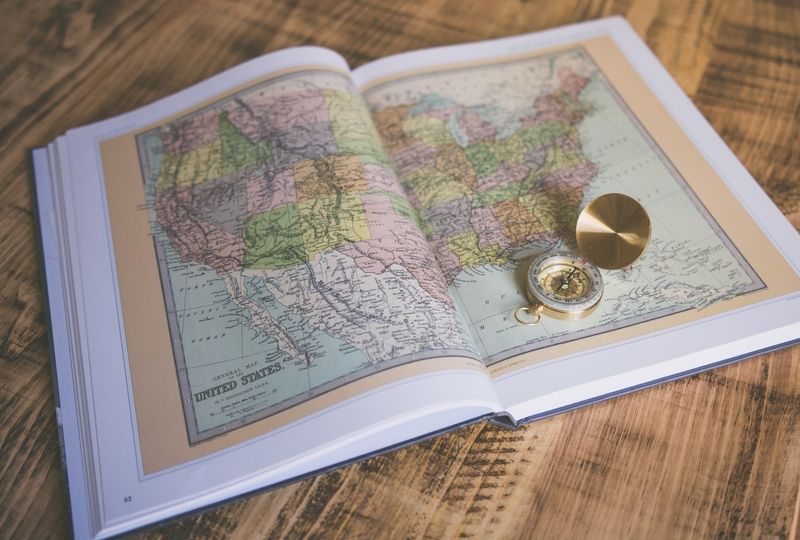
- Dong (동): East
- Seo (서): West
- Nam (남): South
- Buk (북): Buk
- Yeo-gi (여기): Here
- Geo-gi (거기): There
- Jeo-gi (저기): Over there
- O-leun-jjog-eulo ga-se-yo. (오른쪽으로 가세요): Turn right.
- Oen-jjog-eu-lo ga-se-yo. (왼쪽으로 가세요): Turn left.
- Jig-jin-ha-se-yo. (직진하세요.): Go straight.
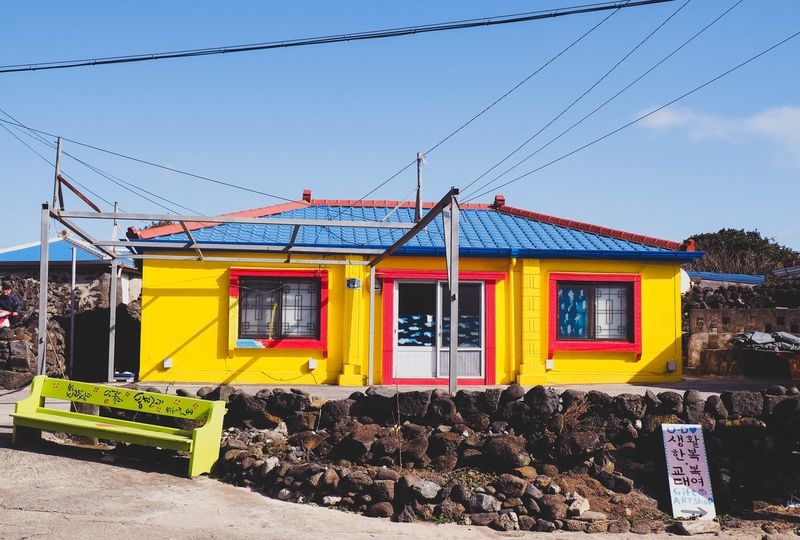
Accomodation
Although you can definitely find five star hotels in Korea, there are a number of more affordalbe - and more unique- options to look at while you travel around the country. 69. Sa-u-na (사우나): Sauna. Did you know that you can sleep on the floor of a sauna? This is the cheapest place to stay, usually under 10,000 Korean won. You'll be given a mat on a warm floor. 70. Ho-seu-tel (호스텔): Hostel. 71. Min-bak (민박): Min-bak. A minbak usually is a simple room with access to a kitchen and a private bathroom. They can range from anything like a motel to a room in the owners' house. 72. Mo-tel (모텔): Motel. Motels in Korea are often themed and geard toward lovers, so if you go with this option, make sure you find one that's nice and clean. 73. Gue-su-tu Ha-oe-seu (게스트 하우스): Guesthouse. 74. Ho-tel (호텔): Hotel. 75. Pen-sion (펜션): Pension. Pensions are like partially furnished houses or apartments that you can rent. They're affordable and usually quite beautiful, as most are in the countryside or in a scenic area. 76. Ri-jor-teu (리조트): Resort. 77. Bin-bang iss-eo-yo?(빈방 있어요?): Do you have any vacancies? 78. I-il mug-gess-eo-yo(이일 묵겠어요): I'm staying for two days. In this case, the first syllable "i" is the number for 2. You can use other numbers if you plan to stay longer. 79. I in-yong chim-dae (이 인용 침대): A bed for two people. 80. Ye-yag-eul ha-go sip-eoyo. (예약을 하고 싶어요): I'd like to make a reservation.
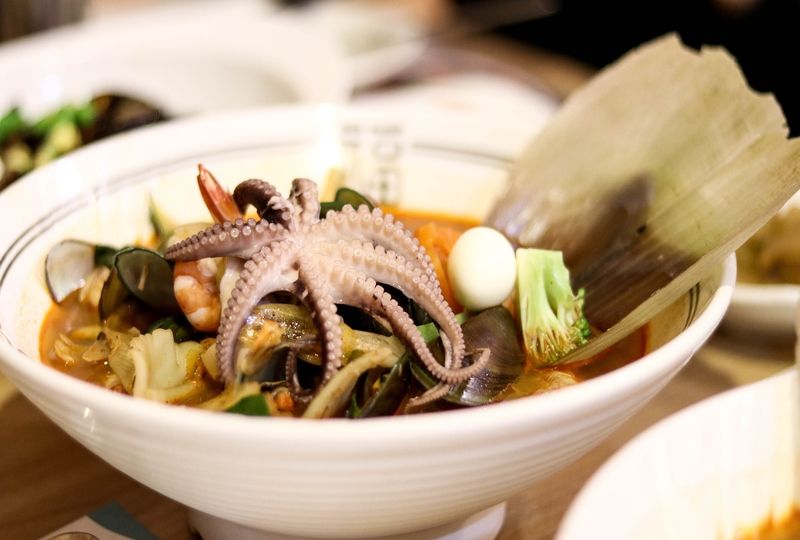
At the Cafe or Restaurant
- Bae-go-pa-yo. (배고파요): I'm hungry.
- Ka-deu bad-euse-yo? (카드 받으세요?): Do you accept cards? A lot of Korean restaurants are still cash only, so it's best to carry some Korean money or check before ordering. If you forget, don't worry. There are ATM's on almost every street
- Ttalo-ttalo gye-san-hal-ge-yo. (따로따로 계산할게요): Please split the bill. Most Koreans share the meal and one person pays the bill. Again, it's best to carry cash so you and your companions can all contribute if necessary.
- Po-jang-hae jus-e-yo. (포장해주세요): Please make it to go.
- Wai-pai iss-eo-yo?(와이파이 있어요?): Do you have wifi?
- Bi-mil beon-ho all-yeo ju-seyo. (비밀 번호 알려 주세요): Please tell me the wifi password.
- Kon-sen-teu is-seo-yo?(콘센트 있어요?): Do you have electrical outlets?
- Chae-sig men-yu iss-eo-yo?(채식 메뉴 있어요?): Do you have a vegetarian menu?
- Da meo-geul su is-seo-yo. (다 먹을 수 있어요): I can eat anything.
- Mwo-ga mas-iss-eo-yo?(뭐가 맛있어요?): What is delicious?
- All-eo-ji iss-eo-yo. (알러지 있어요.): I have an allergy.
- (이거 매워요?): Is it spicy? Now, I suppose spice tolerance is subjective. However, often times Koreans will worry about the level of spice foreigners can handle. They think kimchi is very spicy. In my experience, Korean "spice" is a little sweet, and it's delicious. If you're like me, you won't find it spicy at all, so ask for more pepper.
- Mas-is-seo-yo!(맛있어요!): It's delicious.
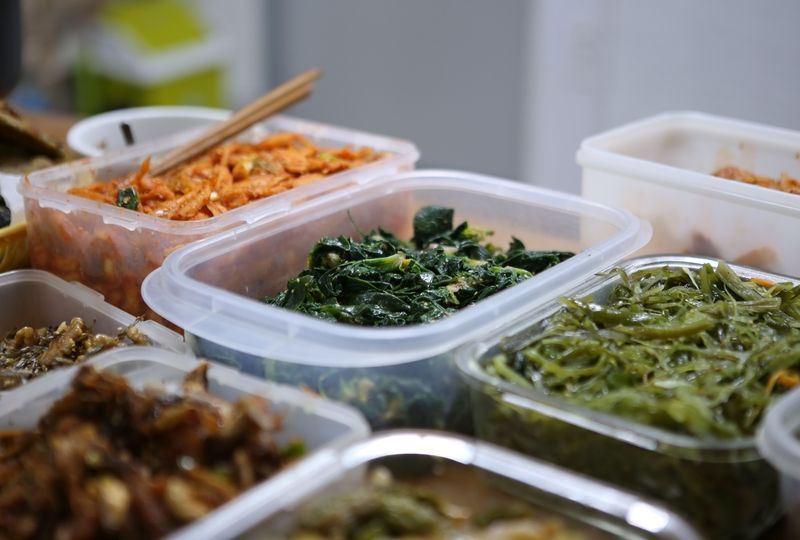
Miscellaneous
- Geon-be! (건배!) : Cheers!
- A-ya! (아야!): Ouch!
- Jo-ah-yo. (좋아요): Good/I like it.
- An jo-ah-yo. (안 좋아요): Bad.
- Sel-ka (셀카): Selfie
- Seo-bis-eau (서비스): Service. This refers to a free item at a restuarant or store.
- Hwa-i-ting! (화이팅!): You can do it! Fighting!
- Meong meong (멍멍): This is the sound of a dog barking in Korean. Cute, right?
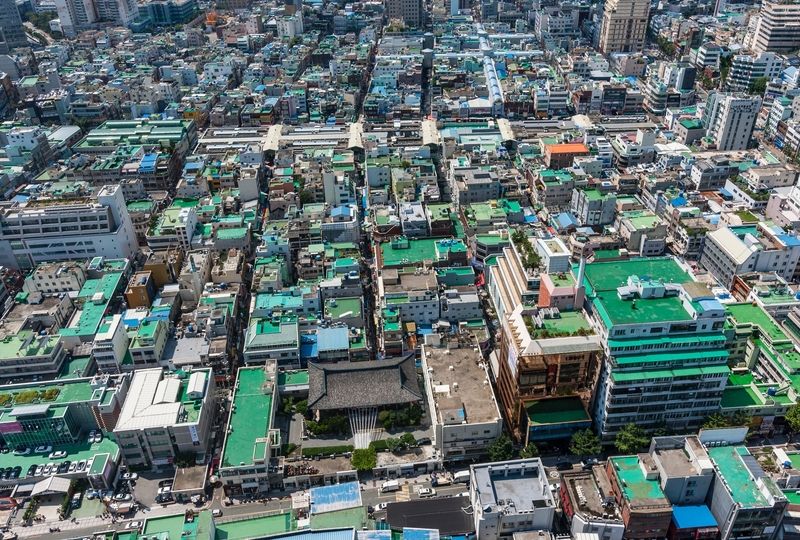
Practice Makes Perfect
While these words look simple on paper, you might want to practice speaking them outloud to make sure your pronunciation is perfect. Lucky for you, Speechling coaches are here to help. Try Speechling's Freestyle Mode! You can input and listen to any Korean traveling phrase, then record your own pronunciation. Speechling's dedicated coaches will give you personalized feedback. Your pronunciation will be like a native speaker's in no time at all!
Speechling is a nonprofit app and website that combines human coaching with technology to improve your foreign language speaking.

Survival Korean – Essential Parts of the Language
Last modified: Jul 10, 2023 | 12 min read | By Laura Toyryla
Do you know survival Korean ? Imagine this.
The day has finally come for your South Korea trip. Everything is planned out, but could there still be something missing before the puzzle is complete?
Oh no, how do you plan to communicate with the locals once you arrive?
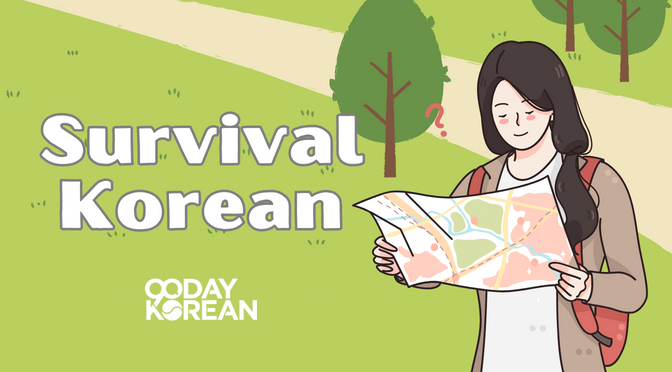
Not to worry, we’ve got you covered! We’re going to give you the essential parts of the Korean language so you can comfortably communicate and understand Korean.
Learn this basic survival Korean , and you will love your trip to Korea even more!
- 1.1 Common Greetings
- 1.2 Common Korean Greetings For Friends
- 1.3 Common Courtesies
- 2 Basic Introductions
- 3.1 Asking For Directions
- 3.2 Giving Directions
- 4 Restaurants
- 6 Emergency Phrases
- 7 Communication Trouble
You may wonder, “ will Koreans talk to me in Korean? “. Learn the phrases and Korean words below, and you’ll be able to speak Korean for your next trip out here. It’s good and helpful to learn Korean before your visit or stay in Korea. If you’re already living in Korea, learning Korean will be a great advantage for you and help you understand Korean culture.
Survival Korean Phrases
When traveling or living in Korea, it is important to know essential words and phrases of the Korean language, such as their common greetings and courtesies. It’s equally important to know Korean culture. This will greatly help you have an easy and comfortable stay in Korea. It’ll be helpful when you communicate with and talk to native Koreans.
These are the survival Korean phrases and questions that you’re going to want to learn first. We’ve given them to you in Korean and romanized English to help you read the sentence and phrases if you can’t read Hangeul yet. To hear the audio, click the text with the yellow speaker icon.
For a complete list of Korean phrases, go here: https://www.90daykorean.com/korean-phrases/ .
Use the phrases and Korean words in the lessons below for your next trip to South Korea instead of the phrases you’d find in a guidebook.
Common Greetings
In this section, you’ll learn the essential and common greetings you’ll hear and use when traveling or living in Korea. These basic Korean phrases are a good addition to your Korean language learning. We’ve written the words and Korean phrases in Hangul to help you learn the correct Korean pronunciation.
Hello – 안녕하세요 (annyeonghaseyo)
There are a few ways to say “hello” in Korean , but this is the best one to use. It’s by far the most common and can be used in all situations. It’s the first survival Korean phrase you should learn if you’re visiting or living in Korea. It will help you sound and appear like a local. It’ll also help you sound friendly and polite to Koreans.
Goodbye (to the person leaving) – 안녕히가세요 (annyeonghigaseyo)
This is a bit different than “goodbye” in English. The difference between these two survival Korean phrases is that the latter is said when the person you are saying goodbye to will stay in the place you are leaving. For example, if you are a group dinner and a friend is leaving, you would say 안녕히가세요 (annyeonghigaseyo) .
Goodbye (to the person staying) – 안녕히계세요 (annyeonghigyeseyo)
If you’re saying goodbye to a friend who is leaving, your friend would, in turn, say 안녕히계세요 (annyeonghigyeseyo) .
If both of you are leaving the shared location at the same time, then both of you can say 안녕히가세요 (annyeonghigaseyo).
Nice to meet you – 만나서 반갑습니다 (mannaseo bangapseumnida)
This is the formal version of this survival Korean phrase and the one you are most likely to hear from people you meet in Korea.
Nice to meet you – 만나서 반가워요(mannaseo bangawoyo)
For a slightly less formal but still polite version, you can say. Feel free to use it with someone who is around your age.
Note that the Korean age is different from the international age . It’s not critical for learning the language, but age is a common question when you first meet Koreans. It may not be that critical, but learning Korean age can help you better understand the language and culture.
Thank you – 감사합니다 (gamsahamnida)
Unless you are close with the person, this is the main way to say “thank you” . You can also use the survival Korean phrase 고맙습니다 (gomapseumnida). They both mean the same thing and have the same level of formality and politeness.
Common Korean Greetings For Friends
The phrases and sentences below are the usual greetings and responses you’ll use and hear when meeting friends in Korea. These sentences are in polite and standard form. If you’re traveling or living in Korea, it’s best for you to learn these greetings.
How are you? – 어떻게 지내세요? (eotteoke jinaeseyo)
This is the formal version of the survival Korean question that uses Korean honorifics . You may also drop the honorifics and use 어떻게 지내요? (eotteoke jinaeyo?) if the person is closer to you or one of your friends.
What have you been doing these days? – 뭐 하면서 지내세요? (mwo hamyeonseo jinaeseyo)
This survival Korean phrase is formal and is similar to “How are you?”. For the polite but less formal version of this phrase, you can use 뭐 하면서 지내요? (mwo hamyeonseo jinaeyo?)
Are you doing well? – 잘 지내세요? (jal jinaeseyo)
For this survival Korean phrase, you can use the alternative of 지내요 (jinaeyo). The Korean verb 지내요 (jinaeyo) is quite common, so it’s handy when learning the language.
I am doing good – 잘 지내요 (jal jinaeyo)
This is a useful survival Korean response. You wouldn’t use the Korean honorific form when talking about yourself. This phrase is the standard and polite version.
Common Courtesies
When traveling or living in Korea, you’ll, one way or another, be using these phrases. These will be helpful in getting around Korea.
Just a moment – 잠시만요 (jamsimanyo) / 잠깐만요 (jamkkanmanyo)
Both of these survival Korean phrases mean the same thing. 잠깐만요 (jamkkanmanyo) can also be used to get someone’s attention, such as in situations when you want to say “excuse me” to pass someone on the subway.

Please wait a moment – 잠시만 기다리세요 (jamsiman gidariseyo)
Please wait a moment (more polite) – 잠시만 기다려주세요 (jamsiman gidaryeojuseyo)
This survival Korean phrase is very similar to the “just a moment” phrases above, but it has some additional formality. That is why they are longer.
Excuse me – 실례합니다 (sillyehamnida)
This survival Korean phrase is typically used when you either need to pass someone walking in front of you or inside the subway or if you need to catch someone’s attention to ask a question in public.
For getting the restaurant staff’s attention , you’d use 여기요 (yeogiyo) or 저기요(jeogiyo) .
I’m sorry – 죄송합니다 (joesonghamnida)
This is a handy survival Korean phrase. You may also hear the phrase 미안합니다 (mianhamnida) , which also means sorry and has the same formality. You can use both essential phrases in situations where you need to apologize to older people or hold a higher position than you.

If you can’t read Hangeul (the Korean Alphabet) yet, check out this step-by-step guide: https://www.90daykorean.com/how-to-learn-the-korean-alphabet/
Basic Introductions
When traveling or living in Korea, it’s inevitable that there’ll be people you’ll meet. You must have some handy sentences you’ll use when getting and giving out information about yourself.
My name is John (standard) – 제 이름은 존 이에요 (je ireumeun jonieyo)
This survival Korean phrase is the standard and polite form of introducing yourself .
My name is John (formal) – 제 이름은 존 입니다 (je ireumeun jonimnida)
This second survival Korean phrase for introducing oneself is more formal, but it is actually not used as the first option.
What is your name? – 성함이 어떻게 되세요? (seonghami eotteoke doeseyo)
This survival Korean phrase is used when meeting someone for the first time. It’s a phrase you’ll use when you want to get to know someone new . Using the noun 성함이 (seonghami) is the honorific and polite version for “name”. You may also hear the word 이름이 (ireumi) used.
I am from America – 저는 미국 에서 왔어요 (jeoneun migugeseo wasseoyo)
This is one of the expat phrases overseas learners must learn when they visit Korea. This will help them with letting their Korean friends know where they’re from or which country they’re from.
I am a German – 저는 독일 사람이에요 (jeoneun dogil saramieyo)
The first survival Korean phrase 저는 미국에서 왔어요 literally translates to “I came from X country,” whereas the second option translates to “I am from X country.” Either one is excellent to use. You can substitute your country in the blanks using this list of countries in Korean .
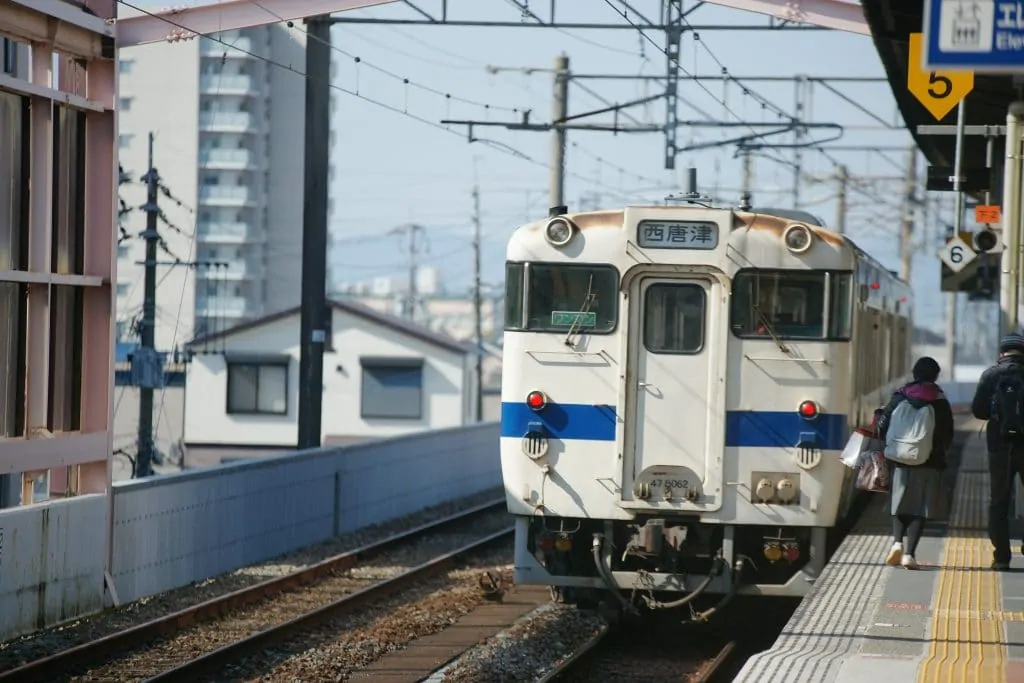
Korean Phrases for Travel
Use these survival Korean phrases and questions to help you navigate around the cities in South Korea. These will be especially helpful when asking for and giving directions .
Asking For Directions
If you don’t have Korean friends, below are helpful expat phrases that you can use to ask for directions while you stay in Korea. We’ve also included essential grammar points and vocabulary so you can use them in many situations.
Where is the closest hospital ? – 가장 가까운 병원 이 어디예요? (gajang gakkaun byeongwon i eodiyeyo)
You can use different places in place of the blank word. The 이 (i) is a particle that is commonly used in the Korean language, but you can omit it if you’d like. It is optional and can make learning this phrase a bit simpler.
Where is the bathroom ? – 화장실 은 어디에 있어요? ( hwajangsir eun eodie isseoyo)
This is a useful pattern for asking questions. You can substitute many different words into the blanks above. For example:
- Bathroom – 화장실 (hwajangsil)
- Subway station – 지하철역 (jihacheollyeok)
- Bus stop – 버스정류장 (beoseujeongnyujang)
- Movie theatre – 영화관 (yeonghwagwan)
- Hospital – 병원 (byeongwon)
Giving Directions
Below are phrases that you can use to ask or give directions in the Korean language . If you’ll stay in Korea for quite some time, these phrases will come in handy.
Do you know where Apgujeong station is? – 압구정역 어디인지 아세요? (apgujeongyeok eodiinji aseyo)
Go Right – 오른쪽으로 가세요 (oreunjjogeuro gaseyo) Go Left – 왼쪽으로 가세요 (oenjjogeuro gaseyo) Go Straight – 쭉 가세요 (jjuk gaseyo)
Take me to the hospital – 병원에 가 주세요 (byeongwone ga juseyo)
Use this survival Korean when you take a taxi while you navigate the city. Speak slowly and repeat yourself if necessary. There are some different words for driving directions , but taxi drivers in Korea will understand you using the above phrases.
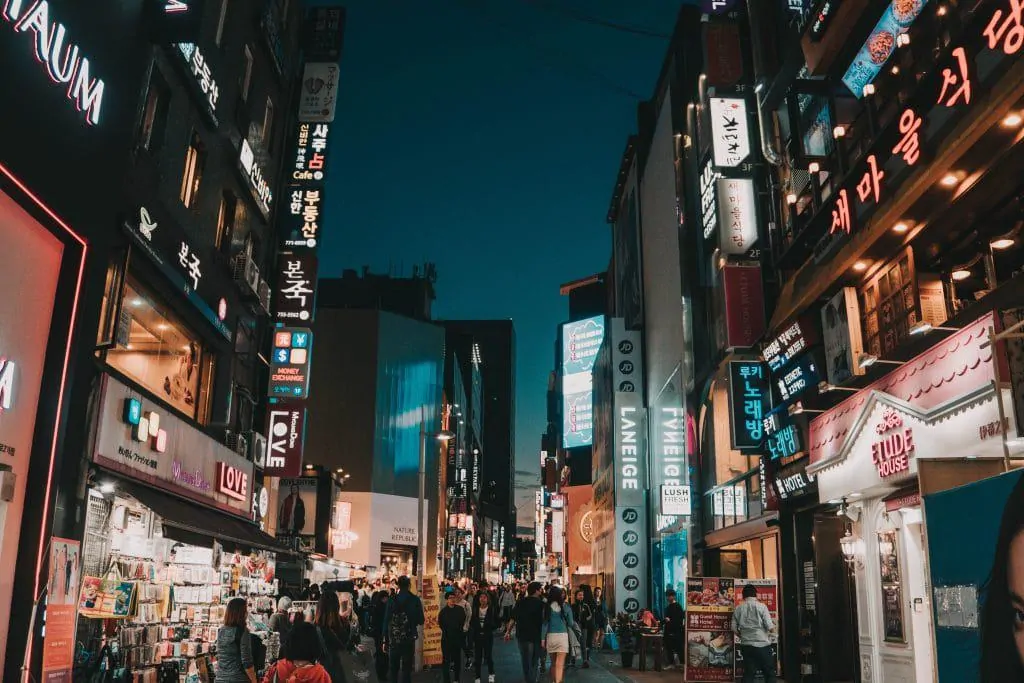
Restaurants
Below is a list of common survival Korean phrases when visiting restaurants .
Please give me a menu – 메뉴판 주세요 (menyupan juseyo)
In South Korea, typically, the menu is already available at the table or on the walls. Alternatively, the menu is brought to you as you sit down when you go to a restaurant. Sometimes there is an English menu, or the equivalent translations are written below each dish in English.
You may want to order some more after your first order. In those cases, you should ask for the menu separately.
Hold the whipped cream . – 생크림 빼 주세요 (saengkeurim ppae juseyo)
If you have food allergies and such, it’s important to use this when ordering. Note that the word 빼 (ppae) has a strong pronunciation sound at the beginning , which doesn’t exist in English.
Do you have wifi here ? – 와이파이 있어요? (waipai isseoyo) Do you have wifi here ? (formal) – 와이파이 있습니까? (waipai itseumnikka)
Most restaurants, cafes, and main areas in Korea have free public wifi.
Please give me _____ – _____ 주세요 (juseyo)
Whenever you are requesting something , you may want to add this to the sentence. You can substitute different words into the blank. Many words you may already know because they are derived from English words . That makes learning them easy; all you need is to get the pronunciation correct.
This one – 이것 (igeot)
If you don’t know the name of the item you want, you may point to it or touch it and use 이것 (igeot) to specify it.
How much is this? – 이거 얼마예요? (igeo eolmayeyo)
If you are shopping at markets or street shops, there are not always prices laid down on the items, and you will have to ask and haggle for them specifically. Knowing the Korean numbers will help. You can learn them here .
Please give me a discount – 깎아주세요 (kkakkajuseyo)
It is getting less and less prominent to haggle in Korea, but if you go to Namdaemun and Dongdaemun’s markets, you may still get lucky enough to get a discount.
Can I pay with a credit card? – 카드 돼요? (kadeu dwaeyo)
While most Koreans opt to use their cards when paying instead of cash, it is good, especially in tiny stores and restaurants, to double-check if that is a payment option.
Emergency Phrases
These are useful phrases to study for your trip to Korea. Although Korea is a safe country , it’s always good to be prepared for emergencies. It’s easy to
Please help! – 도와주세요! (dowajuseyo)
It’s an emergency – 긴급상황이에요 (gingeupsanghwangieyo)
Call the police – 경찰 불러 주세요 (gyeongchal bulleo juseyo)
Where is the nearest police station? – 제일 가까운 경찰서가 어디예요? (jeil gakkaun gyeongchalseoga eodiyeyo) I have a headache – 머리가 아파요 (meoriga apayo) Please take me to the hospital- 병원에 데려가 주세요 (byeongwone deryeoga juseyo) I need a doctor – 의사가 필요해요 (uisaga piryohaeyo)
Communication Trouble
If you’re having trouble understanding what a local is saying, here are some phrases that you can use to express that.
I don’t know – 모르겠어요 (moreugesseoyo)
I don’t understand – 이해 못 해요 (ihae mot haeyo)
I can’t speak Korean well – 한국말 잘 못해요 (hangungmal jal mothaeyo)
Do you speak English? – 영어 할 수 있어요? (yeongeo hal su isseoyo)
Do you speak English? (polite) – 영어가 가능하세요? (yeongeoga ganeunghaseyo)
Please speak slowly – 천천히 말해주세요 (cheoncheonhi malhaejuseyo)
Please repeat that for me. – 다시 말해주세요 (dasi malhaejuseyo)
If you liked this and want to learn more Korean, then head over to our guide here: https://www.90daykorean.com/learn-korean/
We also have a s tructured online Korean language course that will teach you how to have a 3-minute conversation in the first 90 days .
Now that you have this survival Korean in your repertoire, you’re ready for your South Korean adventure! We hope you have an amazing trip.
What survival Korean would you like to know? Let us know in the comments below!
Related Posts

Korean Anki: A Great Tool for Learning Words
Last modified: Jun 30, 2021 | 6 min read | By 90 Day Korean

Stop Studying Korean for the TOPIK
Last modified: Sep 02, 2022 | 3 min read | By 90 Day Korean
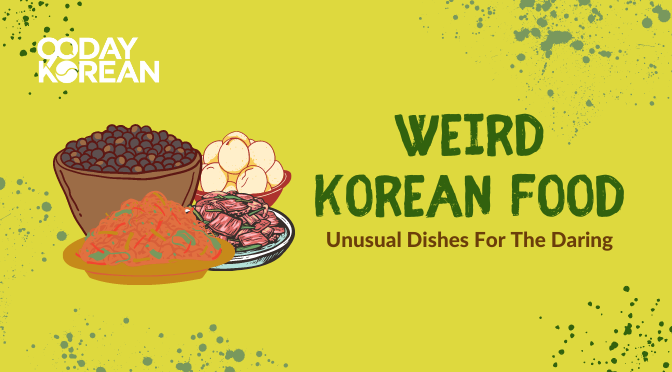
Weird Korean Food – Unusual Dishes That Might Surprise You
Last modified: Mar 03, 2023 | 9 min read | By 90 Day Korean
7 thoughts on “Survival Korean – Essential Parts of the Language”
Thanks for this lesson.
Sure, it’s our pleasure. ^^
Awesome! I might go to Korea for vacation ^^ which is helpful
That’s great! We’re glad that it has been valuable to you. ^^
Sure, it’s our pleasure. ^^
Can you make. How can we understand Korean easily. Pleasu
Leave a Comment Cancel Reply
Your email address will not be published. Required fields are marked *
Level up your skills and become a:

Physical Address
304 North Cardinal St. Dorchester Center, MA 02124

Korean Language 101: Basic Phrases For Travelers
- July 9, 2023
Are you planning a trip to Korea? Whether it’s for business or pleasure, learning some basic Korean phrases can greatly enhance your travel experience. While many Koreans speak English, knowing even a few key phrases in the local language can help you navigate transportation, order food, and connect with locals on a deeper level.
In this article, we will provide you with essential Korean phrases that every traveler should know. From greetings and introductions to emergency situations and cultural etiquette, we’ll cover all the bases so that you feel confident communicating in Korean during your travels. So let’s dive in and start learning!
Greetings and Introductions
Before you start exploring Korea, it’s important to learn some basic greetings and introductions like ‘annyeonghaseyo’ for hello and ‘jal jinaeseyo’ for goodbye. These common expressions are essential in establishing a friendly connection with the locals. In Korean culture, showing respect is highly valued, so using the appropriate greeting depending on the time of day is crucial. For instance, saying ‘annyeonghaseyo’ in the morning and ‘annyeonghi gyeseyo’ in the afternoon and evening shows your politeness.
Greetings also involve a bowing gesture that varies depending on who you’re talking to. If you’re meeting someone older or higher in rank than you, bowing deeper than them is respectful. However, if they initiate the bow first, following their lead by reciprocating with a similar depth is appropriate. These cultural nuances may seem overwhelming at first but understanding them can make your communication more effective.
Introducing yourself is also vital when meeting new people. The phrase “jeoneun [name] imnida”means “My name is [name],”which can be used when introducing yourself formally. Koreans usually ask about each other’s age as it determines how they address each other respectfully using honorifics or casual language. So don’t be surprised if someone asks your age during an introduction!
Knowing these basic phrases will help create a positive impression among locals while traveling around Korea. Now that you’ve learned about greetings and introductions let’s move on to directions and transportation without any further delay!
Directions and Transportation
In this discussion, you will learn about asking for directions, taking a taxi or bus, and buying tickets. Asking for directions is an important skill when navigating a new city or country, and we will cover key phrases to help you communicate effectively with locals. Taking a taxi or bus can be convenient ways to get around, but it’s important to know the local customs and procedures. Finally, we will discuss how to buy tickets efficiently and avoid common mistakes that travelers make. With these skills in hand, you can confidently explore your destination with ease.
Asking for Directions
If you’re lost in South Korea, don’t hesitate to approach locals and ask for directions using phrases like ‘어디에 있나요?'(Where is it?) or ‘이 길을 따라가면 되나요?'(Should I follow this road?). Koreans are generally friendly and willing to help, so don’t be shy about asking. However, keep in mind that not all locals may speak English fluently. It would be helpful to have a map or a translation app ready just in case.
Here are some tips to make the process of asking for directions smoother:
- Familiarize yourself with common landmarks near your destination.
- Using public restrooms can also serve as a way to confirm if you’re headed in the right direction.
- Be specific when asking for directions and provide context (e.g., “I’m looking for the nearest subway station”).
- Repeat important information back to the person giving you directions to ensure understanding.
- Thank them after they’ve given you directions and consider offering a small token of appreciation like candy or gum.
When navigating around South Korea, taking a taxi or bus can also be an option.
Taking a Taxi or Bus
To navigate around South Korea efficiently, you may want to consider taking a taxi or bus. When taking a taxi, it’s important to be aware of the local customs and etiquette. For example, it is customary to sit in the back seat and not engage in conversation with the driver unless necessary. Additionally, it’s common practice to pay with cash rather than credit card.
If you prefer public transportation, buses are a great option as they are readily available and affordable. However, it’s important to familiarize yourself with the bus schedules and routes beforehand as they can be quite complex. Be sure to check the destination signs on the front of each bus before boarding and have exact change ready when paying your fare. With these tips in mind, navigating through South Korea should be a breeze.
Transitioning into the subsequent section about buying tickets: Once you’ve decided on your mode of transportation, be it by taxi or bus, the next step would be to purchase tickets for your journey.
Buying Tickets
When you’re ready to travel in South Korea, it’s important to know how to purchase your transportation tickets. Whether you’re taking a train, bus, or subway, buying tickets is easy and convenient. Most ticket offices have English instructions available, so there’s no need to worry about the language barrier. If you have trouble navigating the system, don’t hesitate to ask for help from the staff.
If you’re arriving from another country and need transportation from the airport, look for information desks or kiosks that provide shuttle services or taxis. They will usually provide guidance on how to find accommodations and other tourist attractions as well. Once you’ve arrived at your destination and settled in, don’t forget to explore local cuisine by ordering food at restaurants or street vendors.
Ordering Food
When ordering food in Korea, it’s important to have a basic understanding of food vocabulary. This will help you navigate menus and communicate your preferences to restaurant staff. Additionally, knowing how to order at a restaurant can make the experience much smoother and enjoyable. Finally, if you have any dietary restrictions or allergies, it’s crucial to know how to communicate these effectively in Korean.
Basic Food Vocabulary
Craving for some delicious Korean food? You’ll want to know these basic food vocabulary words before ordering your next meal! Traditional Korean dishes, such as bibimbap and bulgogi, are popular among locals and tourists alike. Bibimbap is a rice dish topped with vegetables, meat, and egg while bulgogi is marinated beef or pork grilled to perfection.
If you’re looking for something quick and easy to eat on the go, popular street foods like tteokbokki (spicy rice cake), kimbap (rice rolls), and fried chicken are great options. Tteokbokki is a must-try for those who love spicy food. It’s made with chewy rice cakes in a spicy sauce that packs a punch. Kimbap is similar to sushi but with ingredients like ham, cheese, or tuna instead of raw fish. Fried chicken may not be traditionally Korean but it has become a popular snack in recent years.
Now that you know some basic food vocabulary words, it’s time to learn how to order at a restaurant.
Ordering at a Restaurant
To successfully order at a restaurant in Korea, it’s important to familiarize yourself with common menu items and phrases. Popular Korean dishes include bibimbap, bulgogi, kimchi jjigae, and samgyeopsal. When ordering, it’s polite to use the honorific form of speech by adding “-yo”at the end of your sentences. For example, instead of saying “I want bibimbap,”say “bibimbap juseyo”which translates to “please give me bibimbap.”Additionally, it’s customary to wait for everyone at your table to receive their food before starting to eat.
Restaurant etiquette is also an important aspect when ordering in Korea. It’s considered rude to call out or snap your fingers at servers. Instead, try raising your hand slightly or making eye contact with them. When paying for your meal, it’s common for one person in the group to pay for everyone else as a sign of respect and generosity. Remembering these small gestures can go a long way in showing appreciation for the culture and cuisine of Korea.
As you move on to learning about dietary restrictions in Korean cuisine, keep in mind that many traditional dishes contain meat or seafood products. However, there are still plenty of options available for vegetarians and those with other dietary needs.
Dietary Restrictions
If you have certain dietary restrictions, it’s important to be aware of the ingredients used in Korean cuisine and communicate your needs clearly when ordering at a restaurant. Vegetarian options are available in some restaurants, but it’s important to double-check with the server if any meat or seafood-based products were used in the preparation of the dish. You can say “Chae-sikjuui”which means ‘vegetarian’ or “Sa-seuji”which means ‘vegan’ to let them know about your preferences.
If you have allergies and intolerances, it is crucial to inform the servers about your condition. Some common allergens such as peanuts, shellfish, soy, and wheat are present in many Korean dishes. Therefore, it is essential to ask for recommendations on what dishes are safe for you to consume. The phrase “Jeonjibulmyeon”means ‘I have an allergy,’ while “Jeonjisaeng-gakhaeju-seyo”means ‘Please be careful because I have an allergy.’ Remember that being clear with your requests will help ensure that you have a safe and enjoyable dining experience in Korea.
When shopping and bargaining in Korea…
Shopping and Bargaining
When shopping in Korea, it is important to know how to ask for prices, negotiate prices, and make purchases. To ask for prices, use the phrase “얼마예요?”(eolmayeyo?) which means “How much does it cost?”When negotiating prices, keep in mind that bargaining is not common practice in Korea and may be seen as impolite. Finally, when making a purchase be sure to say “감사합니다”(gamsahamnida) which means “Thank you.”
Asking for Prices
Want to know how much something costs? Just ask the vendor using simple Korean phrases like ‘이거 얼마예요?'(How much is this?) or ‘얼마에요?'(How much does it cost?). Here are some tips to help you when asking for prices:
- Be polite and respectful while asking for prices.
- Use the correct form of politeness based on your relationship with the seller.
- Pointing at the item you want can help convey your message more clearly.
- Ask if there is any discount available if you plan on buying multiple items.
- Comparing prices from different vendors before making a purchase can help you get a better deal.
Asking for prices is only one part of shopping in Korea. If you’re interested in negotiating deals and getting discounts, stay tuned for our next section where we’ll give you some tips on how to negotiate effectively.
Negotiating Prices
To effectively negotiate prices in Korea, it’s essential to understand the cultural differences and customs surrounding bargaining. Unlike Western cultures where haggling is often seen as confrontational, in Korea, it’s considered a way of building relationships and showing respect for the seller. Therefore, it’s important to approach negotiations with a friendly attitude, keeping in mind that maintaining harmony is crucial.
When negotiating prices in Korea, start by expressing interest in the item or service you want to purchase. Ask questions about its quality and features while showing appreciation for the seller’s workmanship. Then, politely inquire about the price and offer a lower amount while explaining your reasoning. Be open to counteroffers and don’t be afraid to walk away if you can’t reach an agreement. Remember that successful negotiations are based on mutual respect and understanding.
As you become more comfortable with negotiating prices in Korea, making purchases will become easier. Keep these techniques in mind as we move onto the next section about making transactions without any language barriers.
Making Purchases
You can easily make purchases in Korea by understanding the cultural customs and using friendly negotiation techniques. When shopping in Korea, haggling is common practice, especially in markets or small shops. However, it’s important to keep in mind that there are certain local shopping customs to follow.
To successfully negotiate prices in Korea, try these haggling techniques:
- Start with a lower price than what you’re willing to pay.
- This allows for room to negotiate and reach a mutually beneficial price.
- Be friendly and polite.
- Building rapport with the seller can go a long way.
Additionally, it’s customary to remove your shoes when entering some Korean stores. You may also be expected to bow slightly when greeting the shopkeeper or thanking them for their service. By following these local customs, you can show respect and build trust with the seller.
Understanding these cultural nuances will help ensure successful transactions during your travels in Korea. In the next section about ‘numbers and money’, we’ll dive deeper into the specifics of making payments while abroad.
Numbers and Money
In this subtopic, you will learn about counting and basic math, currency exchange, and tipping. These three key points are essential for any traveler who wants to navigate the shopping scene smoothly. You will need to be familiar with numbers and basic math skills for bargaining, as well as knowing how to exchange your currency efficiently. Additionally, tipping is a cultural practice that varies from country to country, so it’s important to know what is expected of you in each place you visit.
Counting and Basic Math
Counting and doing basic math is essential for any traveler in Korea, so make sure to brush up on your skills before heading out! In addition to knowing numbers for currency exchange, it’s important to be able to count items when shopping or ordering food. Here are three mathematical skills you may need during your trip:
- Counting objects: When buying souvenirs or snacks at a market, you’ll want to know how many of an item you’re getting. Practice counting in Korean with small objects like candies or coins.
- Adding prices: Basic math for shopping is necessary when calculating the total cost of your purchases. Memorize common numbers like 10,000 won (about $9 USD) and practice adding them together.
- Telling time: Knowing how to tell time in Korean will help keep you on schedule during your trip. Learn the words for hours and minutes and practice saying different times throughout the day.
Now that you’ve mastered some basic counting and math skills, let’s move onto currency exchange.
Currency Exchange
Let’s delve into currency exchange and make sure to get the most out of our money while traveling in Korea! As a traveler, it is important to find the best exchange rate possible. Before exchanging your money, research the current exchange rates online or at a local bank. Keep in mind that many banks in Korea are closed on weekends, so plan accordingly.
When exchanging currency, be aware of any restrictions on foreign currency. In Korea, there are limits on how much foreign currency can be exchanged without proper documentation. Additionally, some places may not accept certain currencies such as coins or older bills. To avoid any complications, it is best to carry cash in larger denominations and convert them at reputable banks or exchange offices.
Now that we have covered the basics of currency exchange, let’s move on to tipping etiquette in Korea.
Now that you know how to exchange currency in Korea, let’s move on to another important aspect of Korean culture – tipping. In general, tipping is not a common practice in Korea and may even be considered rude or unnecessary in certain situations. However, there are some instances where it is appropriate to leave a tip.
When it comes to etiquette for tipping in Korea, it is important to understand the different types of tipping practices. For example, at restaurants or cafes, service charges are usually included in the bill so leaving an additional tip is not necessary. However, if you receive exceptional service or want to show appreciation for your server, leaving a small amount as a token of thanks is acceptable. On the other hand, when using services such as hair salons or spas, it is common to leave a small tip for your stylist or masseuse.
Moving forward from this topic of tipping etiquette , it’s crucial for travelers to also familiarize themselves with emergency situations while traveling in Korea.
Emergency Situations
In emergency situations, it is important to know how to ask for help in Korean. If you experience a medical emergency, it is crucial to be able to communicate your symptoms and condition accurately. In the unfortunate event of a crime, knowing how to report it properly can aid in resolving the situation quickly and efficiently.
Asking for Help
If you ever find yourself lost or in need of assistance during your travels in Korea, don’t hesitate to ask for help using these basic phrases. If you’re looking for directions, you can say “어디에 있나요?”(Eodie innayo?) which means “Where is it?”or “길을 잃었어요”(Gireul ilheosseoyo) which means “I’m lost.”You can also ask for general help by saying “도와주세요”(Dowajuseyo) which simply means “Please help me.”
Asking for emergency help or seeking medical assistance may require more specific language. In case of an emergency, dial 119 and say “화재입니다”(Hwajeoimnida) if there’s a fire or “도와주세요”(Dowajuseyo) if it’s another type of emergency. To seek medical assistance, say “의사를 부르세요”(Uisareul bureuseyo) which means “Call a doctor.”Remember that asking for help is always better than staying silent and potentially jeopardizing your safety.
In the event of a medical emergency, it’s important to know how to communicate your needs clearly. Let’s take a look at some useful phrases in the next section.
Medical Emergencies
Be prepared to communicate your medical needs clearly in case of an emergency by learning these useful phrases. If you have insurance coverage, make sure you know how to express this in Korean so that medical providers understand what treatments and services are covered. You may need to contact your embassy for further assistance if you require significant medical attention or hospitalization.
When seeking medical help, it’s important to be able to explain your symptoms and any medications you’re taking accurately. Useful phrases include “저는 아프다”(jeoneun apeuda) which means “I am sick,”and “의사를 불러주세요”(uisareul bulleo juseyo) which means “Please call a doctor.”If you need medication, ask for a prescription by saying “처방전이 필요해요”(cheobangjeoni piryohaeyo). Remember that clear communication is crucial in a medical emergency, so take the time now to learn these essential phrases.
Reporting a crime is another important aspect of staying safe during travel.
Reporting a Crime
To ensure your safety while abroad, it is important to know how to report a crime in case of an emergency. The following steps will help you understand the process of reporting a crime and assist you in getting the help that you need.
- Contact local authorities immediately: Dial 112 for police or 119 for ambulance/fire.
- Provide detailed information about the incident: Try to remember as many details as possible about what happened, when it occurred, who was involved, and any other relevant information.
- Contact your embassy or consulate: They can provide assistance with legal matters and communicate with local authorities on your behalf if necessary.
- Follow up with authorities and keep records: Make sure to follow up with local authorities regarding the status of your case. Keep copies of any reports or documentation related to the incident.
It is essential to have emergency contacts readily available at all times during your trip. In addition to knowing how to report a crime, make sure you have contact information for your embassy or consulate in case of other emergencies such as natural disasters or medical emergencies. Being prepared can make all the difference in ensuring a safe and enjoyable trip.
Moving forward into cultural etiquette, understanding cultural differences can enhance your experience while traveling.
Cultural Etiquette
Understanding cultural etiquette in Korea can greatly enhance your travel experience and show respect for the local customs. One of the most important aspects of Korean culture is bowing. Bowing is used to show respect, gratitude, apologies, and greetings. The depth and length of the bow depends on the occasion and the status of the person you are addressing. Generally speaking, a slight nod or a shallow bow is enough for casual interactions while deeper bows are reserved for more formal occasions.
Another essential aspect of Korean culture is politeness levels. Koreans use different levels of honorifics based on age, status, and familiarity with each other. It’s crucial to use appropriate titles when addressing someone older or higher in rank than you are. Also, using polite language shows respect towards others and enhances your chances of receiving good service.
Showing respect in interactions goes beyond verbal communication; it also involves body language and gestures. For example, avoid pointing with your index finger as it’s considered rude; instead, use an open hand gesture to indicate direction or location. Furthermore, removing shoes indoors is customary in Korea as it helps keep floors clean from outside dirt and dust.
Lastly, table manners play a significant role in Korean culture. Before eating at a traditional restaurant or someone’s home, wait until everyone has received their food before starting to eat; this shows consideration towards others’ needs first. Additionally, slurping noodles or soup loudly is acceptable as it indicates enjoyment but burping at the table is not.
Understanding cultural etiquette in Korea can help you navigate social situations confidently while showing respect for local customs. As you explore this fascinating country further into its technology and communication realm where smartphones have become ubiquitous among locals…
Technology and Communication
When traveling to Korea, it is important to be aware of the country’s technological landscape. Wi-Fi and internet access are widely available in most areas, including hotels and cafes. To make phone calls, you may need to purchase a SIM card or use a rental phone service, but international calling apps such as Skype and WhatsApp can also be used over Wi-Fi. For messaging, popular apps include KakaoTalk and Line which allow for free texting, voice messages and video calls.
Wi-Fi and Internet
You can easily connect to Wi-Fi and stay connected to the internet throughout your travels in Korea. Most hotels, cafes, restaurants, and public places have free Wi-Fi available for customers. You can also find free Wi-Fi hotspots at major tourist attractions and subway stations.
If you don’t have access to Wi-Fi, there are many internet cafes in Korea where you can use a computer and pay by the hour. These cafes usually have fast internet speeds, so it’s a good option if you need to download large files or stream videos. Just make sure to bring your passport with you as it’s required for registration at most internet cafes.
Now that you know how to stay connected online during your trip, let’s move on to making phone calls.
Making Phone Calls
If staying in touch with loved ones is a priority for you while traveling in Korea, then making phone calls will be an essential part of your trip. To make local and international calls, there are several options available to you.
- Using public telephones may be the most economical choice, but it can also be the most challenging. You will need to purchase a T-money card or cash card from convenience stores or vending machines before using a payphone. Instructions on how to use these phones are typically in Korean only.
- Renting a mobile phone at the airport or purchasing a prepaid SIM card may be more convenient, especially if you plan on using data services during your stay.
- Calling through hotel phones is another option, but it can often come with extra fees added onto your bill.
- There are also many telephone booths scattered throughout major cities that allow you to make domestic and international calls with ease.
- Finally, consider using popular messaging apps such as Line or KakaoTalk which offer free voice and video calls over Wi-Fi.
When it comes to making international calls from Korea, dialing out can get confusing due to different country codes and area codes. However, most Korean telecommunications companies have English-speaking customer service lines that can assist you with any issues that arise. If calling back home isn’t urgent, we recommend taking advantage of Wi-Fi calling through messaging apps instead of paying high roaming charges. Speaking of messaging apps…
Sending Messages
To stay connected with your loved ones while traveling in Korea, try using messaging apps like Line or KakaoTalk which offer free voice and video calls over Wi-Fi. These apps are widely used in Korea and are available for download on both Android and iOS devices. With these apps, you can also send text messages to your friends and family back home.
When sending messages in Korean, it’s important to be familiar with common abbreviations used in texting. For example, “ㅇㅇ”is often used as a short form of “yes”or “I understand”, while “ㄴㄴ”means “no”. Additionally, Korean emojis are popular among locals and can help convey emotions that may be difficult to express through words alone. By adding a few simple Korean phrases to your vocabulary and utilizing these common texting methods, you can easily communicate with the people you care about while exploring all that Korea has to offer.
Moving on to useful phrases that will come in handy during your travels…
Useful Phrases
When traveling in a foreign country, it is important to be able to express gratitude, apologize, and ask for assistance when needed. You may find yourself in situations where you need help or want to show appreciation for someone’s kindness. Knowing key phrases such as “thank you,””I’m sorry,”and “can you help me?”can go a long way in making your travels smoother and more enjoyable. By mastering these basic expressions, you will be better equipped to navigate unfamiliar situations with confidence and courtesy.
Expressing Gratitude
Gratitude is a fundamental aspect of Korean culture, so it’s essential to learn how to express thanks in Korean. Here are some common phrases that you can use to show your appreciation:
- 감사합니다 (gamsahamnida) – This is the most common way to say thank you in Korean. It’s polite and formal, so you can use it in any situation.
- 고맙습니다 (gomapseumnida) – This phrase is also used to express gratitude, but it’s a bit less formal than 감사합니다. You can use this with friends or people who are younger than you.
- 정말 감사합니다 (jeongmal gamsahamnida) – This phrase means “thank you very much.”Use this when someone has done something very kind for you.
Expressing gratitude is important because it shows that you appreciate what others have done for you. In Korean culture, showing gratitude is also a sign of respect and humility. When someone does something nice for you, take the time to thank them using one of these phrases.
Moving on from expressing gratitude, another important aspect of communication is apologizing.
Apologizing
If you accidentally offend someone, it is important to express your regret and apologize sincerely. In Korean culture, formal apologies are highly valued and can help to resolve conflicts quickly. You can use common phrases like ‘미안해요'(mianhaeyo) or ‘죄송합니다'(joesonghamnida) to convey your remorse.
When apologizing, it is important to use a polite tone and make eye contact with the person you are speaking to. Additionally, you should avoid making excuses or shifting blame onto others. Instead, take responsibility for your actions and offer a sincere apology. By doing so, you can demonstrate respect for Korean customs and show that you are committed to building positive relationships with those around you.
Asking for assistance in a foreign country can be daunting, but don’t be afraid to ask for help if you need it.

Asking for Assistance
Don’t hesitate to reach out for help if you need it while traveling in a foreign country, as locals are often happy to assist you. In South Korea, asking for assistance is not uncommon since the people are friendly and hospitable. If you’re lost or unsure about something, don’t be afraid to approach someone and ask for directions or clarification.
To make the most out of your trip to South Korea, it’s important to know how to ask for assistance in Korean. Here are three phrases that may come in handy:
- “숙소를 찾고 있어요.”(Sugso-reul chaj-go i-sseo-yo.) – This means “I’m looking for accommodations”and can be useful when asking locals for help finding a place to stay.
- “공항을 어떻게 가나요?”(Gong-hang-eul eo-ddeoh-ke ga-na-yo?) – This translates to “How do I get to the airport?”and is helpful when navigating through unfamiliar territory.
- “도와주세요.”(Do-wa-ju-se-yo.) – This is a simple yet effective phrase that means “Please help me.”You can use this whenever you need assistance with anything during your travels in Korea.
In conclusion, mastering basic Korean phrases can greatly enhance one’s travel experience in South Korea. From greetings and introductions to ordering food and navigating transportation, knowing how to communicate effectively can make a big difference in making connections with locals and getting around the country. Additionally, understanding cultural etiquette and emergency situations can be crucial for any traveler.
When it comes to technology and communication, knowing key phrases like “Wi-Fi password”or “Can you help me find my way?”can be extremely helpful when navigating unfamiliar territory. And of course, having a grasp on numbers and money is essential when shopping or bargaining.
Overall, taking the time to learn some basic Korean phrases before embarking on a trip to South Korea can not only make for a smoother journey but also show respect for the local culture. With these tools at your disposal, you’ll be able to confidently navigate through any situation that arises during your travels in this beautiful country.
James Yeong
Once a quaint dweller of the English countryside, James is now a vibrant voice narrating his adventures in the bustling heart of South Korea. Since relocating to Seoul in 2019, James has immersed himself in the dynamic tapestry of Korean culture, from the serene temples tucked away in mountainous terrains to the neon-lit streets of modern cities.
This blog has become a haven for those seeking an outsider's yet intimate perspective on South Korea, often shedding light on hidden gems and local favourites rather than just the typical tourist hotspots. With a keen eye for detail and a writing style dripping with wit and warmth, James has managed to amass a devoted readership from all corners of the globe.
Whether you're planning a trip to the Seoul, the surrounding cities or just vicariously traveling from the comfort of your couch, Jame's tales of exploration and discovery are sure to ignite a passion for the Land of the Morning Calm.
Related Posts

10 Most Handsome KPop Idols 2024
- January 20, 2024

The Most Popular Korean Bikini Models In 2024
- January 7, 2024

Top Korean Plus Sized Models In 2024
- January 3, 2024
Trending now


Hi! I'm Petra!
- South Korea
Polyglot Petra
Slow travel for language and culture... Connect with the world like never before
Language · April 11, 2024
Essential Korean Phrases for Travel: Local Version!
Sharing is caring!
안녕하세요 (An-nyeong-ha-se-yo), friend! Ever found yourself in a foreign land, awestruck by its beauty but feeling just a bit lost in translation? As your language maniac who’s ventured through the bustling streets of Seoul and the tranquil countryside of Korea, I can tell you that knowing even a few Korean phrases can take you a long way with the locals. So, let’s get you speaking some Korean, shall we?

Navigate this post
Korean Phrases for Travel
It’s true that as travelers, you get by with a lot more things than the locals. But when it comes to phrases in the local language, wrong pronunciations won’t always fly. So let’s get a few points out of the way first.
Thankfully, the Romanization of the Korean script is regulated by the Korean government, so no matter where you find Romanized Korean, they’ll all be spelled in the exact same way. No confusion there!
Some Unique Korean Vowels
EO – When you see the vowel “eo” in any word, it’s pronounced “aw.” Like saw, paw, law, etc. Linguistically speaking, it’s the halfway sound between “O” and “A.” So don’t go pronouncing it “aeyo” because no Korean will understand you!
A – This is the Spanish A, nothing more, nothing less. Think “can’t” in British English.
E – Again, Spanish E, or the French É, nothing more, nothing less.
AE – This is the open A, like “can” or “and” in American English
EU – Well, this doesn’t exist in English at all, doesn’t it… Let’s say it sounds like “mhm” but instead of in your throat, it’s pronounced with your mouth open. Check out this video to learn how it’s pronounced.
You will also see a lot of clustered consonants with Y and W. For example, “nyeong” or “kwi.” When you come across them in the upcoming phrases, they’re pronounced exactly the way they’re written, clustered.
Everything else is pretty straightforward!
Basic Greetings
Whether you’re navigating through Myeongdong’s vibrant markets or greeting your hotel concierge, knowing basic Korean greetings is a game-changer.
It doesn’t matter how bad you think you sound, even saying hello to them in their language and you’ll see their faces light up. It is the best feeling for both parties! Below are some hyper-basic phrases you can use in your everyday life (in Korea, of course).
인녕하세요! (An-nyeong-ha-se-yo): Hello!
죄송합니다 (Chwe-song-ham-ni-da): I’m sorry.
죄송한데요… (Chwe-song-han-de-yo): Excuse me… (This can be followed by any questions you want to ask.)
죄송해요 (Chwe-song-hae-yo): If your “Excuse me” isn’t followed by anything else… For example, if you’re just trying to get off the subway and need someone to move out of your way, say this. Technically, this word is a less serious version of “I’m sorry.”
네 (Ne): Yes (Very important!)
아니오 (A-ni-o): No. This version is more for telling someone “No, that’s not it” or “That’s not correct.”
괜찮아요 (Gwaen-cha-na-yo): It’s okay. It’s alright. Also used to mean “No, thank you.”
감사합니다 (Gam-sa-ham-ni-da): Thank you.
안녕히 계세요 (An-nyeong-hee-gye-se-yo): Goodbye (If you’re the one leaving, so this can be used with the staff at any establishment you visit; restaurants, shops, banks.)
안녕히 가세요 (An-nyeong-hee-ga-se-yo): Goodbye (If you’re staying where you are and they’re leaving.)

Speech Levels
The Korean language is like a beautifully wrapped gift, complex yet fascinating. It comes with different speech levels – formal, polite casual, and casual. As a traveler, the polite casual level is your best friend. In some circumstances, the formal version of a phrase is used more often (Like thank you and sorry, for example). But you can rest easy knowing I will give you the most natural-sounding (and easiest to say) version of everything.
Here, I will give you tips on how to recognize each level.
Formal Speech: Always ends with “ni-da.” You’ll hear this a lot through public announcements like on a flight, in department stores, at train stations, etc. The locals also use this speech in workplace settings.
Polite Casual Speech: Always ends with “yo.” This is the most commonly used speech among the locals, as long as they’re not besties or of the same age. You’ll hear it everywhere; a random stranger talking to the restaurant owner, mall staff talking to their customers, etc.
Casual Speech: If it sounds short, and you don’t hear a “ni-da” or “yo,” it’s casual speech or “Ban-mal (반말)” which translates to “Half-speech.” This is only used between close friends and family members, or used by an adult talking to a clearly younger person.
Now, you’re ready to dive off the deep end! Or are you? *wink* Let’s do it!
At the Hotel
After a long flight, communicating at the hotel might seem daunting. But don’t worry! Even the simplest ways to say certain phrases can be your savior.

I remember my friend and I checking into our hotel on Jeju Island in the rain, with a typhoon warning in effect; just one hello and our front desk staff gave us the warmest smile, we were like “Yeah, even if a typhoon does hit, we’ll be okay here.” It’s the little things, you guys!
체크인 부탁해주세요 (Che-keu-in | Pu-tak-hae-ju-se-yo): I’d like to check in, please. Don’t panic, you can shorten it if you’d like. 체크인 주세요 (Che-keu-in-ju-se-yo): That’s more like “Check-in, please.” Not super complete but they’ll understand you!
방이 있어요? (Bang-i-is-seo-yo?): Is there a room available?
Here’s a bonus for you foodies if you’re not up for searching on the first day.
좋은 식당은 어디 가면 돼요? (Cho-eun-shik-tang-eun | eo-di-ga-myeon-dwae-yo?): Where can I go for good food?
Korean Phrases for General Use
Here, you’ll find a few phrases that are important, but my poor brain didn’t know how or where to categorize them. Although I call them generic, I wouldn’t recommend skipping this section.
도와주세요 (Do-wa-ju-se-yo): Please help me. Use this in any situation you need help in, ranging from having a subway-related question to getting your purse stolen. I hope you never run into case #2, but if you do, don’t just say the sentence, scream it.
이 근처에 화장실이 있어요? (I-geun-cheo-e | hwa-jang-shil-i-is-seo-yo?): Are there restrooms nearby?
화장실이 어디 있어요? (Hwa-jang-shil-i | eo-di-is-seo-yo?): Where is the restroom?
But speaking of restrooms… when in doubt, go down the closest subway station. There are always clean restrooms down there before passing the turnstiles.
이 근처에 ATM이 있어요? (I-geun-cheo-e | ATM-i-is-seo-yo?): Is there an ATM around here?
Phrases for Using Public Transport
Seoul’s public transport is easily the best I’ve seen so far. It’s well spread out, signs are clearly labeled, and stations are super clean. But depending on your level of familiarity with the subway systems of the world, it can be a little tricky. If you ever get confused, I hope these phrases below will help!
가장 가까운 지하철역이 어디 있어요? (Gajang-ka-ga-un | ji-ha-cheol-yeok-i | eo-di-is-seo-yo?): Where is the closest subway station? Or if you need to shorten it… 가장 가까운 역이 어디 있어요? (Gajang-ka-ga-un | yeok-i | eo-di-is-seo-yo?): Where is the closest station? We’ll just cross our fingers that the lucky Korean person knows exactly what type of station we’re talking about. They likely will, though!
이 역은 어떻게 가면 돼요? (I-yeok-eun | eo-teo-ke-ga-myeon-dwae-yo?): How do I get to this station? Don’t forget to point out which station you’re referring to!
Assuming you’ve struck up a conversation on how to get somewhere with a Korean stranger… If you now want to confirm whether you’re on the right side of the platform for the direction you’re going in, see below.
이 쪽은 맞아요? (I-jok-eun | ma-ja-yo?): Is this the correct side?
And the following phrases are for taxis if you ever need to use them.
여기로 가주세요 (Yeo-gi-ro-ga-ju-se-yo): Go here, please. Have the address ready and hand it to your driver!
여긴 괜찮아요 (Yeo-gin-gwaen-cha-na-yo): You can drop me off here. ( Direct translation: Here is fine.)
거기서 멈춰주세요 (Geo-gi-seo | meom-chweo-ju-se-yo): Drop me off there, please (Don’t forget to point!)

Phrases for Eating and Drinking
Food is the heart of Korean culture. Everything is just delicious. And from street food to fine dining, being able to just point at a thing and say “This one, please” is a classic tourist move and an absolute lifesaver. So is being able to say “I can’t eat shellfish.” A literal lifesaver, that last one. Here we go, foodies. Basics first.
영업 아직 하세요? (Yeong-eob | a-jik-ha-se-yo?): Are you still open?
몇시에 끝나요? (Myeot-shi-e | Geun-na-yo?): What time do you close?
몇시에 열어요? (Myeot-shi-e | yeo-reo-yo?): What time do you open?
이거 주세요 (I-geo-ju-se-yo): This one, please
저는 — 못 먹어요 (Cheo-neun [insert food] mot-meo-geo-yo): I can’t eat —
- 해산물 (Hae-san-mul): Seafood
- 조개 (Jo-gae): Shellfish
- 견과류 (Gyeon-gwa-ryu): Tree nuts
- 양파 (Yang-pa): Onions
- 마늘 (Ma-neul): Garlic
- 매운거 (Mae-un-geo): Literal “spicy stuff.”
Notice that I’m not teaching you how to say “I don’t eat” but “I CAN’T eat.” So the intensity is implied. If for any reason you’d rather specify it’s an allergy, see the option below.
- 저는 — 알러지가 있어요 (Cheo-neun [insert food] al-leo-ji-ga-is-seo-yo): I’m allergic to —
많이 매워요? (Ma-ni-mae-weo-yo?): Is it very spicy?
덜 맵게 해주세요 (Deol-maep-ge | hae-ju-se-yo): Please make it less spicy. It’s important to get the “Deol” right with the L sound at the end, which means “less.” Because guess what… “Deo” without the L means “More.”
물 좀 더 주세요 (Mul-jom | deo-ju-se-yo): More water, please.
맛있어요 (Ma-shi-seo-yo): It’s delicious
이거 포장해주세요 (I-geo | po-jang-hae-ju-se-yo): Pack this to go, please.

My all-time favorite night-dining experience? A cup of Ramyeon (instant noodles) and a bottle of soju by the Han River, watching the Banpo Bridge Water Show . Seriously, forget restaurants for one night. If you truly want to feel immersed in the local culture, Ramyeon by the Han River is the way to go.
Overcoming Language Barriers
Even with basic phrases, there will be moments of confusion. That’s where you start to think “Man… How do I ask if they speak English…” or “I should have learned how to say speak more slowly, please…”
Or even if you’ve nailed the phrases on your end, or in fact, you’ve nailed it so well, the locals just throw more full-speed Korean phrases right back at you and then you’re speechless.
This section is where I will attempt to limit these instances for you. Here we go. Last one!
천천히 말해주세요 (Cheon-cheon-hee | mal-hae-ju-se-yo): Please speak more slowly.
영어 할 수 있으세요? (Yeong-eo | hal-su-is-seu-se-yo?): Can you speak English?
Phrases You Might Hear from the Locals
뭘 도와드릴까요? (Mweol | do-wa-deu-ril-ga-yo?): How can I help?
뭘 드릴까요? (Mweol | deu-ril-ga-yo?): What would you like? (What can I get for you?)
드시고 가세요? (Deu-shi-go-ga-se-yo?): For here or to go? (Are you eating and then leaving?)
- If you’re dining in, say yes. Remember 네 (ne) from the beginning of this post?
- If you’re taking it to go, say 포장이요 (po-jang-i-yo) .
영수증 드릴까요? (Yeong-su-jeung-deu-ril-ga-yo?): Would you like your receipt?
- If you want the receipt, say 네 (ne).
- If not, say “It’s okay.” 괜찮아요 (Gwaen-cha-na-yo) .
If this entire article has failed you (God, I hope not… I tried my best!), remember to NEVER use Google Translate! The Google software still struggles to understand the nuances of Asian languages, unfortunately. Download “ Papago ” and you’ll be okay anywhere!
As you embark on your Korean adventure, remember, each phrase you learn is more than just words; it’s a key to unlocking genuine connections and unforgettable experiences. This also means that at the end of the day, what matters more than getting these phrases right, or whether or not the Korean people understand you, is the humanity you all share.
If you care about their culture, they will feel it. At that point, it won’t even matter if you understand each other, they will help you. Kindness and common humanity win, my friends. Enjoy your trip!
Do You Enjoy Language Posts?
If you’re a language fan who enjoys getting sneak peeks into other cultures, you might also enjoy this post with 25 Essential Thai Phrases for Travel .
Or dig deeper into this language with How to Respectfully Address Others in Korean .
Common Questions
Exploring Seoul is an adventure, and while you’ll find English speakers in tourist areas, knowing a few Korean phrases will enrich your experience and connect you with locals, especially when you wander out to more rural spots or when you go into more traditional restaurants.
Greetings are always the most common in any language. Even if you feel defeated about all the phrases in this article, just knowing 안녕하세요 (hello) and 감사합니다 (thank you) will get you far!
Absolutely! Street food is a must-try. Phrases like ‘I-geo eol-ma-ye-yo?’ (How much is this?) or ‘I-geo ju-se-yo’ (This one, please) will make sure you’ve gained a few pounds upon returning home . (Heheee)
Understanding local customs adds depth to your interactions. Knowing when to bow or how to address elders can turn simple phrases into meaningful exchanges. But as long as you stick to the sentences I listed, you’ll be within the safely polite zone. As for bowing, think of it like a handshake or a wave, do it when you greet someone, and do it again when you’re leaving.
The most common one you’ll hear everywhere in local conversations is 대박 (dae-bak), which means “Awesome!” but is also used for any overwhelming or surprising situation! 멘붕 (Men-bung) is another one. It means “Mind-blown.”

Share with your friends!
More seoul ideas….

Day Trips from Seoul: Venturing Out to Epic Sights

Where to Stay in Seoul: Your Ultimate Guide to the Neighborhoods

Navigating the Korean Language: Respectfully Addressing Others

Adventurously Local: 5 Eccentric Restaurants in Seoul

Seoul at Night: How to Make it Count in this Delightful City

The Best Seoul Attractions: The Ultimate Digital Guidebook

“Two Homes” Collection: The Perfect Gift for Travelers

Gyeongbokgung Palace in a Hanbok: The Ultimate Guide
You’ll also love.

Leave a Reply Cancel reply
Your email address will not be published. Required fields are marked *
Save my name, email, and website in this browser for the next time I comment.

I hope you enjoyed your time reading and learning about travel, languages, and cultures. Thanks so much for stopping by!
Work With Me
- Privacy Policy
- Terms and Conditions
Copyright © 2024 Polyglot Petra · Theme by 17th Avenue
- Learning Package
Basic Korean Phrases for Travelers and Beginners
환영합니다! [hwanyeonghamnida] Welcome!
This article aims to provide you with some useful travel terms and common phrases in Korean. Both for travelers and for beginning language learners, this is your language guide and travel bible in its easiest form possible.

Basic Korean Phrases for Travelers
General travel terms and phrases.
There are many ways things can be said in Korean. There are formal, casual, informal, and even honorific terms , but we will focus on the most applicable tone in order to express the message and have it be understood.
*In expressing your apologies, you can choose between the two phrases above. “My apologies” sounds formal and more sincere, while “I’m sorry” is more casual – not that it’s less sincere, but if you want to emphasize your sincerity, choose the more formal one.
At the airport
One place everyone goes through while traveling abroad is the airport 공항 [gonghang] . When traveling from your country you may not need these phrases, but on your way back home you might.
English speaking assistance may be available, yet there are those times when luck isn’t on your side and you will need to communicate using the local language. Here are some common conversational phrases most travelers might bump into.
Getting around Phrases
돌아 다닐때 [dora daniltte] , or getting around. As a traveler, you should know how to get around without worrying about what to say so you can just enjoy every moment.
* -i/-neun are kinds of suffixes attached to some words like names, places, things and so on. The suffix “i” is used when the word ends with a consonant, while “ga” is used when the word ends with a vowel. For example, “Where is the market?” 시장이 어디에 있어요? [sijang-i eodi-e iseoyo?] and “Where is the exit?” 출구는 어디에 있어요? [choolgooneun eodi-e iseoyo?]
Food and dining phrases in Korean
One of the interesting parts of exploring a foreign land is the chance to experience its foods and local delicacies. One has to be able to express and understand the language especially if there are dietary restrictions for safety, but most of all for the great satisfaction it can offer.
* Note: If you have enjoyed the meal, “잘 먹었습니다 [jal meogeoseumnida]” or “ 음식이 맛있었습니다 [eomshigi mashiseoseomnida]” are phrases to express your appreciation. But in case you find it difficult to remember these phrases, a simple thank you “감사합니다 [kamsahamnida]” will absolutely suffice. Check out Korean Words and Phrases For Food Issues as well.
Shopping phrases in Korean
Traveling around might give you the chance to buy something for collections, as souvenirs or as presents for your loved ones back home. Here are some common phrases you will find handy.
Signs a traveler might see while shopping in Korea
Korean phrases for assistance or emergencies.
Whether for your personal benefit or someone else’s, knowing what to say or who to look to for help is a sign of wisdom.
Different countries and their Korean terms
*Please note that not only England but other British countries are also called 영국 [Yeonggook] in Korean.
Basic Korean Phrases For Beginners
Korean greetings.
Here are some greetings used when meeting a person for the first time.
*Note that the above words for “hello” are different from the word used when answering a phone. The Korean word “hello” in a phone conversation is “여보세요 [yeoboseyo]? ”
The Korean word “annyeonghaseyo” can be used in different situations. While English greetings include specific times of day like morning, afternoon and evening, Korean greetings use “annyeonghaseyo” as a general greeting word. Since we are aware of what time it is, it seems to be unnecessary to indicate the time while greeting someone.
좋은 아침 is actually derived from the English expression “good morning,” and was originally for when a young person wakes up and greet an elder in the morning. The greeting is 안녕히 주무셨어요? [annyeonghi jumusyeoseoyo] which means “did you sleep well?” When somebody older greets someone younger, whether it is morning or after a nap, the greeting is 잘 잤어? [ jal jaseo] .
Aside from that, all greetings in the morning or anytime in the day, can be expressed by saying “annyeonghaseyo.”
Although annyeonghaseyo can also be used as “hi / hello,” it cannot be used to say goodbye. Annyeong on the other hand can be used as “hi,” “hello,” and “goodbye.”
Saying your farewell greetings in Korean
Simple communicative phrases for beginners, introducing oneself.
I hope I have covered the most important details, especially for travelers. If there is anything important that I have left out, please, do remind me. And for beginners, you can practice your pronunciation through these phrases and broaden your Korean vocabulary.
Please don’t forget to share with everyone, especially those you know who will travel and visit South Korea soon. Also share on Facebook, Twitter, and Instagram, or email to your family and friends. Share! Share! Share! Thank you so much!
About the Author Nie Ae
Nie Ae is a Filipina by blood but is now bearing a Korean citizenship and residing in South Korea. She is a Christian missionary, writer, translator, and more than 10 years ESL teacher to Korean nationals.

45 Useful Korean Words & Phrases to Learn for Travelers
The Hallyu culture or Korean wave has taken the world by storm. From K-pop and K-drama to K-beauty and K-travel, it would be an advantage if you understand (or master!) some basic Korean words and phrases .
On both our Korea trips ( winter and spring ), we regret not arming ourselves with some useful Korean words and phrases. If not for our bilingual friends who helped us translate some English and Filipino to Korean words and phrases, it would have been a lot more challenging for us to explore and interact with the locals.
Now, we are trying to learn the Korean language, starting off with these useful Korean words and phrases for travel.
Basic Korean words and phrases for introductions and greetings

1. “Annyeonghaseyo” (안녕하세요) = “Hello” / “Hi”
Annyeonghaseyo (안녕하세요) is the standard way of saying “Hi” or “Hello” in Korean. According to our friend who now lives in Korea, it’s more respectful to say “Annyeonghaseyo” completely instead of “Annyeong” only, especially if you don’t know the person yet.
2. “Mannaseo bangapseumnida!” (만나서 반갑습니다!) / “Mannaseo bangawoyo!” (만나서 반가워요!) = “Nice to meet you!”
The standard way of saying “Nice to meet you!” in Korean is Mannaseo bangawoyo! (만나서 반가워요!), which is safe to say to everyone. However, it’s not as polite as the formal version Mannaseo bangapseumnida! (만나서 반갑습니다!), which you can use when speaking to someone with a higher social rank or to a large group.
3. “Eotteoke jinaesseoyo?” (어떻게 지냈어요?) = “How are you?”
This is a formal way of asking how your friend is doing. A more casual way would be, “Jal jinaesseo?” (잘 지냈어?). Do note that these Korean phrases are only used among friends, and not acquaintances or strangers.
4. “Aniyo. Gwaenchanayo.” (아니요 괜찮아요.) = “No. It’s okay.”
You use this Korean phrase when politely declining something, like when you are asked if you need a receipt, you can reply, “Aniyo. Gwaenchanayo.” (No. It’s okay.)
5. “Ireumi mwoyeyo?” (이름이 뭐예요?) = “What’s your name?”
There are many ways to ask “What’s your name?” in Korean, but this one’s the everyday version, which is generally acceptable by most Koreans.
6. “Je ireumeun <name>ibnida / iyeyo.” (제 이름은 <name>입니다 / 이예요.) = “My name is <name>.”
This is your reply to the person asking for your name. See samples below:
- Je ireumeun Benyeyo. (제 이름은 벤예요.) = “My name is Ben.”
- Benieyo. (벤예요) = “Ben.”
- Naneun Benida. (나는 벤이다.) = “I’m Ben.”
7. “Eodieseo wasseoyo?” (어디에서 왔어요?) = “Where are you from?”
This is the standard way of asking where the person is from.
8. “Jeoneun <place> eseo wasseoyo.” (저는 <place> 에서 왔어요.) = “I’m from <place>.”
This is your reply when asked where you are from. For example, Jeoneun Pillipineseo wasseoyo. (저는 필리핀에서 왔어요.) means “I’m from the Philippines.”
9. “<Language> hal su isseuseyo?” (<language> 할 수 있으세요?) = “Do you speak <language>?”
To ask if the person speaks a certain language, use this Korean phrase. For instance, you can say “Yeongeo hal su isseuseyo?” (영어 할 수 있으세요?) if you want to ask, “Do you speak English?”.
10. “Jogeum” (조금) = “A little bit”
Use this Korean word if you want to answer “a little” or “a little bit”.
11. “Ihaega andwaeyo.” (이해가 안돼요.) = “I do not understand.”
If you don’t understand, just use this Korean phrase.
12. “Moleugessseubnida.” (모르겠습니다.) = “I don’t know.”
And if you don’t know, you can reply with this Korean phrase.
13. “Ne” (네) / “Ye” (예) = “Yes”
There are different ways to say yes in Korean, but the standard one is Ne (네), and the more polite version is Ye (예).
14. “Aniyo” (아니요) = “No”
This is the standard and most basic way of saying no in Korean.
15. “Amado” (아마도) = “Maybe”
This is the Korean word translation for maybe.
Useful Korean words and phrases for social etiquette
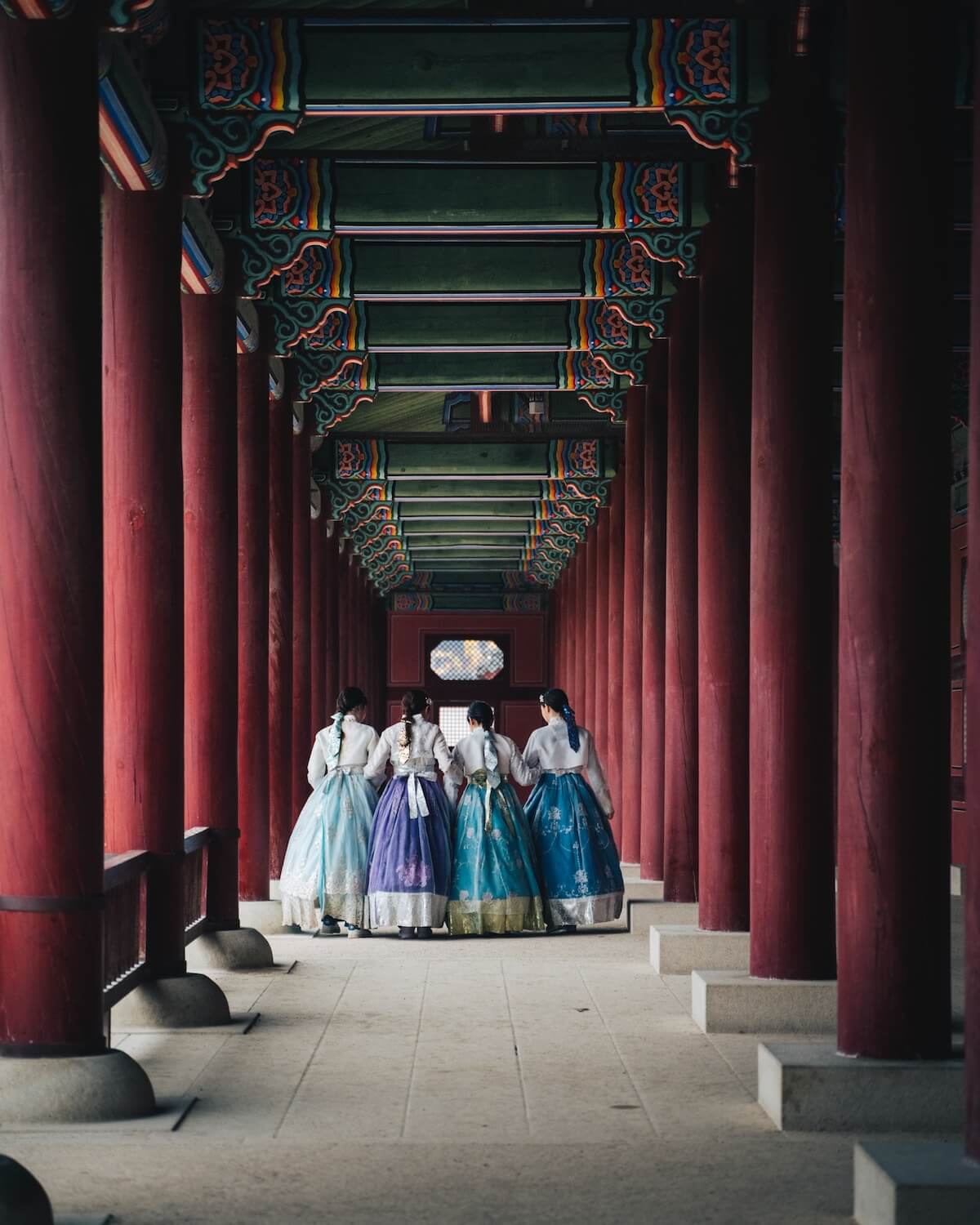
16. “Kamsahamnida“ (감사합니다) / “Gomapseumnida” (고맙습니다) = “Thank you”
Kamsahamnida (감사합니다) is the Korean word for thank you. There are multiple ways to express gratitude or say thank you in Korean. See the different usage and levels of politeness below:
- Kamsahamnida (감사합니다) – Formal and most common way
- Gomapseumnida (고맙습니다) – Polite way and still widely used
- Gomawoyo (고마워요) – Less formal and used between friends
- Gomawo (고마워) – Informal version and used between close friends of the same age or younger than you
17. “Aniyeyo” (아니예요) = “Not a big deal.”
It can be nuanced as “You’re welcome” in Korean language.
18. “Annyeonghi gaseyo” (안녕히 가세요) / “Annyeonghi gyeseyo” (안녕히 계세요) = “Goodbye”
Use Annyeonghi gaseyo (안녕히 가세요) when saying goodbye to the person leaving. But if you are the one leaving, you should say Annyeonghi gyeseyo (안녕히 계세요) instead.
19. “Juseyo” (주세요) = “Please”
Use this Korean word when you ask for a favor or say please.
20. “Jwesonghamnida” (죄송합니다) = “Sorry”
Say this Korean word if you want to apologize.
Helpful Korean phrases for travel and exploration
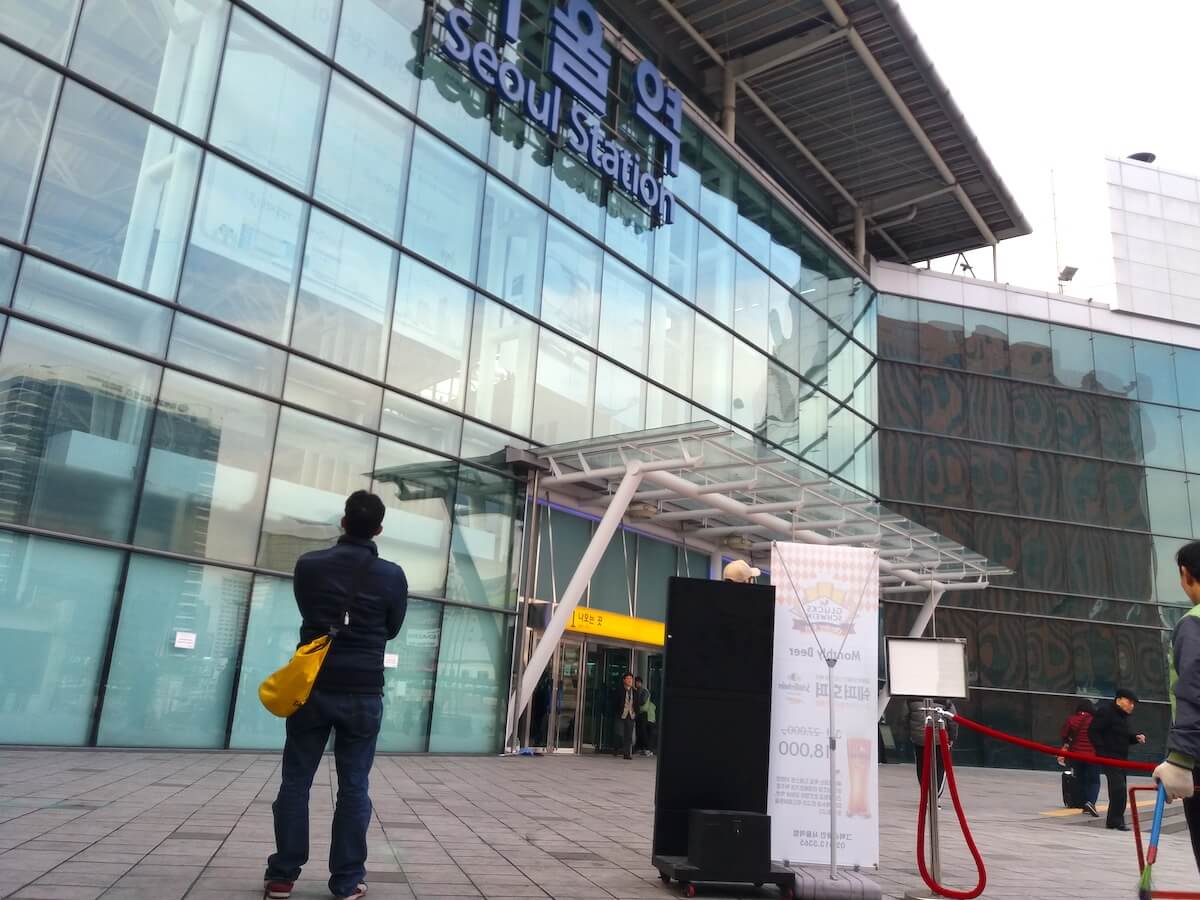
21. “Eodie isseoyo?” (어디에 있어요?) = “Where is it?”
Use this Korean word if you’re asking for the location of a place. For instance, if you’re asking, “Where’s the toilet?”, you can say, “Hwajangsil eodie isseoyo?” (화장실 어디에 있어요?).
22. “Eodi gaseyo?” (어디 가세요?) = “Where are you going?”
As mentioned previously, Eodi (어디) means where. Just add gaseyo (가세요) to form the question “Where are you going?”.
23. “Jeoneun jibe galgeoyeyo.” (저는 집에 갈거예요.) = “I’m going home.”
This is what you say when you’re going home.
24. “Eotteoke gayo?” (어떻게 가요?) = “How to get there?”
Eotteoke (어떻게) means “how” in Korean. Use the Korean phrase above if you’re asking for directions on how to get there.
25. “Yogeumeun eolmayeyo?” (요금은 얼마예요?) = “How much is the fare?”
Use this Korean phrase if you’re asking how much to pay for the fare.
26. “Baro orgeyo.” (바로 올게요.) = “I’ll be right back.”
This is what you say when you have to leave temporarily but will be right back.
27. “Gileul ilheosseoyo!” (길을 잃었어요!) = “I’m lost!”
Utter this when you’re lost, especially when navigating a new location or place.
28. “Dowajuseyo!” (도와주세요!) = “Help me!”
Say this Korean word when you need help.
29. “WiFi isseoyo?” (와이피이 있어요?) = “Do you have WiFi?”
Say this Korean phrase to ask if the establishment has WiFi.
30. “Bimilbeonho al su isseulkkayo?” (비밀번호 알 수 있을까요?) = “May I know the password?”
If they do have WiFi, you can then proceed to ask for the password.
Tip: Avoid the hassle of asking for free WiFi by getting your own Korea SIM card or pocket WiFi before your trip.
Practical Korean words and phrases for shopping

31. “Eolmayeyo?” (얼마예요?) = “How much?”
You can use this standard Korean word to ask for the price of something.
32. “Igeon mwoyeyo?” (이건 뭐예요?) = “What is this?”
You can use this Korean phrase if you’re curious about the item you want to buy.
33. “Jeoge mwoyeyo?” (저게 뭐예요?) = “What is that?”
Change Igeon (이건) with Jeoge (저게) to make it “that”.
34. “Harini isseoyo?” (할인이 있어요?) = “Is there a discount?”
This is what you say when asking if there is still a discount.
Handy Korean words and phrases for eating
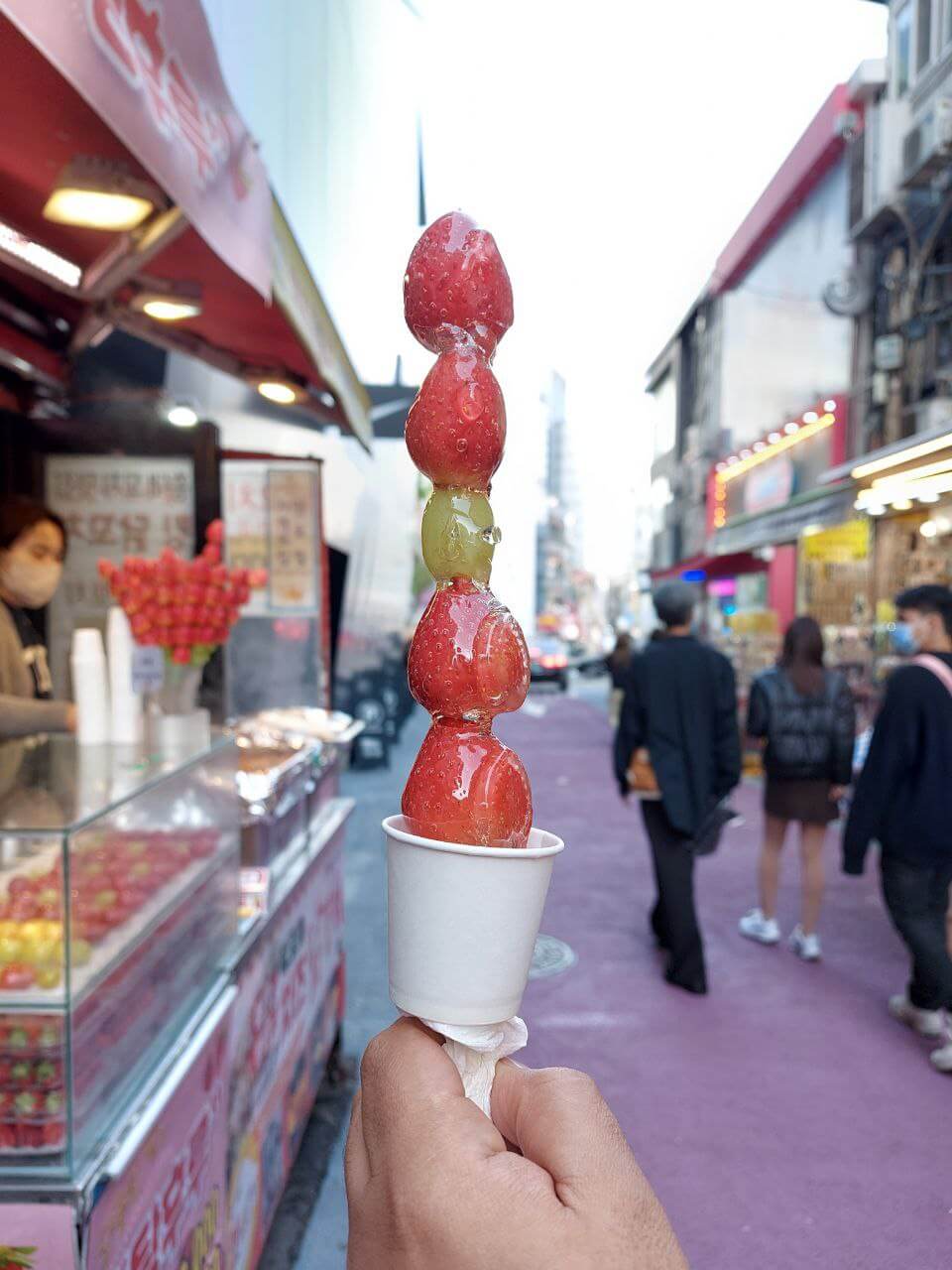
35. “Meokja!” (먹자!) = “Let’s eat!”
This is the Korean word or expression for “Let’s eat!”.
36. “Masissge deuseyo!” (맛있게 드세요!) = “Enjoy your meal!”
This is the Korean translation for bon appetite!
37. “Bap meogeoseoyo?” (밥 먹었어요?) = “Have you eaten?”
Use this Korean phrase to ask if the person has eaten already. It can also be nuanced as saying “hi” or “hello” to someone.
38. “Aniyo. Ajig iyo.” (아니요. 아직이요.) = “No. Not yet.”
This is your reply if you haven’t eaten yet.
39. “Baegopayo.” (배고파요.) = “I’m hungry.”
Although there are different ways of expressing you are hungry, this is the standard way of saying it in Korean.
40. “Baebulleoyo.” (배불러요.) = “I’m full.”
And when you are already full, just say this Korean word.
41. “Jal meogeotseumnida.” (잘 먹었습니다.) = I ate well.
This is what you say after eating and you enjoyed the meal.
42. “Masisseoyo!” (맛있어요!) = “Delicious!”
This is a common way of saying “delicious” in Korean. Just add Wanjeon (완전) as in Wanjeon masisseoyo! (완전 맛있어요!), if you want to say, “It’s very delicious!”.
43. “Dalkomhada! (달콤하다!) = “It’s sweet!”
This is how you describe a food that tastes sweet.
44. “Menyu jom juseyo.” (메뉴 좀 주세요.) = “Please give me the menu.”
This is what you say when you can’t find the menu on the wall and you’d want to ask for it from the waiter or attendant.
45. “Gyesanhalkkeyo.” (계산할게요.) = “I’ll pay for the bill.”
This is what you say when you already want to pay the bill.
These are just some of the useful Korean words and phrases to learn for a start. We’ll keep updating this list once we learn more words and phrases that’ll be useful for travelers to South Korea .
Do you have more Korean words and phrases to add? Do let us know on our social media channels: Facebook , Instagram , Twitter , and YouTube .
*Special thanks to Kevin, our polyglot friend who now lives in Korea, for reviewing our Korean language translation.
Unconventional language hacking tips from Benny the Irish polyglot; travelling the world to learn languages to fluency and beyond!
Looking for something? Use the search field below.
Home » Articles » 67 Practical Korean Phrases to Ace Your First Korean Conversation

Full disclosure: This post contains affiliate links. ?
written by Caitlin Sacasas
Language: Korean
Reading time: 10 minutes
Published: Apr 5, 2024
67 Practical Korean Phrases to Ace Your First Korean Conversation
Are you looking for the perfect list of practical Korean phrases to help you have your first conversation? Wondering what “aniyo” is in Korean? What’s “thank you” or “hello” in Korean? Look no further – we have the perfect lists of the most commonly used Korean phrases!
No fluff here! All the Korean words and phrases listed below are helpful phrases you’ll actually use when speaking Korean.
Table of contents
15 basic korean words and phrases, 10 korean greetings to say “hello” and “goodbye” in korean, 13 common korean phrases for everyday life, 19 survival korean phrases for getting around in korea, 12 basic korean phrases for real conversations with new korean friends, learn the core 111 korean words, create a korean script so you’re ready to start speaking korean today, start speaking korean from day one, master your korean pronunciation, learn how to read korean hangul, ace your first conversation with these korean phrases.
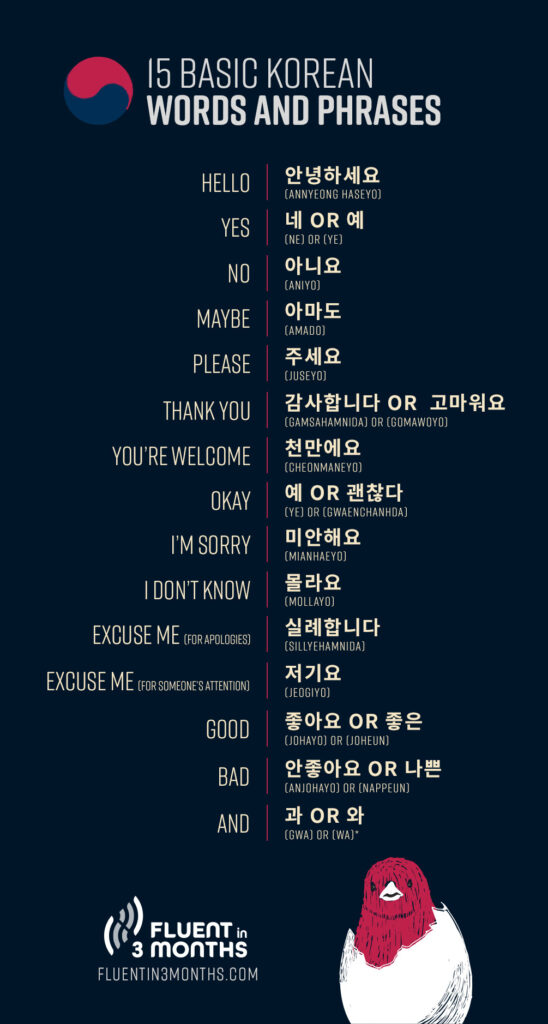
You’ll probably use some of the most basic Korean phrases for any conversation. Here are some words and phrases to get you ready for your first–and any–conversation:
- Hello: 안녕하세요 ( annyeong haseyo )
- Yes: 네 ( ne ) or 예 ( ye )
- No: 아니요 ( aniyo )
- Maybe: 아마도 ( amado )
- Please: 주세요 ( juseyo )
- Thank you: 감사합니다 ( gamsahamnida ) or 고마워요 ( gomawoyo )
- You’re welcome: 천만에요 ( cheonmaneyo )
- Okay: 예 ( ye ) or 괜찮다 ( gwaenchanhda )
- I’m sorry: 미안해요 ( mianhaeyo )
- I don’t know: 몰라요 ( mollayo )
- Excuse me (for apologies): 실례합니다 ( sillyehamnida )
- Excuse me (for someone’s attention): 저기요 ( jeogiyo )
- Good: 좋아요 ( johayo ) or 좋은 ( joheun )
- Bad: 안좋아요 ( anjohayo ) or 나쁜 ( nappeun )
- And: 하고 ( hago )* See note below
Pro tip about “and” in Korean: There are many ways to say “and”. The one above is the most colloquial, but you might also come across 과 ( gwa ) or 와 ( wa ). These two are also standard, but just a bit more bookish or formal. The two listed here are particles and change depending on the last sound of the word that comes before it.
You use 과 ( gwa ) if the word before it ends in a consonant. You use 와 ( wa ) if the word ends in a vowel. Luckily, with the colloquial 하고 ( hago ), you don’t need to worry about this.
This is common with many Korean particles.
By the way, you can hear Benny using some of these practical Korean words and phrases from day one! Check out his very first Korean conversation here:
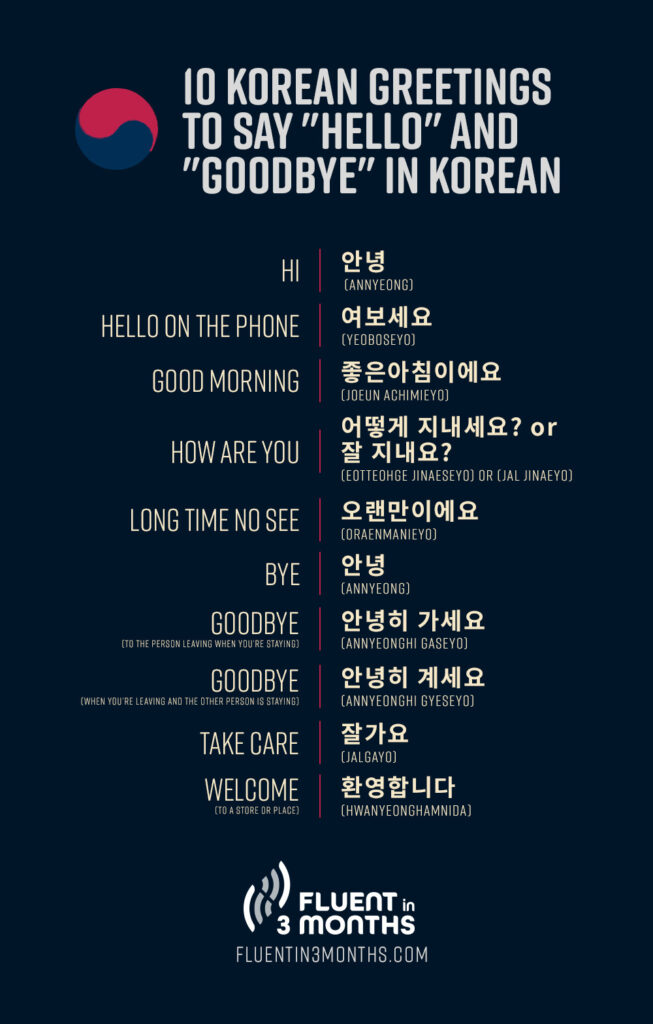
As in other languages, some of the most common Korean phrases are greetings! You’ll need them to sound polite and friendly, so here are some of the most common greetings in Korean.
You’ll notice that there are a few ways to say “goodbye”. That’s because depending on how you’re leaving, it changes slightly! Don’t worry – I tell you how to choose which one to use.
(But if you ever forget, you can say annyeong . It’s more casual, but it will get the job done!)
- Hi: 안녕 ( annyeong )
- Hello on the phone: 여보세요 ( yeoboseyo )
- Good morning: 좋은아침이에요 ( joeun achimieyo )
- How are you: 어떻게 지내세요? ( eotteohge jinaeseyo ) or 잘 지내요? ( jal jinaeyo )
- Long time no see: 오랜만이에요 ( oraenmanieyo )
- Bye: 안녕 ( annyeong )
- Goodbye (to the person leaving when you’re staying): 안녕히 가세요 ( annyeonghi gaseyo )
- Goodbye (when you’re leaving and the other person is staying): 안녕히 계세요 ( annyeonghi gyeseyo )
- Take care: 잘 가요 ( jal gayo )
- Welcome (to a store or place): 환영합니다 ( hwanyeonghamnida )
Want to learn more ways to start a conversation in Korean? Check out this article about Korean greetings .
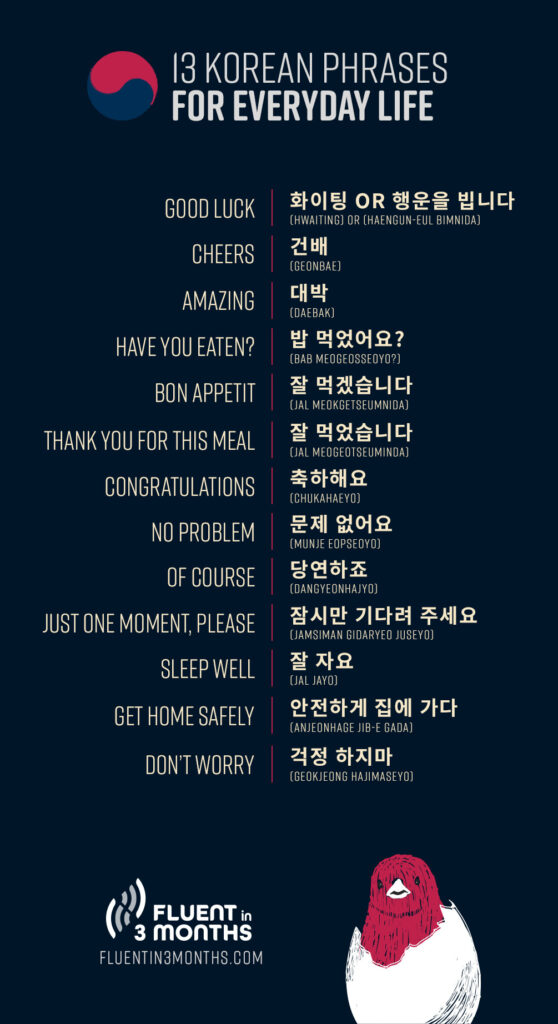
There are some common Korean phrases you’ll need to talk with people in different situations. You’ll run into these common Korean phrases all the time. Some even every time you eat!
- Good luck: 화이팅 ( hwaiting , literally: “fighting”) or 행운을 빕니다 ( haengun-eul bimnida )
- Cheers: 건배 ( geonbae )
- Amazing: 대박 ( daebak )
- Have you eaten?: 밥 먹었어요? ( bab meogeosseoyo? )
- Bon appetit: 잘 먹겠습니다 ( jal meokgetseumnida )
- Thank you for this meal: 잘 먹었습니다 ( jal meogeotseuminda )
- Congratulations: 축하해요 ( chukahaeyo )
- No problem: 문제 없어요 ( munje eopseoyo )
- Of course: 당연하죠 ( dangyeonhajyo )
- Just one moment, please: 잠시만 기다려 주세요 ( jamsiman gidaryeo juseyo )
- Sleep well: 잘 자요 ( jal jayo )
- Get home safely: 안전하게 집에 가다 ( anjeonhage jib-e gada )
- Don’t worry: 걱정 하지마 ( geokjeong hajimaseyo )
We wrote even more Korean phrases for beginners and those preparing to travel to Korea, so check that out, too!
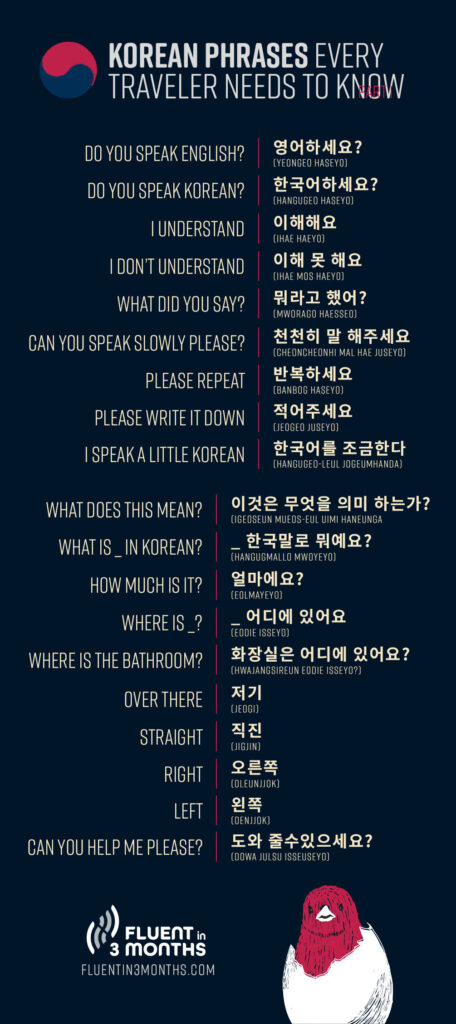
Want to avoid getting lost, confused, or otherwise stuck while on a trip to Korea? These are the most helpful phrases for when you’re trying to get by in Korean!
- Do you speak English?: 영어하세요? ( yeongeo haseyo? )
- Do you speak Korean?: 한국어하세요? ( hangugeo haseyo? )
- I understand: 이해해요 ( ihae haeyo )
- I don’t understand: 이해 못 해요 ( ihae mos haeyo )
- What did you say?: 뭐라고 했어? ( mworago haesseo? )
- Can you speak slowly please?: 천천히 말 해주세요 cheoncheonhi mal hae juseyo? )
- Please repeat: 반복하세요 ( banbog haseyo )
- Please write it down: 적어주세요 ( jeogeo juseyo )
- I speak a little Korean: 한국어를 조금한다 ( hangugeo-leul jogeumhanda )
- What does this mean?: 이것은 무엇을 의미 하는가? ( igeoseun mueos-eul uimi haneunga? )
- What is _ in Korean?: _ 한국말로 뭐예요? ( hangugmallo mwoyeyo? )
- How much is it?: 얼마에요? ( eolmayeyo? )
- Where is _ ?: _ 어디에 있어요? ( eodie isseyo? )
- Where is the bathroom?: 화장실은 어디에 있어요? ( hwajangsireun eodie isseyo? )
- Over there: 저기 ( jeogi )
- Straight: 직진 ( jigjin )
- Right: 오른쪽 ( oleunjjok )
- Left: 왼쪽 ( oenjjok )
- Can you help me please?: 도와 줄수있으세요? ( dowa julsu isseuseyo? )
Related learning: Hear about another learner’s experience with Korean in this episode of the Language Hacking:
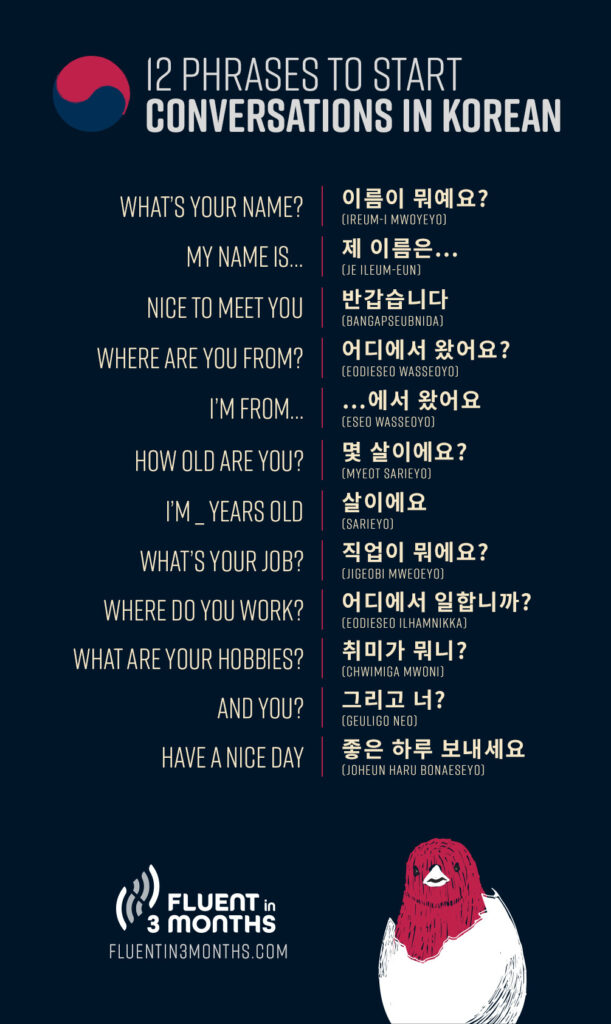
Now, no conversation is complete without a few questions thrown in! You’ll need to know how to ask some simple questions for your first conversation. These basic Korean phrases are a great place to start:
- What’s your name?: 이름이 뭐예요? ( ireum-i mwoyeyo? )
- My name is…: 제 이름은… ( je ileum-eun )
- Nice to meet you: 반갑습니다 ( bangapseubnida )
- Where are you from?: 어디에서 왔어요? ( eodieseo wasseoyo? )
- I’m from…: …에서 왔어요 ( eseo wasseoyo )
- How old are you?: 몇 살이에요? ( myeot sarieyo )
- I’m ** … ** years old: ** … ** 살이에요 ( sarieyo )
- What’s your job?: 직업이 뭐에요? ( jigeobi mweoeyo? )
- Where do you work?: 어디에서 일합니까? ( eodieseo ilhamnikka? )
- What are your hobbies?: 취미가 뭐니? ( chwimiga mwoni? )
- And you?: 그리고 너? ( geuligo neo? )
- Have a nice day: 좋은 하루 보내세요 ( joheun haru bonaeseyo )
[IMAGE: IG. Caption: ‘When Benny started learning his first Korean phrases, he got a webtoon version of himself made!’ Link: https://www.instagram.com/p/Com1IWdSCJ3/ ]
Practical Steps to Having Your First Conversation in Korean
Now that you’ve seen the most common Korean phrases and words to learn for your first conversation, it’s time to prepare!
Having your first Korean conversation can be super nerve-wracking. But the whole point of learning the language is to speak and have conversations with new people, right?
So we have to work past our nerves and do the thing!
That said, what is the best way to get over your nerves?
Come prepared.
I’ve listed some of my favorite tips for getting through your first Korean language exchange. If you do these things, you’ll feel way more confident!
I’ve also included extra resources for each tip, so you can continue to learn Korean and grow your skills.
In every language, there are about 100 words that make up around 50% of all spoken speech.
Crazy, isn’t it?
A lot of these words are small, connecting words like “the” and “in” in English. But there are many common nouns, verbs, adjectives, and adverbs we use all the time . Korean is no different.
So check out this article to learn the 111 core Korean words you need to know.
Keep in mind though, that it’s also important to learn words relevant to you , specifically. That’s where our next tip comes in.
Take a look at the phrases above we already covered. Let’s say you asked someone what their hobbies are. Then they asked, “What about you?”
Well, do you know how to say your hobbies in Korean?
If not, then it’s time to make a script!
Write out how you think your conversation may go. Script your answers, so when you’re asked questions, you know how to respond. Like this:
“What are your hobbies?” 취미가 뭐니? ( chwimiga mwoni? )
“I like to play guitar and watch Star Wars.” 기타를 연주하고 스타 워즈를 보는 것을 좋아해요. ( gita-leul yeonjuhago seuta wojeu-leul boneun geoseul johahaeyo )
If you think the conversation may dig deeper into that topic, take it even further:
“Cool! I love Star Wars, too. Which Episode is your favorite?” 대박! 나도 스타 워즈를 좋아해요. 가장 좋아하는 에피소드는 뭐니? ( Daebak! Nado seuta wojeu-leul johahaeyo. Gajang johaha-neun episode-neun mwoni? )
“I really love Episode 5: Empire Strikes Back. I didn’t like the latest movie, The Rise of Skywalker.” Empire Strikes Back을 정말 좋아합니다. 최신 영화 The Rise of Skywalker가 마음에 좋아하지 않아요. ( Empire Strikes Back-eul jeongmal johahaeyo. Choesin yeonghwa The Rise of Skywalker-ga maeume johahaji anhayo. )
( I’m not speaking from personal preference or anything… )
You know how to talk about things you care about during your conversation!
Here are some more tips for creating a language exchange script and how to find a partner .
Next step? Start speaking. Today. Right now.
You’ve got this list of phrases. You’re working on your Korean script. Now start saying them out loud and often . Repeat them every day.
Get used to how Korean sounds are formed with your mouth and how they sound rolling off your tongue.
Depending on your native language, that can be quite a change. So to prevent stumbling in-person, get used to saying the things you want to say.
Speaking from day one is the whole basis of our language learning method here at Fluent in 3 Months , and that’s because it works.
Check out more tips for how to speak in your target language .
Now that you’re speaking, you’ll need to work on your pronunciation.
Korean pronunciation is a bit different from English and other European languages. It takes some getting used to. It takes even more practice to listen and understand .
The best way to master your Korean pronunciation is to listen often and repeat always.
My favorite way to do that is with KoreanClass101 . It’s the best Korean podcast out there, with all kinds of lessons to help you learn Korean fast. They even have lessons on pronunciation.
You can pop in your headphones, and practice repeating while cleaning the house. Or play it in the car during your commute.
The key is getting used to how Korean sounds, learning to understand what is spoken and getting comfortable saying it yourself.
Check out KoreanClass101 here to work on your pronunciation.
Wait… why learn how to read Korean if your goal is to speak ?
Well, it’s because the romanization of Korean words is not consistent. If you base the sound on how it’s romanized, you’ll most likely mispronounce the word.
That’s where hangul comes in. If you know how to read hangul, you’ll be able to pronounce Korean better.
You aren’t trying to make Korean fit the limited sounds in English. Instead, you’re learning it as it’s designed to sound.
Besides, when you can read hangul, you can get into all kinds of amazing Korean resources with ease. That’s where the fun really starts!
This is a handy guide to learn Hangul fast . You can also check out these tips to make learning Korean easy .
Now you’re ready to have conversations in Korean. Way to go!
To further improve your level, check out these articles:
- Learn How to Say “Thank You” in Korean (Master Your Manners)
- How to Learn the Korean Alphabet and Write in Korean [Step-by-Step Guide]
- 111 Must-Know Korean Verbs
- Easy Korean Numbers: Counting in Korean from 1 – 100+
- Korean Slang: 80+ Everyday Words and Phrases to Sound Like a Native
- Korean Greetings: 10+ Ways to Say “Hello” in Korean
- Innovative Language Review – Complete Pod101 Language Course Review (with Screenshots and Video Results)
Original article by Caitlin Sacasas. Reviewed and updated by the Fluent in 3 Months team on [publish date].
Caitlin Sacasas
Content Writer, Fluent in 3 Months
Caitlin is a copywriter, content strategist, and language learner. Besides languages, her passions are fitness, books, and Star Wars. Connect with her: Twitter | LinkedIn
Speaks: English, Japanese, Korean, Spanish
Have a 15-minute conversation in your new language after 90 days
- Food & Drink
- What to pack
- City Guides
- Travel Hacks
- New Zealand
- North America
- Latin America
Copied to clipboard!
Travel Tips
Mastering the basics: essential Korean phrases for your first visit
By Jisong Seo
Jisong is a South Korean contributor born and raised in Seoul. Having lived and worked in Lisbon and London, she brings a unique perspective bridging the countries' cultures, languages and latest trends. Her interests also include food, history and travel.
Published on Oct 27, 2023
Are you planning a trip to Korea? Very good choice!
As you begin to plan your trip, one thing that can be quite intimidating is the language. But fear not! While the Korean alphabet system may look intimidating, it is surprisingly easy to learn.
Don’t take my word for it. See for yourself.
So, can you work out what 바나나 means?
Yep, banana. Just like that, you’ve learned your first Korean word!
But that was just a warm-up. Read on for your essential beginner’s guide to Korean phrases and words, that will help you to have the best experience, impress the locals and better understand Korean culture in the process.
Feeling inspired?
South Korean Soul
Ju-se-yo (please give; 주세요) .
From the moment you arrive in Korea, this Korean phrase will be super useful. The literal translation of ‘ju-se-yo’ is ‘please give’ or more naturally, ‘please can I have’. You can add this after any item to order or ask for it. For example, in a café, you can say ‘A-A (pronounced ‘ah-ah’) ju-se-yo’, and you will receive an iced americano.
If you’re not sure of the Korean word for the item, you can simply point and say ‘i-geo (this; 이거)’ or ‘jeo-geo (that; 저거)’ before ‘ju-se-yo’. Now you can ask for whatever you want!
Image source: Getty Images / unsplash
Eol-ma-ye-yo? (How much is it; 얼마예요)
Once you’ve placed your order, the next step is to ask for the price and pay. One of many cultural differences you’ll encounter in Korea is that you always pay the cheque on your way out, not at your table. When you’re ready to go, head up to the till and ask ‘Eol-ma-ye-yo?’.
If they ask a follow-up question, it’s probably whether you want to pay with ‘kaa-du (card; 카드)’ or ‘hyun-gum (cash; 현금)’ or if you need a ‘yong-su-jung (receipt; 영수증)’. Be prepared, often when you’re eating with Koreans, they will really insist on paying, or even sneakily settle up while you’re not looking.
Jal-mok-gget-sseum-ni-da (Bon appétit; 잘먹겠습니다)
Another essential Korean phrase you need to remember is ‘jal-mok-gget-sseum-ni-da’, the Korean version of ‘bon appétit’. The literal meaning is ‘(I) will eat it well (thanks to you)’. In Korean culture, food plays a vital role, and many cultural traditions have developed around the table. It is important in Korea that you express appreciation to people who have given you food, before and after each meal. Once everyone has finished, say ‘jal-mo-ggot-sseum-ni-da’, meaning ‘I have eaten well’, to thank them for the delicious meal.
Hidden wonders: 12 interesting facts about Seoul
Mae-wo-yo (is it spicy; 매워요).
Can you handle the heat? If not, this Korean phrase could be a lifeline for you. You may have heard of the ‘spicy chicken noodle challenge (불닭볶음면 챌린지)’, which drew the attention of spice fiends around the world. In general, Koreans love spicy food and see it as a stress-reliever. If you’re a fan of Korean dramas, you may have seen dishes like ‘tteok-bok-ki’, ‘Korean fried chicken’ and ‘army stew’, which are all covered with Korean Cheongyang chillies or chilli-based sauces, like gochujang. If you don’t need any extra spice in your life, you can double-check the spice level by asking ‘mae-wo-yo?’.
Image source: Jisong Seo
Gwen-chan-a-yo (alright; 괜찮아요)
‘Gwen-chan-a-yo’ is a versatile phrase that can be handy in many situations. Meaning ‘alright’, it is used both as a question and a response depending on the intonation, similar to in English: ‘All good?’, ‘Yeah, all good’.
It’s not always affirmative though. If you were offered more ‘banchan (side dishes)’ in a restaurant, you might say ‘gwen-chan-a-yo’ to politely refuse, as in, ‘no thanks, I’m good. Banchan are complimentary in Korean restaurants by the way, so you should definitely take advantage of them!
10 best things to do in Jeonju: your insider’s guide to the city’s top attractions and experiences
Sajin, jjik-eo-ju-se-yo (please take a photo; 사진 찍어주세요).
Koreans are serious about photos. If you ask anyone on the street to take a quick picture of you, they’ll be happy to oblige. But it might feel more like you’ve paid for a photo shoot – especially when they lie down on a floor to find the perfect angle and composition.
Beauty standards are quite different in Korea. If your photographer says you have a small face, or large eyes, don’t be offended – it’s a compliment!
If you want a photo with your new Korean friend as a souvenir, ask to take one together (gachi) – ‘gachi sajin jjik-eo-ju-se-yo’!
Hwa-ee-ting (Good luck; 화이팅)
If you’ve watched K-Dramas before, you might have heard this Korean phrase a lot. ‘Hwa-ee-ting’ is actually borrowed from the English word, fighting.
It’s not a violent or aggressive phrase though, but a positive exclamation of encouragement. The natural translation is ‘good luck’ or ‘you’ve got this’, and the phrase is often used to encourage others (or yourself) in a competitive or difficult situation.
For example, you can shout ‘hwa-ee-ting’ to support your favourite baseball team or even say it to your friend who is completely exhausted from walking around Seoul! Even to yourself, whenever feeling low, try clenching your first and saying ‘Hwa-ee-ting’ out loud. You might get a sudden burst of energy.
Image source: Valery Rabchenyuk / unsplash
Mi-an-ham-ni-da (I am sorry; 미안합니다)
It is always useful to learn how to say ‘I am sorry’ to avoid any misunderstanding in a foreign country. Although many people will understand ‘sorry’ in English, making an effort in Korean will seem much more sincere. In addition, Korean people will bow when saying hello (anyoung-ha-se-yo), thank you (gamsa-ham-ni-da) or sorry (mi-an-ham-ni-da) to show respect, especially to older people or strangers. If you ever find yourself needing to apologize, a small bow and ‘mi-an-ham-ni-da’ will do the trick.
Yo-gi-yo (Here please; 여기요)
Have you ever struggled to get your server’s attention to order or get the cheque? The good news is that you don’t need to wait awkwardly in Korea, as it is not seen as rude or disrespectful to call restaurant staff over to your table. ‘Yo-gi-yo’ means ‘here please’, which effectively implies ‘here I am ready’. These days, many restaurants have a button on your table to call staff over instantly, but if not, don’t feel scared to shout out!
20 best things to do in South Korea on your first trip
Chae-go (the best; 최고).
Let’s finish on a positive, and very useful Korean word – ‘Chae-go’! When you’ve really enjoyed the food or experience, this is how to tell your friends you’re having the BEST time.
If you say ‘chae-go’ with a thumbs up, you’re sure to impress the locals, and they might even throw some freebies your way. You can use this one generously on your travels. I wish you a ‘chae-go’ time in Korea!
Stop dreaming and make sh*t happen!

1 country, 9 days

3 countries, 16 days
Asian Adventure

1 country, 13 days
Japan Unrivalled
Korean Phrases Basic Sentences for Solo Travel and Daily life!
In this article, we will share to you Basic Korean language, (Korean phrases basic) sentences for solo travel and daily life in korea.
Here’s the comprehensive list of basic Korean phrases that you’ll need to join in on the fun and converse in Korean. This is the up-to-date modern version of how Koreans actually talk, so it will be useful if you want to learn how to speak Korean.
To get you started, here are some basic phrases you can use to speak Korean:
- Yes – 네 (ne)
- No – 아니오 (a-ni-yo)
- Hello – 안녕하세요 (an-nyeong-ha-se-yo)
- Thank you – 고맙습니다 (go-map-seum-ni-da)
- You’re welcome – 천만에요 (cheon-man-e-yo)
- Excuse me – 실례합니다 (sill-ye-ham-ni-da)
- Ok – 괜찮아요 (gwaen-chan-a-yo)
- I don’t know – 몰라요 (mollayo)
- Sorry – 미안합니다 (mi-an-ham-ni-da)
- Goodbye – 안녕히 가세요 (an-nyeon-ghi ga-se-yo)
We highly recommend you learn first the Korean alphabet (Hangeul) ASAP, it’s only take about few hour to learn it. It’s an essential first step to improve your Korean language skills. It’ll help you speak Korean and correctly pronounce the basic Korean phrases you’ll find below.
Korean Phrases Basic
Need the bare minimum sentences for simple conversation? These are the basic Korean phrases you’ll want to get down to make sure your time in Korea is smooth sailing!
You might notice that there are a few ways of saying some of the basic Korean phrases, such as “excuse me”, “thank you,” and “goodbye”. In English, these phrases are much more multi-purpose. In Korean, there are specific phrases that you’ll use for certain situations. It’s important to know when to use these basic Korean phrases especially when you’re in South Korea. The different situations make learning the Korean language fun and interesting.
Click on the word in Hangul to hear the pronunciation of the basic Korean phrases. To learn more about the phrases in detail, click on the English equivalent of the phrase.
Daily Korean Phrases
As you continue with your Korean learning, focus on these daily life Korean phrases that you will definitely use on a daily basis. You will use them when you meet friends or speak to the staff at the local market. This kind of korean phrases will really help you to practice and improve your korean language skills.
Food Korean Phrases
You can’t travel to another country and not try the delicious local foods. Ordering food in a Korean restaurant can vary from being really easy to a real challenge. Some restaurants will have picture menus and English translations, while others may all be entirely in Korean.
Lots of restaurants in Seoul will have picture menus or pictures on the wall. The easiest way to order is to point to the picture or something you see plus the word ‘ ju-se-yo ‘ which means please. This simple Korean phrase will help you get what you want most of the time. It really is one of the most versatile of all these essential Korean phrases.
When you first enter the restaurant, usually the staff will ask you how many people are in your group. You can use the first phrase below ask if they have a table for 4. The staff will likely speak to you in honorific language, but you can reply in standard everyday Korean.
Drinks Korean Phrases
If you’ve been to Seoul before, then you know you can go more than a few minutes in each direction without running into a cafe. Korea has a massive coffee-drinking culture, and it’s continuing to spread all over south korea. so make sure you learn these essential basic korean phrases that will help you to order your desired drinks while you travel south korea.
Travel Korean Phrases to getting around
Travelling in Korea is a lot easier than you might think. Almost all of the signs at the airport, train stations, in subways, and on buses, are in English. They’re also in Chinese and Japanese most of the time.
Korea is a very modern country when it comes to transport and there are a lot of different transport options. These useful phrases will help you to avoid getting lost and, if you do, help you find your way around.
Whether you’re in the big city or quiet countryside, use these Korean phrases to ask the locals where something is.
Start things off with a simple “잠시만요”, and then get to chat in the local language!
Transportation Korean Phrases
The Korean bus system is one of the best systems in the world.
The buses are fast, clean, and on time. This goes for the smaller local buses (마을 버스), the regular city buses, and even the express buses (고속 버스).
At many bus stops in Seoul, there is a digital display that shows which buses are coming and what time they will arrive. It’s very accurate!
Let’s talk more about some of the key Korean words that you’ll see above to help expand your vocabulary. Knowing certain parts of the sentence can really help you making your own sentences.
____ 어디예요? ( ____ eo-di-ye-yo? ) means ‘where is ____? ‘ and can be used for all sorts of questions and is very helpful not only for transportation, but also shopping and when you need the bathroom.
Want to know how to get to certain place? Point to a picture of it and ask eo -di-ye-yo ? they will tell you where and how to go to that place and hopefully you can at least understand their words.
____ 가주세요 ( ____ ka-ju-se-yo ) which is used to ask someone to ‘take you somewhere’. You probably recognise ‘ ju-se-yo ‘, which features in a lot of these phrases and means ‘please’. The ‘ka’ part of this phrase is from ‘ka-da ‘, the verb for ‘to go’.
You can use k a-ju-se-yo whenever you want to go somewhere. Especially in private Taxy, you can just enter in and tell the driver ‘Singil -yeok (Singil Station) ka-ju-se-yo ‘ and they’ll take you straight there.
Shopping Korean Phrases
If you’re out in Dongadaemun, Garosul-gil, or Myeongdong, you are definitely going to need some Korean phrases to help you shop!
The Korean language has it’s own specialized vocabulary terms when it comes to shopping, so make sure you know these sentences before you head out for the next shopping spree. For example, did you know that some Korean credit cards give you the choice of paying for your purchase over one month or multiple month installments? The installment plans have interest fees, so plan accordingly! Be ready for this question, since some stores will ask you if you want your purchase to be put through as 일시불 (ilsibul).
얼마예요 (e ol-ma-ye-yo ) means ‘how much‘ and is another one of those essential Korean words you can use for ordering food, shopping, and so much more. Want to haggle for a new bag in the market? Just point the bag you want plus ol-ma-ye-yo ? Want to know the cost of a train to certain city, example gwangju, just say gwangju plus ol-ma-ye-yo ? It’s short and an easy Korean word to remember.
싸요! ( ssa-yo !) and 비싸요! ( bi-ssa-yo !) which mean ‘cheap’ and ‘expensive’. You can use these all the time in the traditional markets when you want to haggle. The market vendor usually will start to haggle and lower the price.
Emergency Korean Phrases
Korea is a very safe country, so hopefully you will have a safe and pleasant time here. However, emergencies do happen, and it’s always good to know a few key phrases to help make sure that you navigate through them smoothly!
There are separate numbers for the different emergency services in Korea. Dial 112 to contact the police and 119 for fire and medical emergencies.
Below are some important emergency Korean phrases. Learn them so you have them ready in case of an emergency. You will thank yourself later!
도와주세요 ( do-wa-ju-se-yo ) means to ‘please help me’ and isn’t just used in emergencies. If you have some heavy burden or task and you need someone to help carrying it down the stairs, you can say ‘ do-wa-ju-seh-yo ‘ (in a calm voice). Some kind Korean person will surely help out after hearing this basic Korean word.
의사 ( wi-sa ) means ‘doctor’ in Korean. This doctor will treat general medical conditions.
How was your Korean language study process? Do you like to learn korean language? do you plan to travel south korea? Comment below!
Every share and every ounce of your support brings my passion for Korea to life – Thank you for visit.
Latest Articles
7 Must-Visit Cherry Blossom Spot In Gyeongju!
8 Most Anticipated Kdramas Release on March 2024!
15 Best Kdrama App For Streaming Your Favourite Shows!
Top 7 Cherry Blossom Cafes In Seoul That Will Stun You!
Press ESC to close

13 Popular Korean Phrases: A Guide for Korean Learners
Table of contents, introduction for popular korean phrases.
If you’re interested in learning Korean or planning to travel to Korea, knowing some popular Korean phrases can be helpful.
Even though Korean is a complex language, learning some most common popular Korean phrases can make communication easier and more effective.
In this article, we will explore 13 popular Korean phrases , their meanings, and how to use them in context.
1. Greetings
Saying hello and goodbye.
When exploring Popular Korean Phrases, it’s fascinating to discover that Koreans have different greetings for different times of the day.
The most common and versatile way to say hello in Korean is “ 안녕하세요 ” (annyeonghaseyo), which beautifully translates to “ hello ” or “ good day .”
This delightful greeting, perfect for any moment, allows you to effortlessly connect with others throughout the day.
Original Korean Sentence
A: 안녕하세요! 이름이 뭐에요? B: 안녕하세요! 저는 지민이에요.
Pronunciation Guide
A: 안녕하세요 (an-nyeong-ha-se-yo)! 이름이 (i-reu-mi) 뭐에요 (mwo-ye-yo)? B: 안녕하세요 (an-nyeong-ha-se-yo)! 저는 (jeo-neun) 지민이에요 (ji-mi-ni-e-yo).
Meaning and Context
A: 안녕하세요 (hello; in a polite way)! 이름 (name) 이 (my subject is your name) 뭐 (what) 에요 (is; I’m asking you polite and friendly)? B: 안녕하세요 (hello; in a polite way)! 저 (I; in a humble way) 는 (I’m going to tell you about me) 지민 (Jimin; Korean name) 이에요 (am; I’m telling you polite and friendly).
English Translation
A: Hello! What is your name? B: Hello! I am Jimin.
Literal Translation
A: Hello! What is name? B: Hello! I am Jimin.

“Learning Korean based on theory or rules alone may not be enough to achieve your goals. To truly master the language, extensive practice is necessary. Are you looking for a Korean course that prioritizes practice? Join our free course and experience it for yourself now😊.”
Exploring the Popular Korean Phrases, you’ll find an array of greetings tailored to different times of the day.
In the morning, start with the cheerful “ 좋은 아침입니다 ” (joh-eun achim-imnida), a heartfelt “ good morning ” that sets a positive tone.
As the day progresses, the versatile “ 안녕하세요 ” (annyeonghaseyo) reappears, acting as a universal bridge for connection.
Transitioning into the evening, the phrase “ 안녕하세요 ” (annyeonghaseyo) remains an option, or you can opt for the more tender “ 안녕히 주무세요 ” (annyeonghi jumuseyo), a sweet “ good night ” wish.
For farewells, gracefully employ “ 안녕히 계세요 ” (annyeonghi gyeseyo), the gentle “ goodbye ” that encapsulates well-wishes.
Should you find yourself departing from someone’s abode, remember the thoughtful “ 잘 가요 ” (jal gayo), a parting phrase that seamlessly combines “ take care ” with the essence of “ goodbye ,” epitomizing the interconnected spirit of Popular Korean Phrases.
A: 미팅이 끝났어요. 다음에 또 만나요. B: 그럼, 잘 가요!
A: 미팅이 (mi-ting-i) 끝났어요 (ggeun-nat-sseo-yo). 다음에 (da-eu-me) 또 (ddo) 만나요 (man-na-yo). B: 그럼 (geu-reom), 잘 (jal) 가요 (ga-yo)!
A: 미팅 (meeting) 이 (my subject is the meeting) 끝나 (to be over) ㅆ (past tense) 어요 (is; I’m telling you polite and friendly). 다음 (next) 에 (in) 또 (again) 만나 (to meet) 아요 (let’s; in a polite and friendly way). B: 그럼 (all right), 잘 (well) 가 (to go) 아요 (I suggest you in a polite and friendly)!
Pronunciation Patterns for Conjugations
* 끝나 + ㅆ = 끝났, * 만나 + 아요 = 만나요, * 가 + 아요 = 가요
A: The meeting is over. Let’s meet again next time. B: Alright, goodbye!
A: Meeting was over. Let’s meet again in next. B: Alright, go well!

Suh ChangWhoon
While you read the blog, please keep two things in mind. First, I made an effort to translate as closely to Korean as possible .
It may appear awkward, but when learning Korean, it’s best to learn the language as it is.
Second, the Korean example sentences in this article, “Popular Korean Phrases,” come with explanations for all the grammar and vocabulary used, making them easy to understand.
Language expressions have deep and subtle meanings that can vary depending on the context, so breaking down every word for simple explanation is never an easy task.
If my article can be even a little helpful for your Korean studies, including Popular Korean Phrases, it would bring me great joy!
Asking How Someone is Doing
Diving into popular Korean phrases, you’ll find a variety of ways to inquire about someone’s well-being.
To initiate this friendly exchange, you can smoothly utter “ 어떻게 지내세요? ” (eotteohke jinaeseyo), an expression that effortlessly translates to “ how are you? “
This versatile phrase, a cornerstone of conversational Korean, elegantly captures the essence of genuine concern.
For a more casual tone, you can seamlessly transition to “ 요즘 어때? ” (yojeum eottae), a breezy alternative that carries the essence of “ how’s it going? ” or “ what’s up? ”
This phrase adds a dash of informality to your interactions, making it a popular choice among those fluent in the captivating tapestry of popular Korean phrases.
A: 안녕하세요! 어떻게 지내세요? B: 안녕하세요! 잘 지내요, 감사합니다.
A: 안녕하세요 (an-nyeong-ha-se-yo)! 어떻게 (eo-ddeo-ke) 지내세요 (ji-nae-se-yo)? B: 안녕하세요 (an-nyeong-ha-se-yo)! 잘 (jal) 지내요 (ji-nae-yo), 감사합니다 (gam-sa-ham-ni-da).
A: 안녕하세요 (hello; in a polite way)! 어떻게 (how) 지내 (to live) 세요 (I’m asking you in a polite way)? B: 안녕하세요 (hello; in a polite way)! 잘 (well) 지내 (live) 어요 (I’m telling you polite and friendly), 감사합니다 (thank you; in a formal way).
* 지내 + 어요 = 지내요
A: Hello! How are you? B: Hello! I’m doing well, thank you.
A: Hello! How do you live? B: Hello! I live well, thank you.

“My Korean course is designed to make learning Korean easy for you, even if you don’t know the grammar rules. I explain all Korean sentences using simple words and avoid using difficult grammar terms. 😊 By joining my course, you’ll gain confidence and develop the skills to communicate with native Korean speakers. You’ll be able to understand conversations, read books, and watch movies with ease. Don’t wait any longer, enroll now and start learning Korean!”
Introducing Yourself
To introduce yourself , you can confidently utter “ 저는 [name]입니다 ” (jeo-neun [name]-imnida), a key phrase that seamlessly translates to “ I am [name]. ”
This fundamental expression is akin to a linguistic cornerstone within the captivating tapestry of conversational Korean.
Now, if your curiosity leads you to inquire about someone’s identity, you can employ the engaging phrase “ 이름이 뭐에요? ” (ireum-i mwo-eyo), artfully crafting the question “ what is your name? ”
This linguistic tool, an embodiment of the intricacies within Popular Korean Phrases, fosters connections and welcomes meaningful exchanges.
A: 안녕하세요, 반가워요! 저는 사라입니다. B: 안녕하세요, 사라! 저는 알렉스예요. 만나서 반가워요.
A: 안녕하세요 (an-nyeong-ha-se-yo), 반가워요 (ban-ga-wo-yo)! 저는 (jeo-neun) 사라입니다 (sa-ra-im-ni-da). B: 안녕하세요 (an-nyeong-ha-se-yo), 사라 (sa-ra)! 저는 (jeo-neun) 알렉스예요 (al-rek-sseu-ye-yo). 만나서 (man-na-seo) 반가워요 (ban-ga-wo-yo).
A: 안녕하세요 (hello; in a polite way), 반갑 (to be glad) 어요 (am; I’m tellinig you polite and friendly)! 저 (I; in a humble way) 는 (my topic is myself) 사라 (Sarah) 입니다 (am; I’m telling you in a formal way). B: 안녕하세요 (hello; in a polite way), 사라 (Sarah)! 저 (I; in a humble way) 는 (my topic is myself) 알렉스 (Alex) 예요 (am; I’m telling you polite and friendly). 만나 (to meet) 아서 (because) 반갑 (to be glad) 어요 (am; I’m tellinig you polite and friendly).
* 만나 + 아서 = 만나서, * 반갑 + 어요 = 반가워요
A: Hi, nice to meet you! I’m Sarah. B: Hello, Sarah! I’m Alex. It’s great to meet you too.
A: Hi, (I)’m gloa! I’m Sarah. B: Hello, Sarah! I’m Alex. Because (I) meet (you), (I)’m glad.

2. Basic Conversation Phrases
Asking for help.
Navigating through the treasury of Popular Korean Phrases, you’ll discover an assortment of tools to gracefully seek assistance.
When the need arises, effortlessly employ “ 도와주세요 ” (dowa-ju-se-yo), a versatile expression that gracefully translates to “ please help me. ”
This essential phrase, firmly rooted in the lexicon of conversational Korean, serves as a bridge to overcome challenges.
Further enhancing your linguistic repertoire, the phrase “ 부탁해요 ” (butakhaeyo) emerges as a conduit to request a favor.
With its subtle charm, this expression conveys a heartfelt plea for assistance, seamlessly intertwining your request with politeness.
It’s within the harmonious weave of such popular Korean phrases that you can foster cooperation and mutual support.
A: 도와주세요. 길을 잃었어요. B: 걱정하지 마세요. 목적지가 어디예요?
A: 도와주세요 (do-wa-ju-se-yo). 길을 (gi-reul) 잃었어요 (i-reot-sseo-yo). B: 걱정하지 (geok-jjeong-ha-ji) 마세요 (ma-se-yo). 목적지가 (mok-jjeok-jji-ga) 어디예요 (eo-di-ye-yo)?
A: 도와주 (to help) 세요 (please). 길 (way) 을 (my object is a way) 잃 (to lose) 었 (past tense) 어요 (I’m telling you polite and friendly). B: 걱정하 (to worry) 지 마 (don’t) 세요 (please). 목적지 (destination) 가 (my subject is your destination) 어디 (where) 예요 (is; I’m asking you polite and friendly)?
A: Help me, please. I’m lost. B: Don’t worry. Where is your destination?
A: Please Help. I lost way. B: Don’t worry. Where is (your) destination?

Expressing Gratitude
When a moment calls for appreciation, the phrase “ 감사합니다 ” (gamsahamnida) emerges as a radiant gem, seamlessly conveying a heartfelt “ thank you .”
Within its syllables resides the power to acknowledge kindness and forge connections, making it an essential phrase in the fabric of conversational Korean.
Yet, for instances when profound gratitude is warranted, the phrase “ 정말 감사합니다 ” (jeongmal gamsahamnida) steps forward, adorned with sincerity.
This nuanced expression, translating to “ thank you very much ,” weaves an extra layer of warmth into your appreciative gestures, underscoring the intricate beauty of popular Korean phrases in fostering genuine connections.
A: 도와주셔서 정말 감사합니다. B:; 천만에요.
A: 도와주셔서 (do-wa-ju-syeo-seo) 정말 (jeong-mal) 감사합니다 (gam-sa-ham-ni-da). B:; 천만에요 (cheon-ma-ne-yo).
A: 도와주 (to help) 시 (I show respect to you) 어서 (because) 정말 (really) 감사하 (thank you) ㅂ니다 (I’m telling you in a formal way). B:; 천만에 (you’re welcome) 요 (I’m telling you polite and friendly).
* 시 + 어서 = 셔서, * 감사하 + ㅂ니다 = 감사합니다
A: Thank you so much for helping me. B: You’re welcome.
Lit. A: Because (you) help (me), really thank you. B: You’re welcome.

Asking for Permission
When the need arises, one can seamlessly employ “ 괜찮을까요? ” (gwaenchanheulkkayo), a versatile phrase that bridges the gap between inquiry and consent.
This embodiment of polite uncertainty elegantly translates to “ is it okay? ” or “ may I? ” within the tapestry of conversational Korean.
Delving deeper into the art of requesting permission, the phrase “ 제가 [verb] 해도 되나요? ” (jega [verb] haedo doena-yo) emerges as a harmonious symphony of words, tailored to specific actions.
Through this expression, the intricacies of permission-seeking unfold, allowing you to gracefully navigate the nuances of the situation.
Within these popular Korean phrases lies the key to engaging with respect and consideration, an essential aspect of meaningful interactions.
A: 제가 당신을 사랑해도 되나요? B: 절 잊어 주세요..
A: 제가 (je-ga) 당신을 (dang-si-neul) 사랑해도 (sa-rang-hae-do) 되나요 (doe-na-yo)? B: 절 (jeol) 잊어 (i-jeo) 주세요 (ju-se-yo)..
A: 제 (I; in a humble way) 가 (I’m going to tell you about me) 당신 (you; in a polite form) 을 (my ojbect is you) 사랑하 (to love) 해도 되 (is it OK if) 나 (I wonder) 아요 (I’m asking you polite and friendly)? B: 절 (short form of 저를; 저 (I; in a humble way) 를 (my object is myself)) 잊 (to forget) 어 주세요 (please)..
A: Can I love you? B: Please forget about me..
Lit. A: Is it OK if I love you? B: Please forget me..

Apologizing
In moments of contrition, one can seamlessly employ “ 미안합니다 ” (mianhamnida), a universal phrase that carries the weight of sincerity in its syllables, eloquently translating to “ I’m sorry. ”
This versatile expression resonates as a cornerstone of apologetic interactions, traversing linguistic boundaries.
For instances where specificity is essential, the phrase “ 제가 [verb]해서 죄송합니다 ” (jega [verb]-haeseo joesonghamnida) emerges as a potent linguistic tool.
With this phrase, the contours of regret are skillfully etched, allowing you to delicately address the specific matter at hand.
Within the framework of popular Korean phrases, these apologetic phrases seamlessly weave genuine contrition into the tapestry of communication, fostering understanding and reconciliation.
A: 늦어서 죄송합니다. B:; 다음부터는 일찍 오세요.
A: 늦어서 (neu-jeo-seo) 죄송합니다 (joe-song-ham-ni-da). B:; 다음부터는 (da-eum-bu-teo-neun) 일찍 (il-jjik) 오세요 (o-se-yo).
A: 늦 (to be late) 어서 (because) 죄송합니다 (I’m sorry; in a very formal way). B:; 다음 (next) 부터 (from) 는 (my topic is next time) 일찍 (early) 오 (to come) 세요 (please).
A: I’m sorry for being late. B: Please come early next time.
Lit. A: I’m sorry because (being) late. B: Please come early from next.

“I hope you enjoyed reading about “ Popular Korean Phrases “. What did you think of the article? Simply studying Korean theory and rules is not sufficient to achieve fluency in the language. Consistent and deliberate practice is essential for success🎯. Are you interested in a practice-oriented Korean course that can help you improve your skills? Sign up for our free course and start experiencing the benefits today.”
3. Ordering Food and Drinks
Ordering at a restaurant.
Ordering food or drinks becomes a delightful endeavor. When you’re ready to make your selection, effortlessly employ “ 주문할게요 ” (jumunhalgeyo), a versatile phrase that tastefully translates to “ I’ll order. ”
This expression, a beacon of confidence within the world of conversational Korean, seamlessly guides your culinary journey.
For those moments of gastronomic curiosity, the phrase “ 메뉴판 주세요 ” (menyupan juseyo) emerges as your linguistic compass.
Through these words, you kindly request, “ please give me the menu ,” gracefully setting the stage for a delectable dining experience.
As your palate seeks refreshment, the phrase “ 물 좀 주세요 ” (mul jom juseyo) takes center stage, harmoniously articulating your need for replenishment with a polite “ please give me some water. ”
Within the symphony of Popular Korean Phrases, these culinary cues orchestrate a harmonious connection between you and the delectable offerings of a restaurant.
A: 저기요. 주문할게요. B:; 네. 뭘로 하시겠어요?
A: 저기요 (jeo-gi-yo). 주문할게요 (ju-mun-hal-gge-yo). B:; 네 (ne). 뭘로 (mwol-ro) 하시겠어요 (ha-si-get-sseo-yo)?
A: 저기요 (excuse me). 주문하 (to place an order) ㄹ게 (I will) 요 (I’m telling you polite and friendly). B:; 네 (yes; in a formal way). 뭘 (contraction of 무엇을; 무엇 (what) 을 (my object is what)) 로 (by) 하 (to do) 시 (I show respect to you) 겠 (I indicate your intention) 어요 (I’m asking you polite and friendly)?
* 주문하 + ㄹ게 = 주문할게
A: Excuse me. I’ll place an order. B: Sure. What would you like?
A: Excuse me. I’ll place an order. B: Yes. By what would (you) do?

Asking for Recommendations
When culinary curiosity beckons and decisions waver, the Popular Korean Phrases “ 추천해 주세요 ” (chucheonhae juseyo) emerges as a beacon of guidance.
With this artful expression, a subtle plea for suggestions is gracefully rendered, carrying the essence of “ please recommend something ” within the tapestry of conversational Korean.
For those moments of culinary exploration, where the heart seeks to uncover a restaurant’s hidden gems, the phrase “ 이 식당의 특별 메뉴가 뭐에요? ” (i sikdang-ui teukjing-i mwo-eyo) unfurls like a culinary quest.
Through these words, you embark on a flavorful expedition, inquiring “ what is this restaurant’s specialty? ”
This linguistic doorway invites you to delve into the heart of the establishment’s offerings, guided by the rich nuances of popular Korean phrases.
A: 이 식당의 특별 메뉴가 뭐예요? B: 저희 식당은 불고기 전문이에요.
A: 이 (i) 식당의 (sik-ddang-e) 특별 (teuk-bbyeol) 메뉴가 (me-nyu-ga) 뭐예요 (mwo-ye-yo)? B: 저희 (jeo-hui) 식당은 (sik-ddang-eun) 불고기 (bul-go-gi) 전문이에요 (jeon-mu-ni-e-yo).
A: 이 (this) 식당 (restaurant) 의 (‘s) 특별 (special) 메뉴 (menu) 가 (my subject is this restaurant’s specialty) 뭐 (what) 예요 (is; I’m asking you polite and friendly)? B: 저희 (our; in a polite way) 식당 (restaurant) 은 (as for our restaurant) 불고기 (Bulgogi) 전문 (specialty) 이에요 (I’m telling you polite and friendly).
A: What is this restaurant’s specialty? B: Our restaurant specializes in bulgogi.
A: What is this restaurant’s special menu? B: As for our restaurant, (it)’s bulgogi specialty.

Expressing Food Preferences
When the occasion arises to express your culinary inclinations, the phrase “ 저는 [food]을/를 좋아해요 ” (jeoneun [food]-eul/leul joh-ahae-yo) gracefully steps forward.
Within its linguistic embrace lies the power to convey your likes, painting a portrait of taste with the words “ I like [food] ” woven intricately within the vibrant fabric of conversational Korean.
For those with unique dietary needs, the phrase “ 저는 [food allergy/restriction]이 있어요 ” (jeoneun [food allergy/restriction]-i isseoyo) takes center stage.
With this expression, you gently disclose your food sensitivities or restrictions, incorporating the essence of “ I have a [food allergy/restriction] ” into your communication.
It’s within the embrace of Popular Korean Phrases that your culinary journey becomes a harmonious exchange of flavors and considerations.
A: 매운 음식 좋아해요? B: 아니요, 전 매운 음식 못 먹어요.
A: 매운 (mae-un) 음식 (eum-sik) 좋아해요 (jo-a-hae-yo)? B: 아니요 (a-ni-yo), 전 (jeon) 매운 (mae-un) 음식 (eum-sik) 못 (mot) 먹어요 (meo-geo-yo).: 저기요 (jeo-gi-yo). 주문할게요 (ju-mun-hal-gge-yo). B:; 네 (ne). 뭘로 (mwol-ro) 하시겠어요 (ha-si-get-sseo-yo)?
A: 매운 (spicy) 음식 (food) 좋아하 (to like) 해요 (I’m asking you polite and friendly)? B: 아니요 (no; in a polite and friendly way), 전 (short form of 저는; 저 (I; in a humble way) 는 (my topic is myself)) 매운 (spicy) 음식 (food) 못 (can not) 먹 (to eat) 어요 (I’m telling you polite and friendly).
* 좋아하 -> 좋아해
A: Do you like spicy food? B: No, I can’t eat spicy food.
Lit. A: (Do you) like spicy food? B: No, I can’t eat spicy food.

4. Getting Around
Asking for directions.
When the need to navigate arises, the phrase “ 어디에 가야 돼요? ” (eodie gaya dwaeyo) gracefully takes the stage.
Within its linguistic embrace, you seamlessly inquire, “ where do I need to go? ” – a beacon of guidance woven intricately into the tapestry of conversational Korean.
For moments when uncertainty clouds the path, the phrase “ 이 곳이 어디인지 모르겠어요 ” (i gosi eodi-inji moreugesseoyo) emerges as your linguistic compass.
With these words, you delicately admit, “ I don’t know where this place is ,” inviting understanding and assistance to illuminate your way.
It’s within the weave of popular Korean phrases that your quest for direction becomes an artful dialogue, uniting seekers and guides on the map of exploration.
A: 이 곳이 어디인지 모르겠어요. B: 여기는 서울 역 앞이에요.
A: 이 (i) 곳이 (go-si) 어디인지 (eo-di-in-ji) 모르겠어요 (mo-reu-get-sseo-yo). B: 여기는 (yeo-gi-neun) 서울 (seo-ul) 역 (yeok) 앞이에요 (a-pi-e-yo).
A: 이 (this) 곳 (place) 이 (my subject is this place) 어디 (where) 인지 (I’m not sure) 모르 (to not know) 겠 (I am increasing the level of politeness) 어요 (I’m telling you polite and friendly). B: 여기 (here) 는 (my topic is this) 서울 (Seoul) 역 (station) 앞 (in front of) 이에요 (is; I’m telling you polite and friendly).
A: I don’t know where this place is. B: This is in front of Seoul Station.
A: (I) don’t know where this place is. B: Here is in front of Seoul Station.

Using Public Transportation
As you step into the world of buses and subways, the phrase “ 버스/지하철 어디에서 타요? ” (beoseu/jihacheol eodie-seo tayo) elegantly takes center stage.
Within its rhythmic syllables, you seamlessly inquire, “ where do I take the bus/subway? ” – an inquiry that harmoniously blends into the landscape of conversational Korean.
As curiosity stirs about ticket prices, the phrase “ 티켓 가격이 얼마인가요? ” (tiket gageogi eolmain-gayo) steps forward like a bridge of knowledge.
Through these words, you gracefully seek the details of fare, uttering “ how much is the ticket? ” and weaving your question into the fabric of popular Korean phrases.
It is within this linguistic embrace that the world of public transportation transforms into a journey of seamless understanding and exploration.
A: 티켓 가격이 얼마인가요? B: 어른은 이만 원이고, 아이는 오천 원이에요.
A: 티켓 (ti-ket) 가격이 (ga-gyeo-gi) 얼마인가요 (eol-ma-in-ga-yo)? B: 어른은 (eo-reu-neun) 이만 (i-ma) 원이고 (nwo-ni-go), 아이는 (a-i-neun) 오천 (o-cheo) 원이에요 (nwo-ni-e-yo).
A: 티켓 (ticket) 가격 (price) 이 (my subject is the ticket price) 얼마 (how much) 인가 (I wonder) 아요 (is; I’m asking you polite and friendly)? B: 어른 (adult) 은 (as for adult) 이만 (20,000) 원 (won) 이고 (and), 아이 (child) 는 (as for child) 오천 (5,000) 원 (won) 이에요 (is; I’m telling you polite and friendly).
* 인가 + 아요 = 인가요
A: How much is the ticket price? B: For adults, it’s 20,000 won, and for children, it’s 5,000 won.
A: How much is ticket price? B: As for adult, (it)’s 20,000 won, and as for child, (it)’s 5,000 won.

5. Conclusion
Embarking on a journey to explore popular Korean phrases, you open the door to enhanced communication and seamless navigation throughout Korea.
Whether you find yourself as a curious tourist or a settled resident, the wisdom of these phrases can weave an intricate tapestry of convenience into your life.
From the enchanting realm of greetings and the heartfelt expressions of gratitude to the art of ordering food and the intricacies of asking for directions, these phrases stand as steadfast companions for traversing the terrain of daily interactions.
Dedicating time to acquire these linguistic gems extends beyond communication; it becomes an embodiment of respect for Korean culture, painting a canvas of goodwill and leaving a positive trace with each interaction.
The threads of basic Korean phrases, woven artfully, connect you with the locals, fostering bonds and kindling new friendships.
So, as you journey through Korea, don’t hesitate to embrace these phrases.
Your attempts, even if adorned with imperfect pronunciation, will resonate with the warmth of effort, leaving a trail of appreciation in your wake.
For, within the realm of popular Korean phrases, lies a realm of shared understanding and shared smiles, awaiting your embrace.
Share Article:
How to say no in korean with 5 powerful and positive ways, nature in korean: 19 useful korean nature vocabulary words, leave a reply cancel reply.
Save my name, email, and website in this browser for the next time I comment.
Top 10 Korean Phrases to Know when Traveling to Korea
- January 22, 2024
Overview Hide
Top 10 korean phrases to know, hello – ahn yeong haseyo, thank you – kam sa ham nida, how much is it – ol ma yeh yo, sorry – chway seong ham nida , yes/no – neh/ ahn ni ye yo, please give me ___ – ___ joo seh yo , do you have ___ – ___ iss seo yo.
- Where is ___? – ___ Oh Di Yeh Yo?
I can’t speak Korean – Han Guk Mal Jal Mo Thae Yo
Excuse me – jeo gi yo, 10 key korean phrases.
Korean phrases are very easy to learn. The Korean language is surprisingly easy to learn, but for those looking for a quick guide to Korean phrases to know , SEOULSPACE has just the infographic for you. These ten phrases are pretty much all you need to know if you are traveling to Korea for a short period of time . It will only take about 1-2 hours to fully memorize these Korean phrases . Getting around Korea for tourists can be difficult without knowing the basic Korean phrases. So take some time to memorize these phrases and practice speaking them as quickly as possible. The faster you speak it, the more natural you will sound.
The list is based on the phrases you will use the most. If you are traveling to Korea, these are the Korean phrases to know that will help you in everyday situations. So start with #1 and work your way down. Koreans will give you extra service if you are a foreigner once they find out you have taken some time to learn the Korean language.
For a more detailed list, you can check out this article here .
Used when meeting, greeting, arriving, seeing someone, entering a store, etc. You will be staying this constantly as you meet people.
Used the same way as the English would for the phrase “thank you.” Like Ahn Yeong Haseyo, try to say this as often as possible to show respect.
Make sure you point to something and ask, “How much is it?”. Then the store owner will either respond in Korean or English or show you the price using a calculator.
This can be used when accidentally bumping into someone or making a mistake.
This will be the same context as in English.
Remember to replace the ___ with what you want to ask for at a store, street food stand, or restaurant. For example, “Please give me water ” would be Mul Joo Seh Yo.
Remember to replace ___ with what you want to ask is available. For example, “Do you have kimchi ?” is Kimchi Iss Seo Yeo?
Where is ___? – ___ Oh Di Yeh Yo?
Remember to replace the ___ with the place you are looking for. For example, “Where is the bathroom ?” is Hwa-jang-shil Oh Di Yeh Yo?
If someone starts talking to you in Korean, saying this will let them know you’re not good at speaking Korean.
This Korean phrase is used when you want to get someone’s attention or when you want to call a waiter at a restaurant.
These ten key Korean phrases will allow you to get through a week in Korea without issues. You will be fine if you know the bare minimum for simple conversations with people. These are the top 10 basic Korean phrases to ensure your time in Korea is as easy as possible!
There are many ways to say Korean phrases, such as “excuse me” and “thank you.” Also, there are specific phrases that you’ll use for certain situations. It’s important to know when to use these basic Korean phrases, especially in South Korea. These different situations make learning the Korean language fun and interesting.
You can use Google Translate or Naver translate to hear the word in Hangul to hear the correct pronunciation. To learn more about the phrases in detail, click on the English equivalent of the phrase.
Related Topics
SeoulSpace covers Korean Culture, Lifestyle, Kpop, and Korean Entertainment. Bringing you a complete overall view of the Korean Wave.

Places to Visit in Dosan Park, the Hottest Street in Seoul – Top 10

Bukchon Hanok Village – Historic Korean Housing
You may also like.

10 Tips for the Boryeong Mud Festival – Best Festival in Korea
- April 1, 2024

5 Amazing Cultural Experiences in South Korea to Try When Visiting Korea

The 10 Best Pensions in Korea to Visit
- March 15, 2024

Top 10 Coolest Places to Visit in Seoul – Updated
- March 7, 2024

10 Things to do in Dongdaemun for locals and tourists

The 10 Best Museums in Seoul to Visit this Year

Best Beaches in Korea to Visit this Summer
My name is meme cheda and I want to be your new member of kpop
Leave a Reply Cancel reply
You must be logged in to post a comment.
Input your search keywords and press Enter.
Unlock more content
South Korea: Visa Application To Travel Checklist- An Indian Traveller's Guide To Explore This Country
South korea is rich in diversity- from seoul's skyscrapers to gyeongbokgung palace, there are a lot you can visit. have a look at the visa procedure and application process for indian travellers..
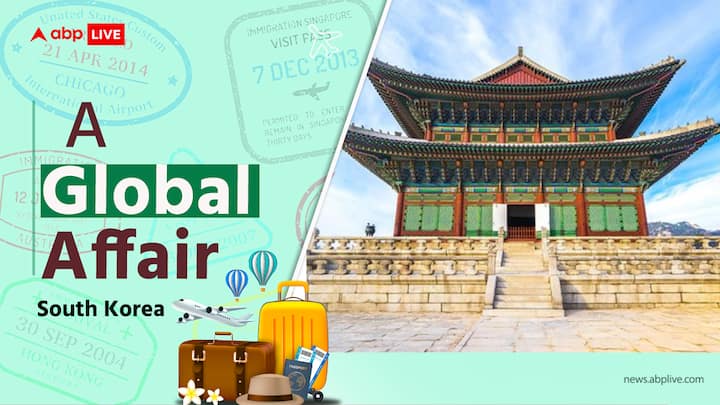
South Korea, in the past decade, has become a hotspot for Indian tourists, thanks to K-dramas and Korean music capturing the hearts of many. More and more folks are choosing to go to South Korea instead of other main foreign destinations, attracted by its lively culture and modern charm. This place is a dream destination offering a whole bunch of experiences, stunning landscapes, and an incredible journey through culture and history. Apart from its beautiful national parks, majestic mountains, and cozy villages, there's something special about sleeping in traditional wooden houses and visiting rice paddies as guests of the locals.
If you are also eager to visit South Korea and do not know from where to start, don't worry – we've got you covered.
Know How To Apply For A South Korean Tourist Visa:
If you're planning a trip to South Korea during the upcoming vacation season, your first step should be to apply for a visa to enter the country. South Korea offers different categories of visas based on the purpose of travel, including short-term visits, medical treatment, study, professional work, and more. For leisure purposes, Indians can apply for the 'Ordinary Tourist Visa' category. To apply, you need to fill out the Visa Application Form (Form No. 17) and attach necessary documents such as ID proof and financial statements. For e-visa applications you need to submit:
- Scanned image files of passport pages, valid for at least 6 months with 2 blank pages for stamps
- Digital photograph (size 3.5cm x 4.5cm, front view, taken within the last 6 months)
- Visa application e-form through the Visa portal
- Documents for the status of stay
The processing time varies depending on the Embassy or Consulate, but it's advisable to submit a completed application at least 15 days before travel, but no earlier than three months.
If you need to stay longer than your visa allows, you can apply for a visa extension at the Immigration Office in South Korea, ideally four months before your current visa expires.
ALSO READ: The Unheard Echos Of Mt Everest: Litter, Garbage And Dead Bodies- Nepal Army Aims To Clean Up
South Korea’s New ‘Workcation Visa’:
South Korea has introduced a new 'workcation' visa from January 1, 2024, with the aim of attracting digital nomads and boosting tourism. This visa allows foreign workers and their families to stay in the country for up to two years, which is a big change from the previous visa policies. Earlier, foreigners could only get tourist visas or stay for less than 90 days.
To qualify for the workcation visa, applicants must work for a foreign company and have at least one year of experience in the same industry. They also need to have an annual salary of 84.96 million Won (approximately Rs. 52,07,728.75) and personal health insurance coverage of at least 100 million Won (about Rs. 61,45,119.92).
Travel Logistics:
South Korea is a year-round destination, so there isn't any particular 'best time' to visit. However, spring offers pleasant weather with minimal fluctuations, making it the most popular tourist season. Additionally, you can enjoy the beautiful cherry blossoms in full bloom during this time.
Winter in South Korea falls between December and March and can be quite chilly. If you enjoy snow adventure activities and prefer fewer crowds and cheaper accommodations, then winter is the ideal time for your travels.
For reaching the island nation, air travel is the most common option. Direct and layover flights are available from major Indian cities to Incheon International Airport in Seoul. Flight durations vary from 10 to 15 hours depending on layovers. Flight costs can range from ₹30,000 to ₹60,000 or more for round-trip tickets, depending on factors like airline, booking time, and travel dates.
If you're looking for a leisure trip on a cruise, you'll need to travel to China, Singapore, or Australia first, as there are no direct cruises from India to South Korea. This journey can take up to 2 weeks and cost up to lakhs.
Within the country, the public transport system is efficient and covers most areas. For affordable options, choose buses, subways, and trains, although taxis are also available but tend to be more expensive.
South Korea offers a range of accommodation options to suit different budgets and preferences. From luxury hotels in major cities to guesthouses and hostels catering to budget travellers, there's something for everyone. Booking websites and apps provide convenient ways to find and reserve accommodation according to your needs.
Also, it's advisable to exchange currency at banks or authorised exchange counters for the best rates and avoid unlicensed currency exchangers. The currency of South Korea is the South Korean Won (KRW). As of now, 1 Indian Rupee is approximately equal to 16 South Korean Won. Major credit cards are widely accepted, especially in urban areas, but it's always good to carry some cash for smaller transactions or in rural areas.
Korean is the official language of the island nation, but you'll also encounter people who speak English and Japanese. However, knowing a few Korean phrases can make your trip smoother. For example, 'Annyeonghaseyo' means hello, and 'gamsahabnida' means thank you. You're likely learn more Korean as you go, but having these basics can be helpful along the way.
What To Explore:
The south-east nation offers its visitors a diverse range of experiences- from stunning landscapes to rich cultural and historical journeys. In cities like Seoul and Busan, modern skyscrapers dominate the skyline, while UNESCO Heritage Sites like The Hahoe Folk Village showcase traditional Korean culture.
You can begin your exploration in Seoul, the bustling capital where ancient palaces blend with modern architecture and then go on to visit the historic Gyeongbokgung Palace. In addition, the trendy Gangnam is also a place worth visiting. For those who love to explore local cuisine and street food, you can do so at Gwangjang Market.
Jeju, known as the 'Island of the Gods,' offers volcanic landscapes and beautiful beaches, while Hallasan National Park and Seongsan Ilchulbong Peak offer breathtaking views.
In Busan, South Korea's second-largest city, you can explore maritime history and scenic coastlines, discover the colourful Gamcheon Culture Village, relax at Haeundae Beach and hike to historic sites like Beomeosa Temple and Taejongdae Park for panoramic vistas.
An interesting thing awaits in Gyeongju, known as the 'Museum Without Walls,' where UNESCO-listed sites like Bulguksa Temple and Yangdong Village offer insight into Korea's ancient kingdom of Silla.
You can also immerse yourself in the vibrant tapestry of traditional Korean customs at the Korean Folk Village as it offers an authentic glimpse into the country's cultural heritage.
Commonly referred to as the 'Land of the Morning Calm,' South Korea offers a captivating journey through time and culture. From bustling cities to serene landscapes, there's something for every adventurer to explore in this captivating country.
ALSO READ: Travel Sri Lanka: A Guide To Visas, Logistics And Must-Visits

Top Headline
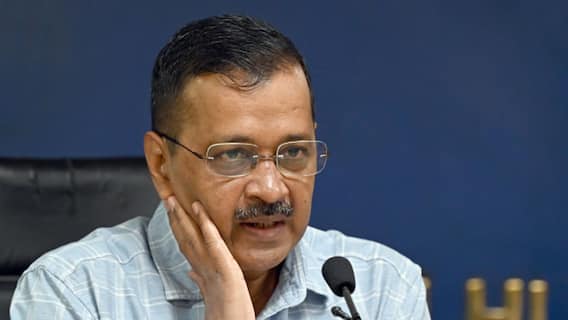
Trending News

Photogallery
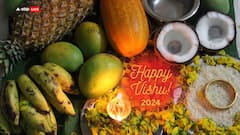
Trending Opinion
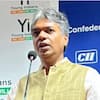
Personal Corner


IMAGES
VIDEO
COMMENTS
Basic Korean Travel Phrases Understanding These Essential Basic Korean Phrases. In this section I'll explain some of the Korean words from this list that will help expand your vocabulary. 주세요 (ju-se-yo) - Please. This is a very flexible word and can be used in many situations. It directly translates to 'please give me'. Add any ...
These 100+ Korean travel phrases will help you have a smooth, safe trip when you jet off to Korea. Know what to say for the essentials, including dining out, shopping, common courtesies and checking into your hotel. All of the phrases come with audio pronunciation, plus you'll also find some practical cultural notes!
Korean Travel Phrases. Pack your bags! We're hitting the road and going to put some of our Korean language skills to good use. Use these Korean travel phrases to help you speak with anyone you meet as you take trips throughout Korea. These travel survival phrases will help you have a fun and comfortable stay in South Korea.
23. Please give me (item) - (item) 주세요 - (item) ju-se-yo. 주세요 is a very important word and probably one of the five most important Korean words to know before coming to Korea. It simply means 'give me' and you can use it after almost any word. While in English 'please' is often said, you can omit this in Korean.
Mastering these easy conversational Korean phrases will undoubtedly take your travel experience to new heights. Plus, it will help you connect with locals on a deeper level. With these essential Korean words in your linguistic arsenal, you'll be well on your way to embracing and enjoying Korea's rich culture and warmth.
Don't feel overwhelmed. I will talk about secrets of learning these phrases fast down below. There's also a Free Korean Phrases PDF down below. But, to get you started… here are the most basic Korean phrases with audio you should know: 1. Hello (general greeting) 안녕하세요 (Annyeong haseyo). 2.
80 Korean Travel words and Phrases to brush up on your language skills. February 5, 2021. Smriti. It has always been believed that language is the most influential way to pervade native's hearts with your respect and care towards their culture. Mother tongue instinctively softens one's perspectives and makes them believe that the other ...
Both 미안해요 ( mianhaeyo) and 죄송해요 ( joesonghaeyo) are polite ways to say "I'm sorry" in Korean. They're nearly identical in usage and formality, but 죄송해요 ( joesonghaeyo) is a bit more polite. Like the other phrases, you can make this more polite by changing haeyo to habnida, the more formal verb ending.
This phrase means "Please take me to ~.". This travel phrase is the most effective and simple phrase to tell your taxi driver. Simply add the destination that you want to reach, such as " Insadong " (인사동; insadong) or " Dongdaemun " (동대문; dongdaemun) etc., followed by 으로 가주세요. ( ~euro gajuseyo. ).
Basic Korean Words For Travel. When traveling to Korea, it's important to know some basic Korean phrases to communicate with locals. "안녕하세요 (annyeonghaseyo)" is a polite greeting to say "Hello." "감사합니다 (gamsahamnida)" means "Thank you," and "실례합니다 (sillyehamnida)" is the Korean word for ...
Basic Korean Phrases for South Korea Travel. It's important to note that Koreans use different verb conjugations depending on the person they are speaking to. The different conjugations imply various levels of respect and politeness. For the purpose of traveling in Korea, it's okay to use either the formal or polite form of the verb, and that's ...
These 6 different sections are as follows: Table of Contents. 1: Basic Korean Words & Phrases. 2: Greetings and Introduction. 3: Korean Words when Dining. 4: Korean words for Navigating around. 5: Korean Phrases to Help You when shopping In Korea's Markets. 6: Emergencies - Essential Korean Phrases When In Need.
Korean Phrases for Travel. Use these survival Korean phrases and questions to help you navigate around the cities in South Korea. These will be especially helpful when asking for and giving directions. Asking For Directions. If you don't have Korean friends, below are helpful expat phrases that you can use to ask for directions while you stay ...
To make the most out of your trip to South Korea, it's important to know how to ask for assistance in Korean. Here are three phrases that may come in handy: "숙소를 찾고 있어요." (Sugso-reul chaj-go i-sseo-yo.) - This means "I'm looking for accommodations"and can be useful when asking locals for help finding a place to stay.
Korean Phrases for Travel. It's true that as travelers, you get by with a lot more things than the locals. But when it comes to phrases in the local language, wrong pronunciations won't always fly. So let's get a few points out of the way first.
This article aims to provide you with some useful travel terms and common phrases in Korean. Both for travelers and for beginning language learners, this is your language guide and travel bible in its easiest form possible. Basic Korean Phrases for Travelers General travel terms and phrases. There are many ways things can be said in Korean.
The Hallyu culture or Korean wave has taken the world by storm. From K-pop and K-drama to K-beauty and K-travel, it would be an advantage if you understand (or master!) some basic Korean words and phrases.
15 Basic Korean Words and Phrases. You'll probably use some of the most basic Korean phrases for any conversation. Here are some words and phrases to get you ready for your first-and any-conversation: Hello: 안녕하세요 ( annyeong haseyo) Yes: 네 ( ne) or 예 ( ye) No: 아니요 ( aniyo) Maybe: 아마도 ( amado)
Listen to and practice saying the most essential travel phrases in Korean in this free lesson!We have a detailed book for you if you are interested in travel...
Her interests also include food, history and travel. Published on Oct 27, 2023. 6 min. Share. Listen. Are you planning a trip to Korea? Very good choice! ... Read on for your essential beginner's guide to Korean phrases and words, that will help you to have the best experience, impress the locals and better understand Korean culture in the ...
In this article, we will share to you Basic Korean language, (Korean phrases basic) sentences for solo travel and daily life in korea. Here's the comprehensive list of basic Korean phrases that you'll need to join in on the fun and converse in Korean.This is the up-to-date modern version of how Koreans actually talk, so it will be useful if you want to learn how to speak Korean.
42 Essential Korean Phrases for Travel: A Comprehensive Guide for Beginners. June 2, 2023 Mastering Emotions in Korean: 38 Powerful Tips and Phrases. Subscribe to our newsletter and stay updated on the latest Korean language learning resources, tips, and insights! Join our community of language enthusiasts today. First Name:
Korean phrases are very easy to learn. The Korean language is surprisingly easy to learn, but for those looking for a quick guide to Korean phrases to know, SEOULSPACE has just the infographic for you.These ten phrases are pretty much all you need to know if you are traveling to Korea for a short period of time.It will only take about 1-2 hours to fully memorize these Korean phrases.
South Korea: Visa Application To Travel Checklist- An Indian Traveller's Guide To Explore This Country ... Language: Korean is the official language of the island nation, but you'll also encounter people who speak English and Japanese. However, knowing a few Korean phrases can make your trip smoother. For example, 'Annyeonghaseyo' means hello ...